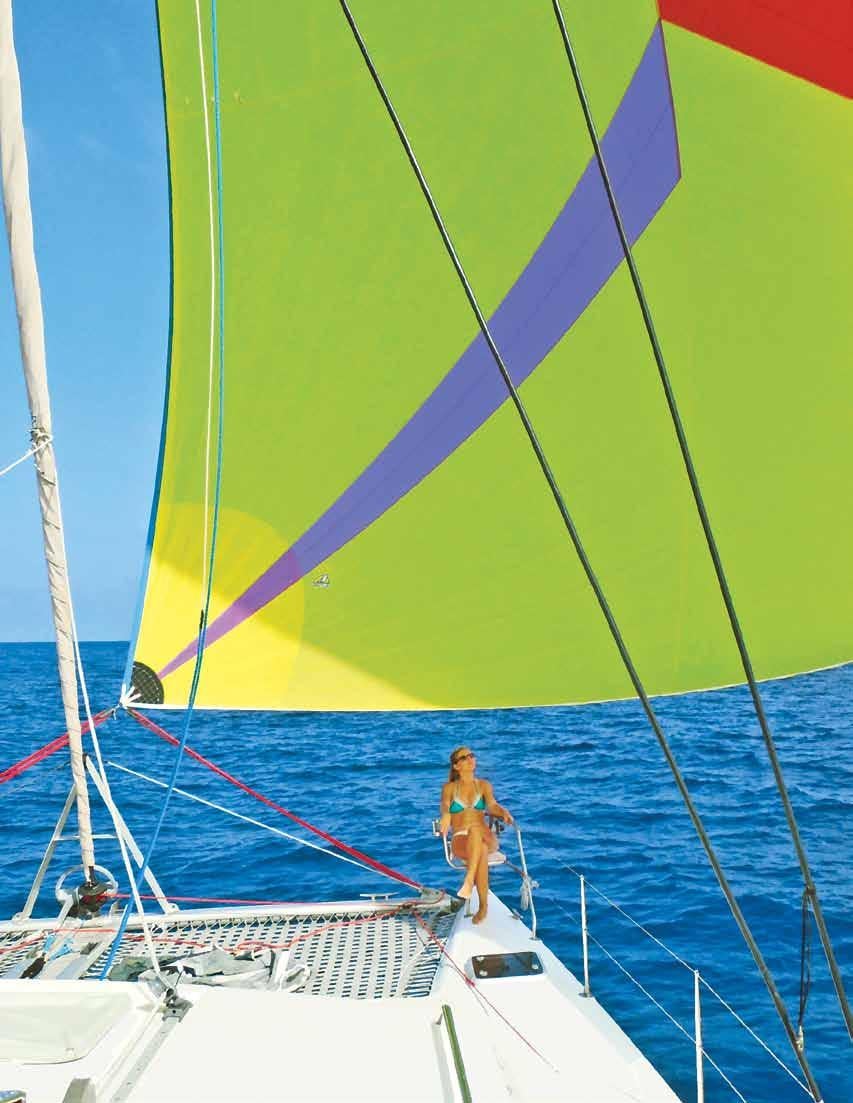

WAKE UP TO A NEW YEAR AT GRAND MARINA

F Prime deep water double-fingered concrete slips from 30’ to 100’.
F Great Estuary location in the heart of beautiful Alameda Island.

F Complete bathroom and shower facility, heated and tiled.
F Free pump-out station open 24/7.
F Full-service Marine Center and haul-out facility.
F Free parking.
F Free on-site WiFi. And much more...
Directory of Grand Marina Tenants
Must Have Been the Sails
Must Have Been the Sails
Star Power
Star Power
SHOW TIME!
1000
The Strictly Sail Pacific Boat Show has moved to a new location at the Craneway Pavilion in Richmond and Pineapple Sails will be there!
That title was the Monday morning email from Rich Craig, having just won his double-handeddivisionofthisspring’sSinglehandedSailingSociety’sCorinthianrace. , placed first by four seconds in front of Glenn Isaacson’s



stop by booth #L1/3/5 to get a sail quote and talk about the best in sail material, sail hardware, batten systems, and sailing gear. We’ll be offering a 10% discount on Musto foul weather gear and accessories.
at 10% off. And next to us, Dubarry will have the ultimate in sailing footwear. If you can’t make the show, Musto, Dubarry and Spinlock are always on display
the aisle, Spinlock will be showcasing the best lifejackets available, also


The Strictly Sail Pacific Boat Show has moved to a new location at the Craneway Pavilion in Richmond and Pineapple Sails will be there! Please stop by booth #L1/3/5 to get a sail quote and talk about the best in sail
at our sail loft in Alameda — come visit! Whether you are preparing for the Pacific Cup Race, Bay and Ocean racing, or
material, sail hardware, batten systems, and sailing gear. We’ll be offering a 10% discount on Musto foul weather gear and accessories. Across the aisle, Spinlock will be showcasing the best lifejackets available, also
heading out the Gate and turning left, we can help with the best in sails and gear.
at 10% off. And next to us, Dubarry will have the ultimate in sailing footwear. If you can’t make the show, Musto, Dubarry and Spinlock are always on display
ATrueFishStory
ATrueFishStory
Rich’s carbon main and jib from Pineapple Sails are the result of many hours of thoughtful sail development. Rich picked up his new sails on Friday, raced on Saturday, and won! For well-thought-out sails for your boat, built from start to finish right here in Alameda, give us a call today.
Upon his return, Jim added a bow sprit and asymmetrical spinnaker from Pineapple Sails to his inventory. Brightly colored, thanks to Jim’s wife Jamie’s design, the sail has wind at speeds he never saw before. Racing or cruising, sailing is just that much better with sails that perform and endure. Pineapple Sails.
Upon his return,
void star* YOUR DEALER FOR: Musto foul weather gear, Dubarry footwear, and Spinlock Deckwear Sails in need of repair may be

Q (alsopoweredbyPineappleSails).
at
at our sail loft in Alameda — come visit! Whether you are preparing for the Pacific Cup Race, Bay and Ocean racing, or
heading out the Gate and turning left, we can help with the best in sails and gear.

YOURDEALERFOR:Mustofoulweathergear,Dubarryfootwear,andSpinlockDeckwear SailsinneedofrepairmaybedroppedoffatWestMarineinOaklandorAlameda and at Morrison Marine in Rancho Cordova. Like us on Facebook.
withJonathanOgletravelledtoMainetopurchaseasmall,classicdaysailorandbringWest,idealforsailing youngchildrenandfriends.Theboatwasnotideal(toocrampedandsmall)andinsteadhefound thehisPisces21,hull#1,stillunderconstruction.Itsuitedhimperfectly.Thefindwasserendipitous;hence Jonathan’snameSerendipitychoiceofsailmakerswas“abitmoredeliberate.”HechosePineappleSailsbecauseover43Serendipityyearswehavedevelopedanexcellentreputationandoursailsaremadelocally,inAlameda.sailsweeklyoutofAlamedaMarina,withJonathan’sfriends,familyandcolleguesonboard.
he never saw before.
Rich’s carbon main and jib from Pineapple Sails are the result of many hours of thoughtful sail development. Rich picked up his new sails on Friday, raced on Saturday, and won! For well-thought-out sails for your boat, built from start to finish right here in Alameda, give us a call today.
YOURDEALERFOR:Mustofoulweathergear,Dubarryfootwear,andSpinlockDeckwear SailsinneedofrepairmaybedroppedoffatWestMarineinOaklandorAlameda and at Morrison Marine in Rancho Cordova. Like us on Facebook.
is
BY SUSAN WOLCOTT FaxPhone(510)522-2200 (510)522-7700 2526www.pineapplesails.comBlandingAve.,Alameda,California94501
RichardToquote:“Innormallifeashore,Iamaregularlooking,middle-agedguy…On Gere,RudolfNureyevandtheGreatGatsbyallrolledupintoone.”
ThePisces21isaspecialboat(modeledafterNathanialHerreshoff’s1916Fish),abeautifully-crafted, gocold-moldedwoodensloop.Sailsforsuchaboatrequirerealcraftsmanship.Andyoudon’thaveto PineappleanyfartherthanAlamedatofindasailmakerthatcanbuildcarefully-craftedanddesignedsails. Sails–giveusacall.



Serendipity* withJonathanOgletravelledtoMainetopurchaseasmall,classicdaysailorandbringWest,idealforsailing youngchildrenandfriends.Theboatwasnotideal(toocrampedandsmall)andinsteadhefound thehisPisces21,hull#1,stillunderconstruction.Itsuitedhimperfectly.Thefindwasserendipitous;hence Jonathan’snameSerendipity
YOURDEALERFOR:Mustofoulweathergear,Dubarryfootwear,andSpinlockDeckwear SailsinneedofrepairmaybedroppedoffatWestMarineinOaklandorAlameda and at Morrison Marine in Rancho Cordova. Like us on Facebook.

YOURDEALERFOR:Mustofoulweathergear,Dubarryfootwear,andSpinlockDeckwear SailsinneedofrepairmaybedroppedoffatWestMarineinOaklandorAlameda andatMorrisonMarineinRanchoCordova. LikeusonFacebook.
(1000 words)
choiceofsailmakerswas“abitmoredeliberate.”HechosePineappleSailsbecauseover43Serendipityyearswehavedevelopedanexcellentreputationandoursailsaremadelocally,inAlameda.sailsweeklyoutofAlamedaMarina,withJonathan’sfriends,familyandcolleguesonboard.Toquote:“Innormallifeashore,Iamaregularlooking,middle-agedguy…OnSerendipity,webecome TheRichardGere,RudolfNureyevandtheGreatGatsbyallrolledupintoone.” cold-moldedPisces21isaspecialboat(modeledafterNathanialHerreshoff’s1916Fish),abeautifully-crafted, woodensloop.Sailsforsuchaboatrequirerealcraftsmanship.Andyoudon’thaveto PineapplegoanyfartherthanAlamedatofindasailmakerthatcanbuildcarefully-craftedanddesignedsails. Sails–giveusacall.
YOURDEALERFOR:Mustofoulweathergear,Dubarryfootwear,andSpinlockDeckwear SailsinneedofrepairmaybedroppedoffatWestMarineinOaklandorAlameda andatMorrisonMarineinRanchoCordova. LikeusonFacebook.
season brought successes in spades to Pineapple powered boats. Racers and cruisers alike found that dealing with Pineapple Sails brings results: sails that perform and endure.
season offers new opportunities for mastering the many techniques of sailing. New Pineapple sails and the advice and service that go with them stack the deck in your favor.





































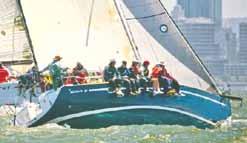












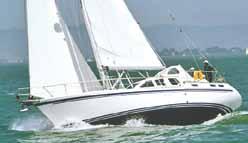
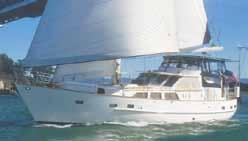


CALENDAR
Non-Race
Dec. 30-Feb. 12 — The tall ships Hawaiian Chieftain and Lady Washington will be in Long Beach through 1/3; Dana Point, 1/5-16; Oxnard, 1/19-23; Ventura, 1/25-2/12. Info & tickets, (800) 200-5239 or www.historicalseaport.org. Dec. 31-Jan. 28 — Sailing in Access Dinghies, 10 a.m., every Saturday with BAADS at South Beach Harbor in San Francisco. Free. Info, (415) 281-0212 or www.baads.org
Jan. 1-29 — Veterans' Sail, 10 a.m., and Keelboat Sail, noon, every Sunday with BAADS at South Beach Harbor in San Francisco. Free. Info, (415) 281-0212 or www.baads.org.
Jan. 4-25 — Wednesday Yachting Luncheon Series, StFYC, 12-2 p.m. Lunch and a dynamic speaker each week for about $25. All YCs' members welcome. Info, www.stfyc.com.
Jan. 4-25 — San Diego's South Bay Sea Scouts meet aboard the schooner Bill of Rights at Chula Vista Marina on Wednesdays at 7 p.m. Sea Scouts is for guys & gals ages 1320. John, (619) 852-7811 or mossfish@gmail.com
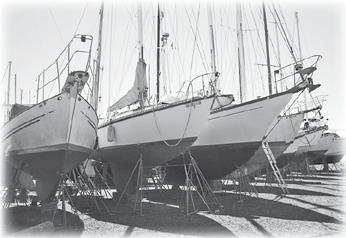
Jan. 11-15 — Portland Boat Show, Portland Expo Center. New & pre-owned boats; kids' boatbuilding. $10; free for kids 12 and under; 2-for-1 coupons at www.otshows.com
Jan. 12 — Sail under the full moon on a Thursday.
Jan. 12 — The Corinthian Speaker Series presents solo rower Lia Dutton, who will attempt to be the first woman to row 5,500 miles from Japan to S.F. in May. Free & open to the public, but RSVP to (415) 435-4771. Info, www.cyc.org
Jan. 12 — Single Sailors Association monthly meeting, Ballena Bay YC, Alameda. Social hour at 6:30 p.m.; dinner, 7 p.m.; meeting, 7:30. Info, www.singlesailors.org
Jan. 14 — US Sailing Coastal Safety at Sea Seminar, Bahia Corinthian YC, Corona del Mar, 8 a.m.-noon. $75 includes continental breakfast. Info, www.bcyc.org/event/safety-at-sea
Jan. 16 — Martin Luther King Jr. Day.
Jan. 16 — Through Our Eyes: Stories from the Long Road to Civil Rights in the Bay Area features rangers discussing African-American struggles. Hyde St. Pier entrance, S.F., noon-3 p.m. Free, but RSVP at www.tinyurl.com/MLKJRSF Jan. 19-22 — Los Angeles Boat Show, Fairplex, Pomona. $15/adults. Info, www.losangelesboatshow.com
Jan. 20-21 — Offshore Safety at Sea Seminar with Handson Training, San Diego YC, 8 a.m.-5 p.m. Two days (ISAF): $300; one day: $200; includes breakfast & lunch. Info, www. sailaweighllc.com/product-category/safety-at-sea-seminar
Jan. 24 — North U 2017-2020 Racing Rules seminar with Dave Perry, Long Beach YC, 7-9 p.m. $10/members; $20/ non-members. Info, (562) 598-9401 or www.lbyc.org.
Jan. 26-29 — San Diego Boat Show, Sunroad Marina. New & used yachts; vendors, food & drink, boat rides, seminars. $13; kids 12 & under free. Info, www.bigbayboatshow.com.
Jan. 27-Feb. 4 — Seattle Boat Show Indoors + Afloat, South Lake Union & CenturyLink Field. With 1,000+ watercraft. $14/ adults; $5/youth 11-17; free/kids 10 & under; $28/five-day pass. Info, (206) 634-0911 or www.seattleboatshow.com
Jan. 28 — North U 2017-2020 Racing Rules seminar with Dave Perry, Lido Isle YC, Newport Beach, 8:30 a.m.-4:30 p.m. $60-$135 includes lunch. Info, www.northu.com
Jan. 28-29 — Latitude's Andy Turpin presents 'Baja Ha-Ha How-To', 2 p.m., and 'Cruising Tahiti and the Pacific Puddle Jump', 3 p.m., at the Seattle Boat Show, CenturyLink Field. Free with show admission. Info, www.seattleboatshow.com.
Jan. 28-29 — Whalefest Monterey, Old Fisherman's Wharf, 10 a.m.-5 p.m. Info, www.montereywharf.com.
Feb. 4 — Women's Sailing Convention, Bahia Corinthian YC, Corona del Mar. Ladies-only shore- and boat-based workshops. $215 includes breakfast & lunch. Prepaid









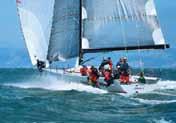







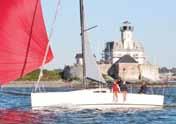
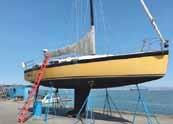




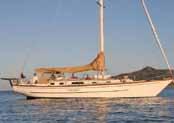

CALENDAR

required. SCYA, www.womenssailingconvention.com.
Feb. 10-12 — North U S.O.D.A. Youth Match Racing Clinic, SDYC. Coached by Dave Perry. $75 includes dinner Friday & Saturday nights and use of a J/22. Info, www.sdyc.org Feb. 12 — The Corinthian Speaker Series presents Dirk Rosen of Marine Applied Research & Exploration, with footage shot from a robotic submersible. Free & open to the public, but RSVP to (415) 435-4771. Info, www.cyc.org/club/speaker
Racing
Jan. 1 — Master Mariners New Year's Day Race. Clipper Cove to Pt. San Pablo YC. MMBA, www.mastermariners.org Jan. 1 — New Year's Day Race on San Diego Bay. Free. SDYC, www.sdyc.org. Jan. 1 — Frostbite Regatta on Lake Yosemite. LYSA, www. lakeyosemitesailing.org
Jan. 7-8 — California Dreamin' Series match-racing stop #1, to be sailed in J/22s in San Diego. SDYC, www.sdyc.org
Jan. 28 — Three Bridge Fiasco. Bay-tour pursuit race for single- and doublehanders. SSS, www.sfbaysss.org. Feb. 4, 11 — Spring Series #1 & #2 on Folsom Lake. FLYC, www.flyc.org.
Feb. 11 — Singlehanded/Doublehanded Race #1. SeqYC, www.sequoiayc.org
Feb. 11-12 — NorCal Divisional #2 high school regatta, hosted by PYSF. Info, www.bayarea-youthsailing.com
Feb. 11-12 — BAYS Opti Regatta, hosted by EYC on the Estuary. Info, www.bayarea-youthsailing.com.
Midwinter Series
BAY VIEW BOAT CLUB — Midwinter Madness: 1/14, 2/11, 3/11. Info, www.bvbc.org
BENICIA YACHT CLUB — Frostbite Series: 1/7, 2/4, 3/4. Dan, (707) 319-5706 or race@beniciayachtclub.com
BERKELEY YC — Midwinters: 1/14-15, 2/11-12; Champion of Champions: 2/26. Bob, (510) 530-4162; Bobbi, (925) 939-9885; or www.berkeleyyc.org
BERKELEY YC — Chowder Races: Sundays through March except when it conflicts with the above. Paul, (510) 540-7968 or www.berkeleyyc.org
CAL SAILING CLUB — Year-round Sunday morning dinghy races, conditions permitting, intraclub only, typically in Laser Bahias and JY15s. Info, www.cal-sailing.org
CORINTHIAN YC — Midwinters: 1/21-22, 2/18-19. Info, www.cyc.org or cycrace@cyc.org
COYOTE POINT YC — Winter Buoy Races: 1/8, 1/22, 2/12, 2/26, 3/12, 3/26. Info, www.cpyc.com
ENCINAL YC — Jack Frost Series: 1/21, 2/25, 3/18. Info, (510) 522-3272 or www.encinal.org.
GOLDEN GATE YC — Manuel Fagundes Seaweed Soup Series: 1/7, 2/4, 3/4. Info, (510) 926-2441 or www.ggyc.com
ISLAND YC — Island Days on the Estuary: 1/8, 2/12, 3/12. John, (510) 521-2980 or www.iyc.org
KONOCTI BAY SC — OSIRs (Old Salts in Retirement) every Wednesday at noon. Info, www.kbsail.com
LAKE MERRITT SAILING CENTER — Robinson Midwinters: 1/15, 2/11, 3/12. Peggy, (510) 836-1805.
MONTEREY PENINSULA YC — Perry Cup/Midwinters: 1/7, 2/4. Info, www.mpyc.org
OAKLAND YC — Sunday Brunch Series: 1/15, 1/22, 1/29, 2/19, 2/26, 3/19, 3/26. Debby, (510) 390-1620 or www. oaklandyachtclub.net.
REGATTAPRO — Winter One Design: 1/14, 2/11. Jeff, (415) 595-8364 or www.regattapro.com
RICHMOND YC — Small Boat Midwinters (Sundays): 1/8,


Our patented woven Vectran® sailcloth performs like the laminates with the durability of Dacron®, especially in roller furling applications. In fact, Vectran® is lighter, lower stretch, and retains its shape over a longer life than any sailcloth we've ever offered to cruising sailors. That's because Hood Vectran® is woven, not laminated to Mylar® film. And you can be sure that each sail we roll out is built by hand, with the same care and craftsmanship that has been the Hood hallmark for 50 years. To discuss your sailcloth needs – whether our state-of-the-art Vectran® or our soft, tight-weave Dacron® – give us a call today.



 Chesapeake Jim Fair's Outbound 46 with Hood Vektron Full Batten Mainsail, 140% Genoa, and Solent Jib
PHOTO COURTESY SWIFTSURE YACHTS www.OutboundYachts.com
Chesapeake Jim Fair's Outbound 46 with Hood Vektron Full Batten Mainsail, 140% Genoa, and Solent Jib
PHOTO COURTESY SWIFTSURE YACHTS www.OutboundYachts.com
CALENDAR












2/5, 3/5. Optis & El Toro Green Fleet (Saturdays): 1/7, 2/4, 3/4. Info, www.richmondyc.org.
SAN FRANCISCO MODEL YC — Victoria one-design radiocontrolled races every Wednesday afternoon year-round at Spreckels Lake in Golden Gate Park. Info, www.sfmyc.org.
SANTA CRUZ YC — Midwinters: 1/21, 2/18, 3/18. Info, (831) 425-0690 or www.scyc.org.
SANTA ROSA SC — Spring Lake Winter Series: 1/22, 2/19, 3/19, 4/9. Info, www.santarosasailingclub.org
SAUSALITO YC — Chili Midwinters: 1/8, 2/5, 3/5. Info, www.sausalitoyachtclub.org or race@sausalitoyachtclub.org
SEQUOIA YC — Winter Series: 2/4, 2/18, 3/18 (St. Patrick's Day Race). Redwood Cup pursuit race series: 1/21, 2/25, 3/11. Info, www.sequoiayc.org
SOUTH BEACH YC — Island Fever Midwinters: 1/28, 2/25, 3/18. Info, www.southbeachyc.org.
TIBURON YC — Midwinters: 1/7, 2/4, 3/4. Info, race@ tyc.org or www.tyc.org.
VALLEJO YC — Tiny Robbins Midwinters: 1/21, 2/18, 3/18. Info, (707) 643-1254 or www.vyc.org
In the Tropics
Jan. 15-20 — Quantum Key West Race Week. Storm Trysail Club, www.keywestraceweek.com.
Jan. 16-24 — Mt. Gay Rum Round Barbados Race Series. Barbados CC, www.mountgayrumroundbarbadosrace.com.
Jan. 24-Feb. 3 — Conch Republic Cup/Key West Cuba Race Week. Info, www.conchrepubliccup.org
Jan. 30-Feb. 4 — Grenada Sailing Week. Grenada Sailing Association, www.grenadasailingweek.com
Feb. 2-5 — Antigua Superyacht Challenge. Antigua YC, www.superyachtchallengeantigua.com.
Feb. 3-10 — Pineapple Cup, Miami to Montego Bay, Jamaica. Info, www.pineapplecup.com.
Feb. 17-21 — Cuba Cup, Montego Bay to Havana, Cuba. Info, www.pineapplecup.com
Feb. 20-24 — RORC Caribbean 600, with starts and finishes in Antigua. Info, www.caribbean600.rorc.org
Feb. 28-Mar. 4 — Banderas Bay Regatta. Friendly racing for cruisers in Mexico. Info, www.banderasbayregatta.com.
Mar. 1-5 — Rolex Swan Cup Caribbean in Virgin Gorda. Costa Smeralda YC, www.yccs.it.
Mar. 2-5 — St. Maarten Heineken Regatta. World-class racing. St. Maarten YC, www.heinekenregatta.com
Mar. 6-7 — 50th Anniversary Regatta BVI in Virgin Gorda. Costa Smeralda YC, www.yccs.it.

Mar. 10-13 — Loro Piana Caribbean Superyacht Regatta and Rendezvous in Virgin Gorda. Costa Smeralda YC, www. loropianasuperyachtregattaandrendezvous.com.
Mar. 10-16 — Newport Beach to Cabo San Lucas International Yacht Race. NHYC, www.nhyccaborace.com.
Mar. 13-April 7 — Cruisers Rally to El Salvador. A spring rendezvous in Bahia del Sol. Info, www.elsalvadorrally.com.
Mar. 14-18 — Miami to Havana Race. Info, (386) 437-9400 or www.havanarace.org
Mar. 16-19 — St. Barths Bucket Regatta. St. Barths YC, www.bucketregattas.com/stbarths.
Mar. 23 — Round the Rocks Race in USVI. St. Thomas YC, www.stthomasinternationalregatta.com
Mar. 24-26 — St. Thomas International Regatta in USVI. St. Thomas YC, www.stthomasinternationalregatta.com.
Mar. 27-Apr. 2 — BVI Spring Regatta & Sailing Festival. Royal BVI YC, www.bvispringregatta.org.
Mar. 29-Apr. 2 — La Paz Bay Fest for cruisers, Sea of Cortez. Club Cruceros de La Paz, www.clubcruceros.net








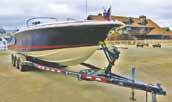














Farallone Yacht Sales, proud Northern California dealer for Catalina sailboats, also offers a quality selection of pre-owned sail and power boats in our brokerage. Visit www.faralloneyachts.com for more information.

Apr. 10-15 — Les Voiles de St. Barth. St. Barths YC, www. lesvoilesdesaintbarth.com.
Apr. 13-17 — Bequia Easter Regatta, Windward Islands. Bequia Sailing Club, www.bequiaregatta.com.
Apr. 19-25 — Antigua Classic Yacht Regatta. Antigua YC, www.antiguaclassics.com.
Apr. 28-30 — Newport to Ensenada Race. NOSA, www. newporttoensenada.com.
Apr. 29-May 5 — Antigua Sailing Week. Antigua Sailing Association, www.sailingweek.com.
May 23-27 — Tahiti Pearl Regatta. International fleet racing. Info, www.tahitipearlregatta.org.pf.
June 10-12 — Puerto Rico Heineken International Regatta. Puerto del Rey, www.heinekenregattapr.com.
June 23-25 — Tahiti-Moorea Sailing Rendez-vous, with Latitude 38. Info, www.tahiti-moorea-sailing-rdv.com.
July 3-21 — Los Angeles-Honolulu Transpacific Yacht Race. Info, www.transpacyc.com.
Please send your calendar items by the 10th of the month to calendar@latitude38.com. If you're totally old-school, mail them to Latitude 38 (Attn: Calendar), 15 Locust Avenue, Mill Valley, CA, 94941, or fax them to us at (415) 383-5816. But please, no phone-ins! Calendar listings are for marine-related events that are either free or don't cost much to attend. The Calendar is not meant to support commercial enterprises.
January Weekend Tides
Catalina 445 3-cabin, 2017 296,362 42.5’ Catalina 425, 2017
mid-February 38’ Catalina 385, 2017 218,396 35’ Catalina 355, 2017 185,500 31’ Catalina 315, 2017 129,831
Pre-Owned Catalina Yachts
47’ Catalina 470 Tall Rig, 2006 299,000 37.4’ Catalina 375, 2010 189,000 37.4’ Catalina 375, 2009 169,000 34’ Catalina, 1986 NEW LISTING 47,500 27’ Catalina, 1979 15,500
25’ Catalina 250 MkII, 2007 26,500 22’ Catalina Capri 22, 2007 16,000
Pre-Owned Sailing Yachts
52’ Tayana 52, 1987 253,900
date/day time/ht. time/ht. time/ht. time/ht.
HIGH LOW HIGH LOW 12/31Sat 0126/4.9 0606/2.8 1206/5.9 1845/-0.6 1/01Sun 0206/4.9 0648/2.9 1245/5.7 1925/-0.5 1/07Sat 0632/6.1 1317/0.6 1955/4.2
LOW HIGH LOW HIGH 1/08Sun 0043/2.0 0723/6.5 1413/-0.1 2107/4.5
HIGH LOW HIGH LOW 1/14Sat 0118/5.5 0614/2.3 1216/6.3 1852/-0.9 1/15Sun 0201/5.5 0708/2.3 1304/5.8 1934/-0.4 1/21Sat 0626/5.5 1328/1.0 2015/3.8
LOW HIGH LOW HIGH 1/22Sun 0048/2.6 0711/5.6 1417/0.6 2116/4.1
45' Norseman 447, 1984
SOLD 33' Hunter 336, 1995 NEW LISTING 54,000
New Ranger Tugs (base price)
31’ Ranger 31 Command Bridge, 2017 279,937



31’ Ranger 31 Sedan, 2017 269,937
29’ Ranger Command Bridge, 2017 NEW MODEL 224,937
29’ Ranger 29 Sedan, 2017 209,937
27’ Ranger 27, 2017 159,937
25’ Ranger 25SC Tug, 2017 129,937
23’ Ranger 23 Tug, 2017 NEW MODEL 94,937
21’ Ranger 21EC Tug, 2017 49,937
Pre-Owned Ranger Tugs
29’ Ranger 29 Classic, 2010 REDUCED 149,500
25’ Ranger Tug Classic, 2009 95,000
Pre-Owned Power Yachts
32’ Carver 3207 Aft Cabin, 1984 REDUCED 41,500 28’ Protector Targa, 2007 SOLD
HIGH LOW HIGH LOW 1/28Sat 0021/4.9 0508/2.5 1114/6.1 1749/-0.6 1/29Sun 0053/5.1 0548/2.4 1154/6.0 1823/-0.6
January Weekend Currents
date/day slack max slack max

12/31Sat 0243 0523/2.2E 0829 1105/1.9F 1303 1654/3.8E 2115
1/01Sun 0330 0548/1.1E 0812 1148/2.6F 1412 1706/2.4E 2118
1/07Sat 0106 0454/3.2F 0800 1100/2.2E 1500 1748/2.3F 2100 2336/1.2E
1/8Sun 0200 0554/3.3F 0848 1154/2.5E 1606 1848/2.7F 2206
1/14Sat 0224 0506/1.5E 0806 1100/3.3F 1348 1700/2.6E 2100 2348/3.7F
1/15Sun 0312 0600/1.5E 0900 1154/3.0F 1442 1754/2.3E 2136
1/21Sat 0054 0436/2.4F 0812 1112/1.4E 1530 1812/1.7F 2124 2324/0.9E
1/22Sun 0136 0530/2.3F 0848 1154/1.5E 1618 1906/2.0F 2218
1/28Sat 0130 0400/1.2E 0624 1000/2.9F 1236 1536/2.3E 1948 2254/3.2F
1/29Sun 0206 0436/1.4E 0712 1042/3.0F 1324 1618/2.4E 2018 2330/3.3F















AIS INFO
LETTERS


⇑⇓ THE CASE OF THE DISAPPEARING AIS RETURNS
Based on my experience and that of others, I think Lunasea Lighting has a problem with their masthead tricolor lights interfering with AIS returns.
I did the Baja Ha-Ha with about 150 other boats, many of which had Class B active AIS systems. Because everyone was pretty much sailing a straight course, we had as many as 40 AIS returns on our chartplotter at one time. But after dark on the first night, I noticed that many of my AIS returns 'disappeared'. Interestingly enough, the returns that disappeared weren't the most distant ones, but were rather scattered throughout the fleet. It made me worry about the quality of my masthead installation.

However, during a later Ha-Ha party onshore, I was discussing the problem with a friend — when several others who were listening piped in and said they'd had the same experience. What we all had in common was a Lunasea tricolor bulb. The others had a Lunasea masthead fixture with the tricolor, strobe and anchor light, while I had a Lunasea bulb in my non-Lunasea masthead fixture.
It's not a good feeling when half of your AIS targets disappear after dark.
I later turned on my tricolor light and watched as about half — 20 of 40 — of the returns disappeared over the course of five minutes or so. Since class B AIS only transmits every few minutes, this would explain the gradual disappearance of the returns, since the chartplotter holds the AIS return until after the next or several polling periods have passed. When I turned off the tricolor, the returns reappeared over the course of about five minutes.
This is obviously a serious safety problem, and I'm wondering how Lunasea might help me address the issue. I have a pretty standard installation with my tricolor roughly in the center of my mast, and a Shakespeare VHF antenna mounted off to the side on a bracket attached to the side of the mast perhaps eight inches away. This is a common installation since it provides optimal propagation of the VHF signal. My radio does not share its power source with the tricolor except, of course, at the battery.
Michael Britt Footloose, Catana 471 Roy, NMReaders — As AIS has pretty much become the front line of defense against collisions with medium and large vessels, and as Lunasea is a very popular brand of masthead light, this is indeed a serious issue that everyone needs to be aware of. There may also be a problem with other brands of masthead bulbs.

⇑⇓ JEANNE TRIED, TRIED, AND WILL TRY AGAIN
As many Latitude readers know, my two attempts to start to improve on my nonstop singlehanded around-the-world time with my 38-ft Najad 380 Nereida did not go well. Let me explain why.
The problem I encountered with my two attempts — the first starting on October 19, and the second on November 13 — was getting down the West Coast from Victoria, BC. Very


LETTERS




deep lows kept sweeping east across the Pacific earlier than in most years. I'd sailed down to San Francisco from the Strait of Juan de Fuca several times in previous Octobers, having had good weather windows. There were no real windows this October and November. Soon after setting off both times, it was clear that I needed to make good time south to stay clear of very strong winds and seas heading east. But the light winds ahead of the strong weather prevented me from getting far enough south in time to avoid getting caught.
Lying to my Jordan series drogue (JSD) in winds of around 55 knots in October worked well in keeping my boat and me safe, despite one bridle arm's having lost its shackle. The pin was lost soon after deployment, resulting in Nereida's lying more to weather than she would have otherwise. She also swung around quite a bit, so we were occasionally hit by waves more or less on the beam. Fortunately, there was no damage since the waves were not breaking badly. Even though the cones ended up badly tattered, our eventual speed of 4 knots through the water was far less than it would have been without the JSD. That was a good thing.



As we were about 200 miles offshore, our heading was not a concern, and there seemed to be no shipping around. Unfortunately, the cones were damaged seriously enough for me to have to return to Victoria to replace the drogue. It also gave me a chance to have the staysail repaired, as the cloth had been teased out to a great extent, and was then torn badly in strong winds because it hadn't been furled tightly enough.
When I started from Victoria again on November 13, it initially looked as though there would be a good weather window. But another deep low caught up with us as we headed south, and there were also lots of strong — 40-45 knots — gusty conditions under big masses of clouds. Normally I would have hove to before the wind had gotten so strong, but we were headed downwind and I needed to get south as quickly as possible to try to avoid the worst of the oncoming low. As a result, I kept sailing in the strongest winds I've ever sailed in. It was encouraging for me to see how well the well-reefed Nereida sailed in such conditions.
If two major problems hadn't cropped up when I was well off the coast of San Diego, I was all set for a good onward passage south in excellent trade winds. The first problem was damage to the gooseneck, which wasn't going to be able to survive rough Southern Ocean conditions. The second problem was a hole that had developed in the exhaust elbow of my small generator, rendering the unit unusable. I had too little fuel aboard to use the main engine for battery charging the rest of
way around the world.
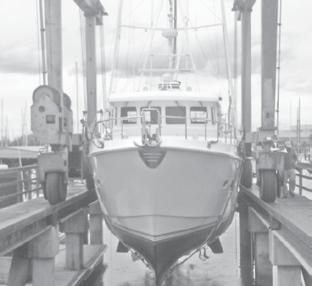


LETTERS

completed in San Diego, then cruise down to Mexico and relax for a few months. I'll head back to Victoria from Mexico in June before the start of the hurricane season, then make another record attempt starting from Victoria in September. An earlier start from Victoria will hopefully reduce the chance I'll get hit by the same kind of storms in the Northwest that I got hit by this year. However, I will have to keep an eye out for end-of-season hurricanes, as they normally head up the coast and then re-curve, finishing near the coast of Mexico, or even inland, later in the season. Earlier in the year they tend to head out to Hawaii.
Jeanne Socrates Nereida, Najad 380 San Diego Yacht Club
Readers — The Wanderer is a big fan of Jeanne and hopes they can spend some time together in Mexico going over hurricane tracks to make sure her September route south is the best one. The website www.weather.unisys.com has all the tracks of Eastern Pacific hurricanes since 1948 — although we're not sure how accurate the tracks could be from more than 20 years ago.

⇑⇓
IF NOT 'RECIPROCAL PRIVILEGE', THEN WHAT IS IT?
Thank you for noting, in the November editor's response to a letter, the variety of definitions of 'reciprocal privilege' between yacht clubs. Each club defines if and how a member of another club may be accommodated for berthing, meals, refreshments and other things. It may vary depending on a club's schedule, size, slip control, events, tradition, mutual access, or member preference. In other words, it varies broadly.
We understand why there may be some confusion as to what the terms 'reciprocal' and 'privilege' mean. However, it's hard to think of another term that would be less confusing, especially since generations of yacht club members have been accustomed to that term for over a century.
We do believe clubs are increasingly providing explanations on their websites, which helps clarify to what extent they do accommodate a member from another club.
The very best advice is to contact the club ahead of arriving to determine their individual policy.
 Shawn Milligan, Commodore Southern California Yachting Association Long Beach
Shawn Milligan, Commodore Southern California Yachting Association Long Beach
Shawn — We respect the tradition of the term 'reciprocal privilege' and weren't trying to be disruptive smart-asses. Nonetheless, we think a lot of misunderstandings come from the inaccuracy of the term when applied to relations between different yacht clubs.
What term would be better? The closest we can come up with is 'conditional accommodation'. While it is more accurate, we'd be the first to admit that the term isn't very elegant. No matter what anybody wants to call it, calling ahead, as you suggest, is the best advice.
⇑⇓ BRING ME UP TO SPEED ON THE AMERICA'S CUP
Like a lot of other sailors, I was disgusted that the America's Cup isn't returning to San Francisco Bay, where it was such a fantastic spectacle with the 72-ft monster cats. The fact that they'll be using glorified Hobie Cats for the upcoming Cup didn't help sustain my enthusiasm. Nor does the fact that the Cup will be sailed for outside the United States.
Nonetheless, I am a sailor, so I remain mildly interested. Can you fill me in on the basics of the 35th America's Cup











ACEA
LETTERS




that I've been so earnestly ignoring?
Hal Wilsonex-Pricilla, Cal 2-29 San Francisco
Hal — Sure. The 35th America's Cup will be held in Bermuda this spring/summer. The British Overseas Territory is all of 20 square miles, making it about 40% of the size of San Francisco. Approximately 20% of Bermuda is water. The island country has a population of 65,000. It will be interesting to see if the local population catches 'America's Cup Fever'.
The Louis Vuitton Series to eliminate Challengers will be from May 26 to June 12, while the America's Cup Match, pitting the Challenger against Golden Gate YC's Oracle Team USA, will be held June 17-18 and June 24-27.
The entry fee for the 2017 America's Cup was $2 million per team. The Challengers are: Land Rover BAR from the United Kingdom, Artemis Racing from Sweden, Groupama from France, Emirates Team New Zealand, and Softbank Team Japan.
As you'll recall, the 34th America's Cup on San Francisco Bay was sailed using the spectacular and majestic AC72s. The original plan for the 35th Cup was to use smaller AC62s, but that idea was met with a resounding lack of enthusiasm because of the perceived expense and danger. As a result, the six teams have been competing in one-design AC45Fs, which are foiling, wing-sailed 45-ft cats. Starting in 2015, the teams have raced these boats in Great Britain, Sweden, Bermuda, Oman, New York, Chicago, Portsmouth again, France, and Japan.
For the Challenger Series and Cup, each of the teams must build their own 49-ft foiling cat to a rule that will allow for limited innovation.
How do the 45-ft cats compare to the AC72s sailed on San Francisco Bay? As Aussie skipper Glenn Ashby of Emirates Team New Zealand remarked, it's like the difference between racing a Formula One car and racing a Toyota Corolla. Ouch!

This graphic shows how the 35th America's Cup has diminished from the 34th.
The 49-ft foiling cats will be incredibly fast, but on a Majesticity Scale of 1-10, they only rate about 2. This isn't your grandfather's America's Cup, so it's going to be interesting to see if the event can ever recover its once-burnished aura.
⇑⇓ BE A CITIZEN SAILOR/SCIENTIST

Thanks for the December article called Citizen Sailor/ Scientists about plastics in the oceans, what can be done to eliminate them, and how cruisers can help.

There's an additional way in which sailors can help. The Global Microplastics Initiative asks people traveling to remote lakes, rivers, and oceans to collect water samples so they can compile data regarding sources, composition and distribution of microplastics pollution. I just participated during a sail from Panama to Tahiti. We periodically took water samples and then sent them to the lab in Maine for analysis. Their website is www.adventurescience.org/microplastics.html
.
Dan Marshall Instructor, Club Nautique San Francisco Bay Area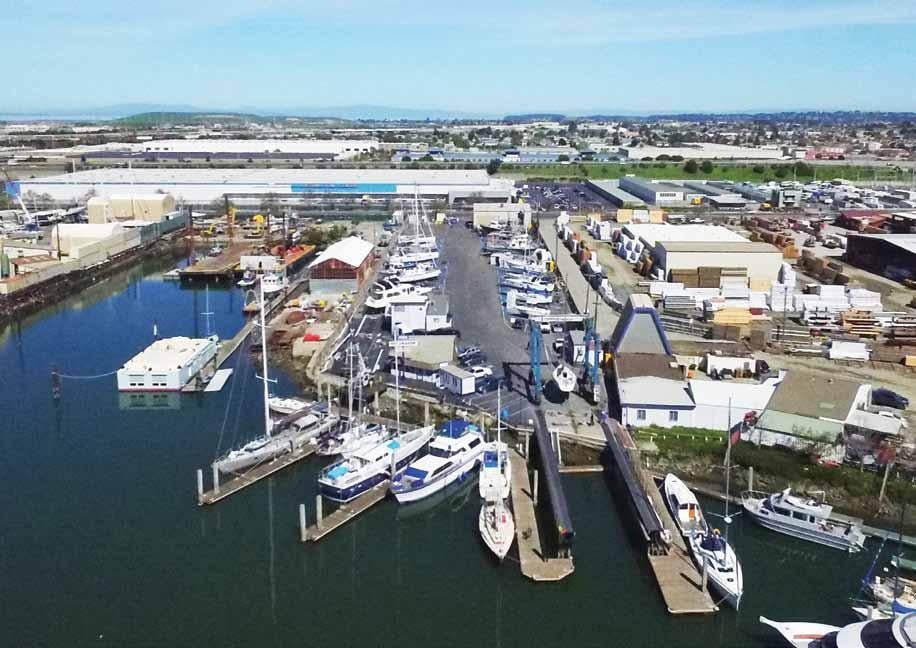

LETTERS
⇑⇓
THE MORE I SAIL, THE MORE I WANT TO SAIL
Cruisers are perfect partners in the Global Microplastics Initiative, as we can take samples in places that few people visit. This could be especially fun and useful if you are homeschooling kids onboard. We say check it out.
We're 18 months behind on our updates following our never-ending major refit in Thailand. We haven't even covered Borneo, the solar eclipse in Indonesia, or Taiwan yet. I have to give the Wanderer, and others, a lot of credit for writing as much as they do. The more I sail, the more I want to sail rather than write about sailing.
Most of the refit work is OK. Some total crap painting is failing already, but that's interior so it's more irritating than anything. We are still finding little things they did wrong, and we're still finding blue tape here and there even though we hired people to remove it all. The exterior paint is doing well, although it's already looking less than new. And there are even a few chips, the worst being on the starboard ama bow where a Malaysian Coast Guard boat hit us. But it's just cosmetic.
We are planning on heading to Alaska in 2017, and then coming down the coast and jumping off from Mexico and back to the South Pacific in 2018. Maybe we'll be anchored in the same place as Profligate someday.
 Bruce Balan and Alene Rice Migration, Cross 46 Trimaran Currently in Japan
Bruce Balan and Alene Rice Migration, Cross 46 Trimaran Currently in Japan
⇑⇓ NO GOOD DEED GOES UNPUNISHED IN THE CARIBBEAN
I'm sitting down below in the great cabin of my Lafitte 44 Maya outside Marigot Bay, St. Lucia, listening to the rain coming down. A local told me there was a tropical wave passing through, but it turned out to be a trough, not just a wave.
My day had started innocently enough. My biggest job was motoring over to the fuel dock from my mooring for fuel and water. After I topped off, the attendant said that I could sidetie for awhile, so I did. I told them that if they needed me, I'd be hanging out at the nearby café surfing the Internet.
I was soon told that the Rambler 88, the great racing boat designed by Juan K and launched in December 2014, would soon be coming. She'd just finished the 2,750-mile ARC (Atlantic Rally for Cruisers) course in a record elapsed time of 8 days and 6 hours. Because she was too big to dock at Rodney Bay with the other boats, she was brought over to the much more upscale Marigot Bay and tied up.

When Rambler came in, I couldn't help but notice that all the crew, all professionals, were male and looked like linebackers for professional football teams. I watched them come in, then did some other chores, and eventually found myself in the bar chatting with a guy off an Amel 55 who had taken 17 or so days to cross from Las Palmas.
Before long the wind really started blowing — probably over 60 knots at one point — so I left the bar in order to go out and see how Maya was doing on her mooring. But before I got to my dinghy, a female dock attendant said, "We've got to help this big boat," meaning Rambler, as the carbon-fiber




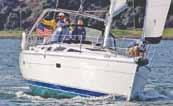

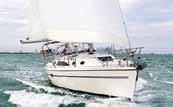

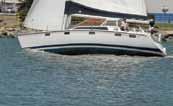





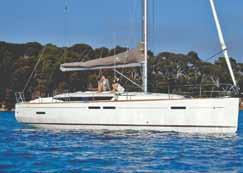





LETTERS


monster had been blown out of line and was coming close to damaging herself and/or the very nice catamaran next to her. The cat is owned by a young guy who is all testosterone, who nonetheless had a sign on his cockpit table that read, 'Relax'. He'd once yelled at me because he thought the outboard on my dinghy might scratch the gelcoat off his boat.
Mr. Catamaran's wife, on the other hand, was really cool. And before it was all over, she'd do something useful, which was put out a big fender.

Did I mention that it was dark? Well it was, so I was wearing my headband flashlight. You have to wear one to prevent being run down by idiots in pangas and dinghies.
Anyway, I jumped aboard the multi-, multi-million dollar race boat and pretended to know exactly what I was doing. A marina employee told me to throw him a dockline so we could winch the boat in. I threw him the line, put the other end around a winch, and tried to figure out how to work the winch. You have to understand that Rambler doesn't look anything like a 'regular' boat, and even the winch systems are complicated.


I got the line around the winch drum which is about — I'm not making this up — two feet in diameter! All I could do was get a wrap on it and pull by hand. Given the boat's towering mast and substantial windage, it was very hard to get the boat in closer. But we were making progress — until the tin roof from the ferry terminal flew past just a few feet from my head! Yes, it was still that windy. The roof hit Rambler pretty hard, but appeared not to have done much damage.
So there I was, alone on a maxi that I didn't own, with roofs and other things flying by. I could have gotten hurt by stuff flying through the air or by getting between Rambler and the concrete dock or getting between Rambler and the idiot's catamaran. As you might expect, Mr. Catamaran was continuing to have a shit fit.

I needed to get a safety line set up, so a guy on the dock told me to throw him a line. I did, but the numbskull didn't secure it to anything. He nonetheless screamed at me to pull the line in, but then dropped it in the water! I threw him another line and told him to secure it around the bollard. But he and everyone else just stood there and ignored me. Then the numbskull informed me that he was staying in the hotel, didn't own a boat, and didn't know anything about boats.
It was pretty wild as I couldn't do anything but watch. Finally some of the Rambler crew sauntered down from the hotel where they were having a big celebration party. Without a word of thanks, they took over. I got off the boat, delighted to be relieved of the responsibility. It was time for me to get out to Maya to see how she was doing in the gale-force winds. She was doing fine. And before I know it, the wind and rain
EXCEL UNDER PRESSURE













An entirely new fiber developed exclusively for Doyle, ICE combines the strength of Para-Aramids like Kevlar and Twaron, weight savings equivalent to 100% Carbon sails and an unmatched ability to resist flex fatigue. Stratis ICE is ready to deliver sails that will go the distance, time after time.












































LETTERS
had stopped.
The following morning I went down to see if Rambler — the owner calls it his "little boat" — had been damaged. I told the skipper that I'd been there when the roof hit the boat.
"Shit happens," was all he said.
Given the guy is a world-class sailing pro, it was an interesting comment for me to digest. Later on I talked to one of the Rambler crew who had been part of the Artemis America's Cup crew when they were sailing the 72-ft cats. He told me that the boat was on a mooring with the mast up when the Bay was hit by once-in-a-century 100-mph winds. He, who had only joined Artemis two days before, said he made some phone calls to his superiors to tell them about it. "Don't worry about it," is what he said they told him.
These sailing pros on boats like Rambler live in a different world and are nothing like normal sailors. You can imagine how wet it must be day and night for days on end when you average something like 25 knots across the Atlantic. And you can only imagine the fire drills they must have when stuff goes wrong on such a huge boat.

As for me, I was mad at myself for having broken the first rule of being a rescuer — don't become a victim when coming to the aid of a victim. I'd been an idiot being on Rambler alone with corrogated steel roofs blowing by.
Rick MeyerhoffMaya, Lafitte 44 Sausalito
Readers — Rambler is owned by 74-year-old George David, the former CEO of United Technologies. At different points in his career he was named CEO of the Year by several business magazines, and raked in $65 million in his last year with the company.

To say David, a member of the New York YC, is an "avid racer" would be an understatement. He previously owned the R/P 90 Rambler that had formerly been Alfa Romeo I and Shockwave, and competed in major regattas around the world. Then he bought or leased the wild Juan K 100 that had been launched as Speedboat. As Rambler 100, the huge yacht capsized during the 2011 Fastnet Race, coming damn near to killing David and all his crew.
Undeterred, in December 2014 David launched Rambler 88, at just about the same time that Jim Clark launched his 100-ft Guillaume Verdier- and VPLP-designed Comanche. The two boats were and remain the most technologically advanced big racing yachts in the world. They first met in the St. Barth Voiles and later the Rolex Sydney Hobart Race.

Rumor has it that Juan K had told David that his 88-footer would be able to beat Clark's 100-footer on a boatfor-boat basis because a 100-footer couldn't be efficiently sailed by human power alone. That proved not to be true, reportedly to David's consternation. There were later rumors that the nearly new boat might be grandly modified — including cutting her in fourths to make her longer and wider. That didn't happen. What did happen is that Ram-



LETTERS
Caribbean 600, which starts and finishes in Antigua in late February, and most likely another Voiles de St. Barth in April.

(Despite having done only a few races in a few years, Comanche is currently laid up as owner Clark and the Comanche team are concentrating their efforts on Clark's 135-ft J Class boat Hanuman for the J Class Worlds this June in Bermuda. According to the website, Comanche will be relaunched this spring to prepare for a record attempt in the Los Angeles to Honolulu Transpac, which would be about two weeks after the J Class Worlds, and then another Rolex Sydney Hobart.)

Being a crewmember on a boat like Rambler or Comanche is brutal. The physical demands are extreme, the chance of being seriously hurt is ever present, and sleep is all but impossible. If a crewmember took either David or Clark to the International Court at the Hague, the owners would quickly be convicted of cruel and unusual punishment.
⇑⇓
HOW BIG WERE THOSE SEAS?
We believe the picture in the November 4 'Lectronic Latitude supporting the piece on the Baja Ha-Ha featured Mangareva, the 41-ft cutter that we used to own. Mangareva is a 1951 wooden Norman Dallimore design that was constructed in Pin Mill, England. She was built for the English Channel and the North Sea, and handled the 25-ft seas of the 2009 Ha-Ha very well.

We remember a woman named Sophie on a boat named Liberty saying, "I wasn't scared until I saw Mangareva taking the huge following seas on her stern." We were enjoying the E-ticket ride and too busy to look back.


To update things, after being sailed from England to the States in the 1970s, and trucked from Galveston to San Diego, Mangareva was owned by various people in the Bay Area during the 1980s and 1990s. She was even owned by the harbormaster at Pelican Yacht Harbor in Sausalito.


We purchased Mangareva in 1996, and sailed the coast of Mexico and Central America from 2009 to 2013. As promised, we got her to the Atlantic side of Panama, where we sold her to our crew and good sailing friends from the Netherlands, Nico Dekker and Elyn Nierop. Mangareva is currently in Panama being refit for an Atlantic crossing. Meanwhile, the couple is enjoying their yacht in the San Blas Islands and other nearby destinations. Eventually she will make it back to her homeland.
Mark and Gail Strong Ex-Mangareva, Dallimore 41 Pollock Pines
Mark and Gail — We remember the sweet-looking Mangareva. We don't know if you've ever been to Pin Mill, where she was built, but it's a hamlet on the south bank of the tidal River Orwell, located on the outskirts of the village of Chelmondiston on the Shotley peninsula, South Suffolk. It's a cool place. Pin Mill is now famous for the historic Butt & Oyster public house and for
both of which played a part in the hamlet's smuggling history. It's also famous

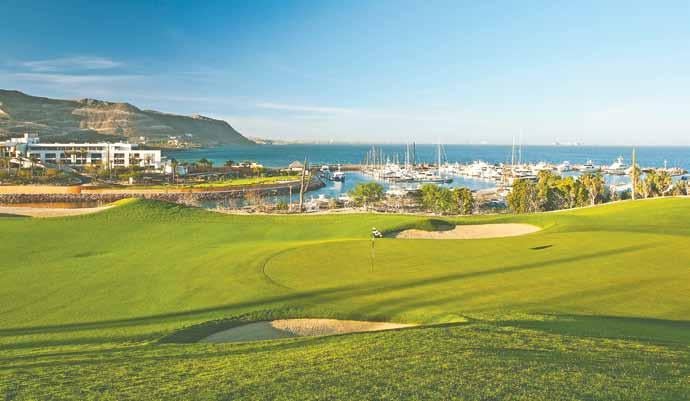



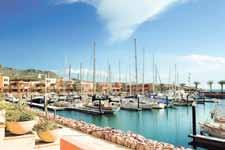
LETTERS
character."
The 2009 Ha-Ha did have a windy first leg, but with all due respect, the Grand Poobah doesn't believe there has ever been anything close to a 25-ft sea in the 23-year history of the Ha-Ha. A 25-ft sea is a true mountain of water. In the days of clipper ships they used to erect curtains behind helm stations so even hard-core helmsmen looking back wouldn't get freaked by the sight of 25-ft waves. To give some perspective, world authorities recently announced that they recorded a 63-ft wave recently, the biggest ever recorded.
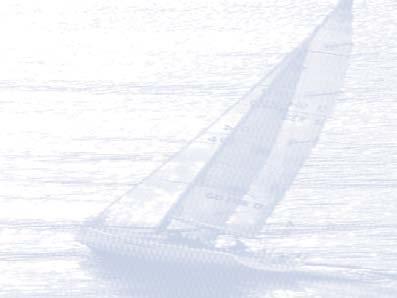
There were a few very impressive swells during the first leg of last year's Ha-Ha that were similar to the biggest in 2009. Sailmaker Chuck 'Slim' Skewes, who has done many offshore events, said he saw just three swells that he estimated to be 16 feet. We think he's right.

⇑⇓ WE THINK WE NEED LEGAL HELP
Our 65-ft catamaran Dragonfly, which was built to the same basic design as Profligate, was dismasted 400 miles south of Hawaii on May 1. Fortunately no one was hurt, and she made it safely to the Big Island.
Dragonfly has been sitting in Hawaii since then while we've waited for the insurance company to settle our claim. We bought the insurance through a Florida-based company. The policy they sold us is from Lloyds of London, although it was underwriten by another firm.
After months of delays and encouraging statements that our claim would be settled, we just received notification that they are attempting to deny the claim. They have hired an attorney in the United Kingdom and are claiming equipment failure — even though the evidence is to the contrary. Among other things, they are saying that we should have had a recent "structural survey." Has anyone heard of such a thing?
However, they were able to find a surveyor who, in our opinion, conjured up a story using fallacious information and disputable assumptions to support their point of view. Obviously we will be fighting this, but we realize that we need skilled representation.

We are looking for an attorney who is experienced with this type of situation, and hopefully someone who has dealt with Lloyds of London arbitration as well. Can anyone help? We can be reached at wiggintona@hotmail.com.
Al and Jill WiggintonDragonfly
, Hughes 65 LivermoreReaders — We're confident that we know four things. First, that Dragonfly was very actively cruised between the United States and the Caribbean for many, many years before she cruised the South Pacific. Second, that some insurance companies — we're not naming any names — seem to have a history of disputing claims more than others. Third, that we've been told of many cases in which insurance companies don't get serious about insurance claims until the insured brings a lawyer into the picture. Finally, that not all legal representation is alike. Some lawyers aren't worth a damn. ⇑⇓
IMPELLER MAINTENANCE
I'm writing in response to the December letter in which John Rogers of the Deerfoot 62 Moonshadow expressed confusion about how often to change the impellers on the raw-water pump for his diesel engine.
I took a diesel engine class a few years ago at KKMI in Richmond, and think I got some good advice from the instructor. He recommended changing the impeller every 200













LETTERS
hours — and the seawater pump every 600 hours.
I have followed this advice for the last 18 years and, knock on wood, have never had an impeller or seawater pump fail. Regardless of the maintenance schedule, I do carry spare impellers.
On another subject, this fall my wife Marina and I will be doing our ninth Baja Ha-Ha. Each year has been different, which was to be expected because each year we've sailed with different crew. That's 16 different crewmembers, and not one of them complained about the event. In fact, they told us the Ha-Ha was the most fun they'd had in years.
It's true that the Ha-Ha is not for everyone, but when Mr. Asbe complained about the Ha-Ha's being so crowded, did he think it was going to be an event for hermits? As for the anchorages being crowded, if he wanted to find a place to anchor alone, all he needed to do was look over his shoulder. There was plenty of room.
As for the "parties" that didn't do anything for him, I actually wouldn't describe them as parties, but rather as social gatherings where people got to meet their sailing neighbors. If people don't like cold beer with new friends, they can bring milk. Once in Cabo, however, the Squid Roe Party is the party of parties.
Myron Eisenzimmer
Mykonos, Swan 44 San Geronimo
Myron — Change the seawater pump every 600 hours? We've put more than 12,000 hours on Yanmar diesels on Profligate and have never changed a seawater pump. During our ownership of 'ti Profligate, more than 12,000 hours have been put on her Yanmar diesels, too, and to our knowledge they have never had a seawater pump changed. In fact, we've owned maybe 15 boats in the last 40 or so years and can't remember ever having had a seawater pump fail.

We're not dismissing the expert's advice, we're just relating our personal experience.
Myron referred to a complaint about the Ha-Ha by a "Mr. Asbe." The following letter explains what he was talking about.
⇑⇓ MY ADVICE WOULD BE TO AVOID THE BAJA HA-HA
Contrary to the available information, the Baja Ha-Ha was all about the parties. Although these were important to some, they were of little value to us.
The Ha-Ha gave us little help negotiating through the necessary paperwork and actually made the process of entering Mexico more difficult.
In addition, the anchorages were crowded, as were the docks at San Diego and Cabo.

My advice to those who inquire of me will be to avoid the Ha-Ha — unless you like to stand around on the beach with a drink in your hand.
Doug Asbe Leigh Ann, Alajuela 38 Seattle, WAReaders — The Grand Poobah's official response to Mr. Asbe's complaints appeared in the November 30 'Lectronic Latitude. In short, the Ha-Ha was exactly as advertised, countless boats were assisted through the paperwork process, there was plenty of 'anchor alone' room at Turtle Bay, Bahia Santa Maria and Cabo San Lucas, and the optional parties were there for however much anyone wanted of them.

That said, the Poobah would agree that the Ha-Ha is not an appropriate event for anyone who wants to cruise alone.








Introduction to Big Boat Racing
LETTERS


For those of you who remember the boat from way back, she is currently unrecognizable. Between the dark blue hull and the larger deck house it looks like a different boat.
Sail out of Santa Cruz on the legendary Merlin. Hoist the sails, crank the winches, everyone gets to steer, set the spinnaker if weather permits, and learn some offshore safety too. Not crowded, 6 students maximum. A USCG licensed skipper will be on board.
Program: Meet at the Boat at Noon • Organize Any Sails • Safety Briefing Go sailing — upwind, downwind, reefing if required, set the spinnaker if weather permits. Approximately 2 hours. Back to the dock, de-brief and put the sails away. Done by 4:00 or 5:00. See website for what to bring.
Price per person - $250
Contact Bill Lee: wizard@fastisfun.com • (831) 345-5542 with any questions and your desired schedule dates.
Merlin Sailing, LLC
www.fastisfun.com
Given the well-publicized number of entries, this would have seemed obvious.
The Poobah has no hard feelings toward Mr. Asbe, is sorry that he didn't enjoy the Ha-Ha, and hopes he finds his future cruising more to his liking. His letter was the only negative one received following the Ha-Ha. The number of letters expressing thanks for the event and/or disagreement would take up half the magazine, so we're publishing just a few.
⇑⇓ MORE THAN STANDING AROUND WITH A BEER ON THE BEACH
We attended all five of the parties, start to finish, in the recent Baja Ha-Ha. Unlike Mr. Asbe, we found the Ha-Ha to be a great adventure and the parties to be an opportunity to meet the other cruisers, with whom who we eventually buddied up to complete other legs down the mainland coast. In addition to the parties, we enjoyed great hiking, beach walks, swimming off the transom at Turtle Bay and Bahia Santa Maria — and great sailing.
We followed the Ha-Ha's instructions for paperwork and it went completed smoothly in Cabo San Lucas.
We anchored out at Cabo, which was rolly, but quieter, less expensive, and better for clear-water swimming than if we had gotten a slip in the marina at Cabo.
We want to thank the Grand Poobah for a lifetime experience.
P.S. We attended the Ha-Ha Kick-Off Party in our 'party animal' Halloween costumes.
Bruce and Cindy Osmun
Sea Oz, Hunter 44DS Boulder, CO
⇑⇓ THE SAILING WAS THE BEST PART OF THE HA-HA'S
Having successfully skippered my Beneteau 473 Vitesse in the 2008 and 2015 Ha-Ha's, I was taken aback by Doug Asbe's very negative comments in the November 30 'Lectronic Latitude on everything from paperwork to the social scene of the Ha-Ha.
First off, skippers are provided with very detailed instructions for preparing to enter Mexico by vessel. Call it "Entering Mexico for Dummies."
Second of all, the Ha-Ha is not "all about the parties." While my crew had plenty of fun ashore and met some really great people, the sailing was by far the best part of the event.
As for the anchorages, they were plenty big and safe.
I think Doug needs to set his sights on becoming a solo 'round the world sailor because nobody will bother him in the Southern Ocean. Lighten up, skip!
Vitesse
Tom Price , Beneteau 473 San Francisco⇑⇓ LIFETIME FRIENDS WE MET AT HA-HA PARTIES
Having had wonderful adventures on six Baja Ha-Ha's, we just have to say "bah, humbug" to Mr. Asbe's complaints. Despite not being 'party animals', we have fabulous lifetime friends whom we met at the various Ha-Ha parties.
We are particularly grateful for the arm's-length shepherding that the Poobah has provided. It has given newcomers to cruising the space they need to get the experience and confi-









LETTERS
dence necessary to develop skills that will keep them coming back or venturing on to new and exciting destinations.

Did Mr. Asbe really need more hand-holding with paperwork?
We enjoyed the Poobah's morning roll calls so we could monitor the locations of friends and buddies. We planned our schedules accordingly, which enhanced our radio communications on the VHF and SSB.
The energy and passion the Poobah and his team bring to warm-water cruising has made the Ha-Ha's one of the highlights of our cruising. So we hope the Poobah won't be discouraged by one complaint when the Ha-Ha has given thousands the opportunity to have an incredibly enjoyable and memorable trip to the tropics.
After almost 20 years of sailing and cruising our Catalina 470 Di's Dream, we have sold her, as our Bucket List is now topped by seven grandsons and some other priorities. But our memories of friends, experiences and unforgettable locations will always include the Grand Poobah and many fabulous adventures.

Rog and Di Frizzelle ex-Di's Dream, Catalina 470 San Francisco
Rog and Di — The Poobah won't be discouraged, as he believes he was put on earth to help people have fun through events like the Ha-Ha. Thanks for the very kind words. You'll not be forgotten either.

⇑⇓ THE LADIES SLID, FLIPPED OFF THE AUTOPILOT
We had a great time on the Cal 48 Wainui in the 23rd annual Baja Ha-Ha. The only damage to the interior was when a champagne bottle busted through a drawer — but didn't break open!

Our main event, however, was after the second-leg start from Turtle Bay. We had the large asymmetrical spinnaker up in 18 knots of wind. I was up on deck alone enjoying the ride with the autopilot driving in windvane mode, while my lady Stephanie and two female crew were down at the nav station giving/getting a chartplotting lesson. Then we got hit by a strong gust.
As Wainui heeled, the ladies slid sideways — and knocked the switch for the autopilot to the 'off' position. I was on deck trimming like crazy when the autopilot suddenly went off, and the 23-ftlong boom on my boat
spinnaker
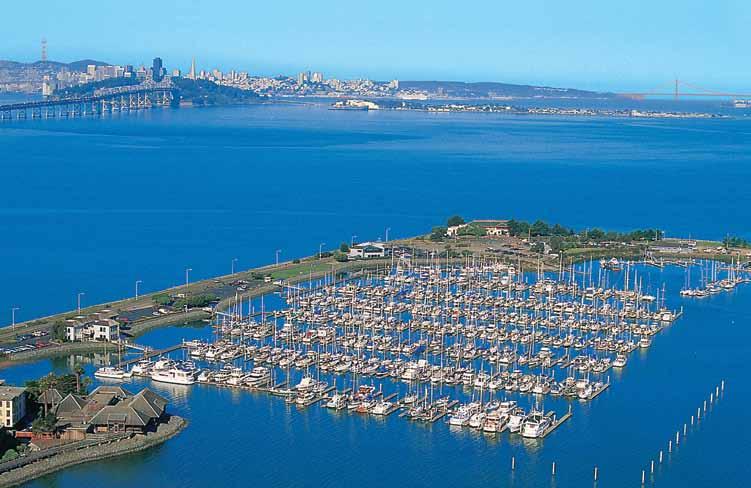







LETTERS


Fortunately, I had a spare drum back home in the garage, and our daughter Amanda was able to fly it down to Cabo.
We saw a gust up to 33 knots, and a top boat speed of 13 knots the first night out of San Diego. We did get pooped the second night out. We nonetheless had a wonderful time.
Mark Coleman and Stephanie York Wainui, Cal 48 Ventura

Readers — Given Mark's considerable offshore sailing experience, the Poobah doesn't doubt that Wainui had a gust to 33 knots. We on the mothership Profligate don't believe we saw any wind over 22 knots, but having no wind instruments, we don't really know. Nonetheless, the Poobah figures that 2016's first leg ties with the 2009 first leg as having the strongest wind ever. There was, however, a second leg about 10 years ago that was the windiest of all.
⇑⇓ THE SOCAL TA-TA DATES

Does the Grand PooBob have the dates for the 2017 SoCal Ta-Ta? I promised my dad I'd take time off work to help him sail his Beneteau 34 down and back from Richmond YC. But I need to ask for time off soon to get such a large block of time approved.









Anthony Johnston, BSN, RN, ACHRN University of Colorado Health Fort Collins, CO
Anthony — The dates are September 10-16. As always, Reggae 'Pon da Ocean' will start with a dinner on the beach at the Santa Barbara YC, then spend two nights at Santa Cruz Island, a night at Channel Islands Harbor, a night at Paradise Cove, and a night at Two Harbors, Catalina. It's been so much fun every year that we've done it that we can't wait to do it again.
⇑⇓ LA REINA DEL MAR WEIGHS IN ON PACIFIC PUDDLE JUMP NEEDS
Before I left Mexico I tried to find out the type of electrical connection I would need at the dock in French Polynesia — where they have 220 volts, not 110 volts — and no one could tell me. It turns out that not only do you need a special plug to run your battery charger from shore power, but you need to get a 220-volt to 110-volt converter. Both the plug and the converter would have been much easier and less expensive to purchase in the States before making the crossing.
However, my most important piece of Puddle Jump equipment was my DeLorme InReach Explorer. After leaving La Paz I spent many hours trying to get a connection with the Ham radio to email requests for GRIB files, and trying to listen in on the Ham nets. When I was within 200 miles of Mexico, I could get a connection and hear some talk. After that, I got very little or nothing.
The best weather information I got when I was more than 200 miles out was from using the InReach to text friends who had access to high-speed Internet back home. I received daily


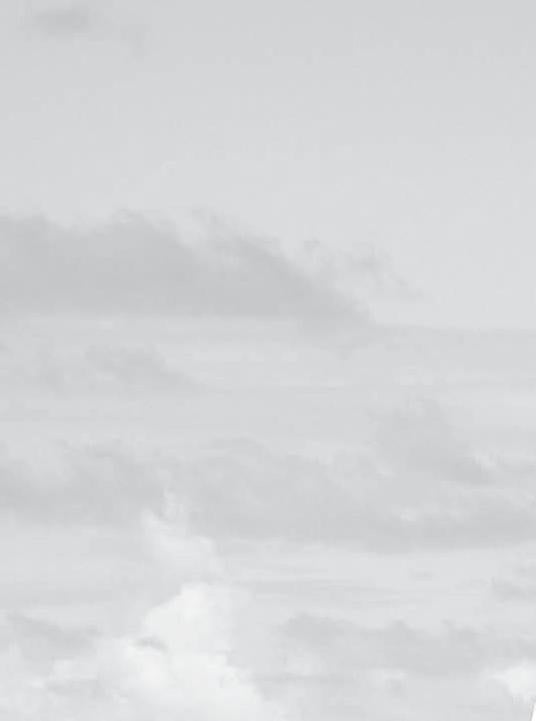














LETTERS
reports on weather and routing suggestions from three people.



The InReach device also has its own weather feature, and with unlimited texting I could request weather all day for any lat/long I entered.
My night watches in the middle of the Pacific were spent texting and communicating with friends back home. It made the time zip by.
Patsy 'La Reina del Mar' Verhoeven Talion, Gulfstar 50 La Paz, Baja California Sur
⇑⇓ SPEED WASN'T AN ISSUE IN THE PUDDLE JUMP
We went across on Wizard, a racing boat. In hindsight, I would have gotten a boat that was more comfortable to live on. Even a full-keel boat, because we had so much wind that we were always reefing down anyway. Speed was not an issue.
Prior to many boats taking off, Mike Danielson in La Cruz talked a lot about prevailing winds and following seas, but things weren't that straightforward. Wind and seas change all the time, so people need to be ready for all conditions. In addition, as you get farther south it becomes much different from the North Pacific. There is nothing between Antarctica and you, so you get these huge lows that create waves out of the south.
Two things we didn't need were bug covers for the hatches and clearance papers from Mexico. Nobody in French Polynesia wanted to see the zarpe.
We pushed all the way to Australia in one season. It would have been better to leave the boat for tropical cyclone season and have had another season to enjoy the South Pacific.



The following are the things we think everybody doing a Puddle Jump should have: 1) A RIB with at least a 10-hp outboard. 2) An extended-stay visa for French Polynesia. 3) AIS. 4) A watermaker. 5) All-chain ground tackle. 6) As much food and booze as can be carried. 7) Plenty of wind and solar power. You can't have enough power. I would have added a minimum of 600 amp/hours of batteries.
John and Sue Campbell Wizard, Choate 40 San Francisco


Readers — In the month before anyone does a Puddle Jump, we'd encourage them to go to www.windytv.com every single day to get an idea of the 'big picture' and the range of conditions to expect during a Puddle Jump.
⇑⇓ SPEED IS VERY IMPORTANT TO SOME PUDDLE JUMPERS
Based on our experience, cruising gear is not the decisive factor in the success of a long cruise such as a Pacific Puddle Jump, but rather the attitude of the skipper and crew. That said, our philosophy is to have the least amount of gear possible, because if you don't have it, it can't break. But when you do have gear, make sure it's as dependable as possible. You want to be as self-sufficient as possible.
Our brand-new autopilot died on our Atlantic crossing. It turns out that we really didn't need it, as we've since crossed the Pacific and Indian Oceans using our Windpilot Pacific windvane instead. We've found it to be the ultimate reliability in steering, and it taught us a lot about sail trim, too. We also found our wind generator to be useless and sold it on the other side of the Puddle.
We believe that simple independent systems work best. For example, a simple built-in chartplotter and a few iPhones and iPads with Navionics charts are more reliable than a big

20 YEARS




























Way back in 1997, a new canvas shop opened in Richmond with a simple goal: to provide the best looking and most durable marine canvas in the Bay Area. Not to do as much business as possible, but to do the best business possible. Not to sell dodgers all up and down the west coast, but to create the best dodgers, for the best customers, right here in San Francisco Bay. That's been a successful approach judging from the many referrals we get from customers, marine professionals, even from other canvas shops.
But most of all, thanks to our customers for being our customers. It means a lot when people come back with a third or even fourth boat for us to work on. Thanks for a great first twenty years!

LETTERS
networked instrument system. Our next most valuable piece of equipment? Our stand-alone Vesper Marine AIS.
One's cruising boat is as important as her gear. Our Van de Stadt 37 is light but solid and dependable, and has just basic equipment. What's important to us is that she's fast. We like our boat's modern hull form, spade rudder, and fin keel because, unlike heavier boats with full keels, waves pass easily beneath her with a minimum of turning and heeling. Speed in following waves also means comfort and safety, as we don't take waves in the cockpit.

This is a little off the subject, but we were also selective about where we went. For example, we cut short our stay in the Tuamotus because, despite this being the age of technology, anchoring in those lagoons is still asking for trouble.
For if your engine fails or there is a sudden change in the wind direction, you can quickly get into trouble and there is rarely anyone to help.
We saw many boats that lost rudders or had them damaged, or which had broken laminates around the keel because of contact with coral. Three boats we know had been damaged and were on the hard in Papeete and Raiatea. We also know of a Baltic 38 that arrived in New Zealand with leaking keel bolts because of a collision with a coral head at Fakarava. She had to be abandoned three days after leaving New Zealand because of a broken rudder caused by the same collision.
'Dora' proved to be light and fast, and dependable because of simple systems.

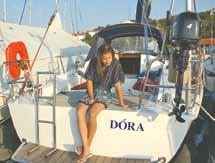 Attila Horvath Dora, Van de Stadt 37 Budapest, Hungary
Attila Horvath Dora, Van de Stadt 37 Budapest, Hungary
Readers — While the Tuamotus are known to be dangerous, these were the only folks who recommended avoiding them.
⇑⇓ WE HIT A BOOMIE
We — my wife, six children and myself — did the Puddle Jump in 2013. Key things to bring along are tools and repair materials. These were quite useful after we hit a boomie in a lagoon, losing a rudder and our starboard propeller. Lucky we had a catamaran.

We also used the dinghy wheels a lot, as the 'sandy' beaches in the South Pacific are more coral than sand. A basic rebuild kit for the outboard was very important, too.
Our family is large, so our watermaker was very useful. We met others who did fine without a watermaker.
We brought too much food. Our understanding was that we would be out there for a year before we hit New Zealand
YOUTH The Youth Program is starting with a ‘make you own skateboard deck’ two-part class on Saturday, January 7th and Saturday, January 14th from 9:30 a.m. to 3:30 p.m. Students will walk away with their own custom-designed and handmade seven-ply maple skateboard.
ADULTS


The Adult Program is a 14-week program held on either Tuesday or Thursday nights from 6 to 8 p.m. (their choice) beginning January 10th for Tuesday classes and 12th for Thursday classes. Current projects include a strip-planked canoe, a rowing scull, a ten-foot lapstrake Lawton Tender, and a new project to be determined.

LETTERS


and saw 'normal food' once again, and that there would only be minimal food available along the way. There was plenty of food along the way.
Power is always an issue. Oversize your solar array if possible so you can get through cloudy days.

Cyclone season in Tonga was a delight.
Courage Winter, Shannon Grant and the kids Lil' Explorers, Kurt Hughes 58 cat Channel Islands
⇑⇓ WITHOUT A DINGHY YOU ARE…
One thing that potential Puddle Jumpers might overlook is the importance of their inflatable and its being able to hold air. Your inflatable is your water taxi, your shore boat, your upriver excursion boat in remote areas, and so forth. Without a dinghy you are stranded either on your boat or on shore.



So, is the adhesive in your patch kit still good? It may feel pliable if you squeeze the tube, but it might just be a tube of solidified rubber. In my case my dinghy-patch adhesive had gone bad — as had the adhesive on the boats of four cruising friends.

So make sure that you have two-part adhesive so that it can't 'go off' by itself while stored in a locker. And check the shelf life as well. And, I'd recommend having a tube of 5200 aboard… just in case.
Joel SternParadise Bound, Vagabond 47 San Diego

Joel — Good tip. 5200 is also good, in combination with sail cloth, for emergency repairs of mainsails. As most sailors know, 5200 is notorious for going off in the tube. Limiting the amount of air it gets and storing it in the refrigerator helps. Just don't confuse it with the Cool Whip.
⇑⇓ YOU DON'T WANT FLUFFY TOWELS
I did a 21-day Puddle Jump with my Tartan 3800 OC Compañera last spring starting from Cabo, and loved how my boat did. She's still in Tahiti, and I'm planning to bring her home this summer so I can do another Baja Ha-Ha in 2017. Gear I liked:
1) The cruising gennaker on the Selden CX25 furler, as it provided great performance in a variety of conditions. 2) My DeLorme InReach satellite communicator, which interfaced well with my iPad. It fact, it worked so well that I never activated my Iridium satphone. 3) My Hydrovane self-steering system worked flawlessly. I mounted a tiller-pilot to it for windless days. It worked well so I seldom used my Raymarine ST-6000 autopilot. 4) My Spectra watermaker worked great — but you have to change the filters. Now for things that either didn't work or weren't adequate: 1) The Yanmar 38-hp diesel wasn't powerful enough in demanding conditions. 2) While the engine had been
critical. 3) My 300-watt
were insufficient. 4) My Pri-


LETTERS

sailing downwind. I replaced it with a Primus Air Breeze and had better results. I regret that I didn't have a Honda 2000 portable generator. 5) My Adler-Barbour refrigerator was a power hog. Performance improved after I re-insulated the interior, reducing the volume. 6) The most frustrating was a short in the microphone for my SSB, which meant I could listen to the other boats in the Puddle Jump, but I couldn't communicate with them! 7) Several bilge-pump float switches failed during the crossing. 8) You don't want fluffy towels in the tropics. Replace them with easy-to-dry backpacker towels. 9) I brought way too many blankets, comforters and clothes. 10) I didn't use my paper charts a single time.
A carefully planned-out medical kit, including several types of antibiotics, is essential. I developed a seriously infected finger that required a trip back to the States from the Marquesas. Upon arrival in the States, I had to undergo emergency surgery and was hospitalized for several days.
Remember, there are no West Marine or similar stores in French Polynesia; it's all 220-volt, so there are no 30- or 50-amp outlets; the currency is different; and they use the metric system. The navigation system is different, too. 'Red, right, returning' in French Polynesia will put your boat on the reef. The French also use butane rather than propane, and the fittings are different.
Joel Sorum Compañera, Tartan 3800 OC VallejoReaders — We can't recall a respondent who didn't love their windvane, and many reported great success using a tiller-pilot to drive when motoring.
⇑⇓ IT'S NOT THE GEAR, IT'S THE CREW
We found that the biggest problem on a long passage such as the Puddle Jump is crew. We're sure that many others would agree with us.

We picked up our four crew in Guatemala. They were all volunteers with some sailing experience. They all got seasick, which really wasn't a problem because they still stood their watches.
One of the four left the boat in Panama, having thought we were going to be busy sailing by doing lots of tacking and stuff. He was replaced by a spoiled brat who left us in the Galapagos when his granny paid for his trip home.

That left us with three crew on an 80-ft ketch for the long trip to the Marquesas. As big was our boat is, she got very small very quickly, with seemingly nowhere to hide.
If possible, always vet the crew, hopefully with a three- or four-day trip before you leave. If might make your trip a lot more enjoyable.
Rhonda Crossley Alabama, 80-ft Ketch Vuda Marina, FijiIn a typical month, we receive a tremendous volume of letters. So if yours hasn't appeared, don't give up hope.

We welcome all letters that are of interest to sailors. Please include your name, your boat's name, hailing port and, if possible, a way to contact you for clarifications.


By far the best way to send letters is to email them to richard@latitude38.com. You can also mail them to 15 Locust Ave., 2nd Floor, Mill Valley, CA, 94941, or fax them to (415) 383-5816.

Club Nautique has changed my life! Thank you so much for everything that you guys do! I can't imagine life without sailing anymore… and I don't have to!
Ed Moss - Ultimate member
the cruising life is their reward winter boat shows
After spending four years, countless hours of labor and buckets full of money on their dream boat, Dogfish, Marga Pretorius, 29, and Greg O'Toole, 37, have some words of advice for other wide-eyed, would-be cruisers: "Do not buy a project boat! If you can't afford your dream boat, equipped with all the gear you want on it, then downsize to whatever you can afford."



Fortunately, they both had the skills, stamina and can-do spirit to see the refit of their 1977 Peterson 44 through to completion, and last month they headed out the Golden Gate in pursuit of new adventures far from the mainstream. "Our plan is to have no plan," says Greg, alluding to the potential for spontaneity that is a much-
Is there a new boat in your New Year? Or maybe a new-to-you boat? If you already have a boat, you doubtless need gear for your vessel, yourself and your crew. Maybe you just want some toys to enhance your time on the water. Or perhaps you're seeking to improve your nautical knowledge base. If any of the above rings true, you're in luck, as January is boat-show season, all up and down the West Coast. A boat-show pilgrimage of sorts is entirely possible.
Looking at the offerings chronologically, the itinerary skips around a bit geographically. It starts in Oregon, Jan-
covetted attraction of cruising. However we did manage to squeeze out of him that a two-year Pacific loop has been discussed, from Mexico west through the South Pacific Islands to New Zealand, then back home again — possibly via Alaska. But both Greg and Marga have been around the sailing scene long enough to know that most cruising plans aren't worth the paper they're written on.
Although neither of them come from sailing families, they have both always been comfortable around the water, and both claim to have been smitten by fantasies of ocean voyaging long before they were proficient sailors.
During her college years, Marga got a job at Berkeley's OCSC, and eventually started taking lessons there. With that foundation, she got on the crew of the schooner Seaward, and later segued into working as a freelance boatwright — skills that were invaluable when it came time to tackle the refit of Dogfish.
Today, Greg still marvels at the fact that he lived in the Bay Area for eight years after moving out from Boston — driving across its bridges almost daily — before he actually got out on the water. But once he did, his rock-climbing hobby was relegated to the back burner, as he began crewing with a friend on a J/105 and other boats. "I loved racing," he says, "but cruising was always my dream." How they eventually acquired Dogfish is a long story, but you can imagine what kind of shape she was in when we tell you that the harbormaster where she was berthed told them, "I'll give you three days to get her out of here." (No working engine, no rudder, no insurance ...)
Once they finally got out on the open ocean last month, it all felt so good they blew by their first planned stop at Half Moon Bay and sailed nonstop to remote San Miguel Island. After overnighting and a successful stint of spearfishing there, they set sail for Santa Barbara just before dawn, hoisted their asymmetrical chute and "sailed straight into the sunrise."
We wish this capable pair the best of luck, and hope they'll keep in touch, wherever their adventures take them.
north & south
uary 11-15. At the Portland Boat Show in the Portland Expo Center — which is right on the Columbia River — you'll find new and pre-owned boats, including some over 40 feet, and kids' boat design and building courtesy of Schooner Creek Boat Works. Organizers claim that this is the only boat show in Oregon. Check it out at www.otshows.com
Next, you can travel to an inland SoCal destination where we'd be surprised if you find any sailboats. Nevertheless, we think the Los Angeles Boat Show will have some auxiliary watercraft that sail-
continued in middle column of next sightings page
svendsen's sold to bay ship & yacht
In most corners of the sailing world, a boatyard's changing hands would not be particularly earthshaking news. But Svendsen's Boat Works of Alameda isn't just any old boatyard. It is a long-established Bay Area institution regarded by many as so essential to the boating community — especially in the East Bay — that they'd probably tell you they simply couldn't live without it.
Those loyal customers have nothing to fear from the yard and chandlery's sale last month, as the new owner is Bill Elliot of nearby Bay Ship & Yacht, who tells us he intends to make few if any changes to the facility's day-to-day operations for the foreseeable future — including keeping Sean Svendsen on as manager.

As most longtime Bay sailors know, Svendsen's has been a Bay Area institution forever — well, since the mid-'60s anyway. Established by Sean's parents, Svend and Suzanne Svendsen, it soon became a key continued on outside column of next sightings page

svendsen's — continued winter boat shows


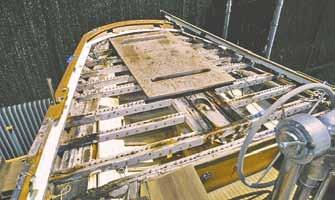
element in the Oakland-Alameda Estuary sailing scene, offering a wide range of services, in addition to new boat construction — particularly Folkboats, whose design shared Svend's Scandinavian roots.
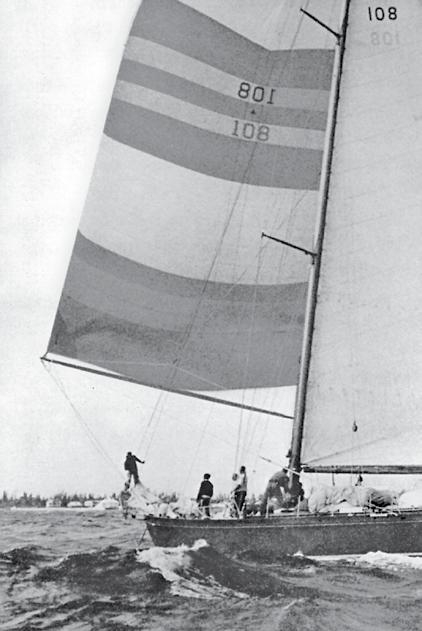
Given the uncertainties about proposed Alameda Marina development plans (see page 60), many of Svendsen's regulars have been worried about its fate. But Elliot assures us he will do "whatever it takes" to keep the yard and associated shops functioning as they have been. An interesting footnote here is that Elliot's first marine job after moving to the Bay Area many years ago, was working for Svend Svendsen.
Nearly 40 years ago Elliot started Bay Ship. Today, with annual gross sales in the $60 million range, his company is the largest marine-maintenance operation in the Bay Area, capable of hauling and dry-docking enormous vessels and megayachts. Given the range of equipment and the skill sets of employees at both operations, Elliot sees a natural synergy that will be mutually beneficial.
— andy
ors enjoy or need, such as SUPs, kayaks and tenders, plus marine accessories and services. The show will be held January 19-22 at the Fairplex in Pomona. See www.losangelesboatshow.com
Then, on January 26-29, head farther south to the San Diego Boat Show at the Sunroad Resort Marina. Here you will find boats in the water, including new and pre-owned sailboats, plus dozens of marine vendors, food and drink from local restaurants, local music, boat rides for kids and adults, and free seminars. For info, see www.bigbayboatshow.com
The last show on this tour is back up north at the Seattle Boat Show Indoors + Afloat on January 27-February 4, in the
water at Chandler's Cove on South Lake Union and indoors at CenturyLink Field. This show boasts of "1,000+ watercraft on display, from SUPs to superyachts and everything in between." Access to three acres of booths selling marine accessories, and more than 225 seminars, is included in the price of admission.
At the Seattle Boat Show Latitude 38's Managing Editor Andy Turpin, will present free seminars on two rallies founded by Latitude: 'Baja Ha-Ha How-To' at 2 p.m. and 'Cruising Tahiti and the Pacific Puddle Jump' at 3 p.m. on Saturday and Sunday, January 28-29. For more details, go to www.seattleboatshow.com
— chris
rhodes classic for sale for a song
If you've got a special place in your heart for classic wooden boats, you can imagine the conundrum that Paul Kaplan — a devout wooden boat aficionado — finds himself in. During the 11 years he's been caretaking the 1937 Philip Rhodes thoroughbred Escapade at his KKMI yard in Richmond, he's been unable to find a new steward who is up to the task of taking on her much-needed, stem-to-stern refit. As a result, he's reluctantly decided that if a qualified savior doesn't step forward by the end of January, he'll have to give up and destroy the once-pristine, blue-hulled classic.
The price? "I'd be willing to sell her for a buck," says Kaplan, who famously campaigned the 55-ft schooner Santana for years on the Bay. But a prospective new owner would have to be very clear about what he or she was getting into. Escapade has been on the hard at KKMI for 15 years, arriving there for repairs in 2000 after enduring a bow-on collision with an enormous unlit buoy off Southern California's Point Arguello while bashing up the coast in heavy weather. A few years into the refit the owner reportedly ran out of cash, and ownership eventually went to Kaplan.
While the planking is said to be so dried out that all of it will have to be replaced, most of the interior joinery and furnishings have been safely in storage for years, as have all the original deck hardware and spars.

Built to a Rhodes design by the Luders Marine Construction Company of Stamford Connecticut, the yawl Escapade was constructed of wood to the maximum length allowed by the prevailing (Cruising Club of America) rating rule of the era: 73 feet. A centerboarder, she draws 14 feet with her board down, and has a beam of 17 feet and a waterline length of 55 feet.
As any sailing historian worth his salt could tell you, Escapade and her Sparkman & Stephens-designed cousins Bolero and Baruna were dubbed the Three Great American Racing Yawls. And Escapade, with her masthead rig, longer waterline and bowsprit, is said to have been the most fearsome of the three. She carried 2,630 square feet of sail.

Needless to say, taking on a rebuild project of this caliber will require not only a dedicated caretaker with deep pockets, but also one who truly appreciates the benchmark in nautical history that Escapade rrepresents. We certainly hope that person steps forward before the end-of-January deadline. A pedigreed thoroughbred is a 'terrible thing to waste'.

dramatic damage a new golden age of sailing?
After reviewing the outstanding new book Over the Horizon: Exploring the Edges of a Changing Planet for our November issue, we had a fascinating conversation with author David Thoreson, a truly outstanding nature photographer with insightful global perspectives. At the end of our chat we invited him to share some thoughts with Latitude readers on the challenges facing the world's oceans today, and the important roles that sailors can play in ocean stewardship.
Journal entry — Wednesday, Sept. 5, 2007, Chukchi Sea near Bering Strait: "At 0544 hours, our crew of six on s/v Cloud Nine crossed the Arctic Circle heading south to officially accomplish the transit of the Northwest Passage. We had a small party to celebrate (hard to party at 6 a.m.), recounted a few stories, and were on our way again, now to the Bering Strait, and Nome, Alaska."
That day seems dreamlike now. Ten years ago, during the summer of 2007, we were the first American sailboat in history to transit the infamous Northwest Passage from east to west, the classic route; Amundsen's route. We were the first Americans to ever sail the Passage in a single year and it will go down as one of the fastest transits of any nationality in history, almost 7,000 nautical miles in just 73 days.
Near the end of this journey in Kodiak, Alaska, I also wrote in my journal that "we had witnessed the end of an era and the beginning of a new one. The Golden Age of Exploration had come to a close and a new era of exploration involving the study and change of the earth's climate is just beginning."
I have been very lucky in my cruising career to become a part of a growing movement of sailors, who not only appreciate the beauty of sailing a boat on the ocean, but are also documenting environmental changes observed along the way. This is not just documentation; many sailors are conducting real science or using new communication opportunities to educate others.
This was the case for me. I was hungry for a new opportunity after our successful 2007 NW Passage, where I observed a tremendous loss of ice in the Arctic. The profound experience led me to the 2008 World Science Festival in New York City where I told my sailing story on stage


By the time you read this, there will undoubtedly have been new highlights in the Vendée Globe solo round-theworld race, but shortly before we went to press these were the highlights:
December 19, Day 43 of the nonstop Vendée Globe race, saw some trials and triumph in the Southern Ocean. Thomas Ruyant on Le Souffle du Nord pour le Projet Imagine hit a UFO (Unidentified Floating Object) while at speed between Tasmania and New Zealand, which caused severe damage. "The damage at the front of the boat is spreading," he reported. "The hull is opening up and the frame coming away more, everywhere. I'm sailing to the south of New Zealand. I'm not
with many of the world's top scientists. Soon after this I connected with a team of like-minded sailors and conservationists on the 64-ft steel cutter s/v Ocean Watch for a 28,000-mile circumnavigation of the North and South American continents.
The 2009-2010 effort was the brainchild of sailor and philanthropist David Rockefeller Jr. and solo-circumnavigator Mark Schrader. The mission was to activate sailors to take more responsibility for the
for solo racers golden age — continued
sure if it will all stay in one piece until then."
This wasn't just a bump in the night, as he described the hit. "The shock was exceptionally violent. It gives me the shivers just thinking about it. I was at 17-18 knots and came to a sudden standstill, hitting what was probably a container, seeing the damage it has done to the hull. The whole of the forward section exploded and folded up."
The French sailor pointed his broken boat toward the rugged coast of New Zealand's South Island and made landfall at the closest civilization, the town of Bluff on December 21.

waters on which we all travel and recreate. A new conservation group, Sailors For The Sea, was born through this process.
Having a mission of science and education enriched our adventure and my life in general. As a documentary photographer, sailing has always been intriguing as a means to travel within, and to, dramatic landscapes. This is what drew me to the ocean in the first place. Once there, one cannot help but feel motivated to learn and discover more. I have recently compiled my work and career on the ocean into a new photo book called Over The Horizon: Exploring the Edges of a Changing Planet.
Whether sailing dinghies on inland lakes, coastal cruising or crossing an ocean, I am always awed by the simplicity and beauty of setting sail and heading out to the horizon. I would suspect that for most sailors this story is the same. Mine is just one example of so many sailors who are out there on the seas doing great work, not just sailing to a destination.
SIGHTINGS
golden age — continued solo racers
Families on multi-year circumnavigations are not only educating their own children, but broadcasting this education worldwide. Sailors heading into the North Pacific Ocean and other gyres are educating the public about plastics. Some are utilizing new, efficient, renewable power sources or working with scientists in remote areas, such as Greenland, documenting receding glaciers.
As I look back through my journal notes and into the future, I wonder if we have entered a new "Golden Age" of sailing. Our experiences and observations are important narratives for those seeking answers in a disrupted natural world. Sailors should be at the forefront of the ocean conservation movement. Let's not take our experiences and observations for granted.


— david thoreson
Thoreson is based at Lake Okoboji, Iowa. He is a member of the Cruising Club of America (CCA) and is an Explorers Club Fellow. For more info on his new book visit www.davidthoreson.com.
Stéphane Le Diraison's Compagnie du Lit/Ville de Boulogne-Billancourt was dismasted south of Australia when a simple piece of gear failed. "I went surfing along at 28 knots and heard a lot of noise and rushed outside in my socks, as I was inside trying to sleep. I grabbed the helm and saw that I didn't have any mast. All the sails (jib top, J3, mainsail) were in the water and pulling down. I cut all the stays to allow this to float behind like a floating anchor. I tried to lift up my sails, but it was too risky, so I let everything go.
"My first analysis showed that the dismasting was due to a backstay pad eye breaking. I don't know why that happened. It shouldn't have broken." He

— continued
headed to Melbourne. "I spent 12 hours cleaning everything up. I found a way to set up a jury rig. I now have a 7-meter mast, and it's fantastic. I don't think this one will come down.” Although not able to continue racing, Stéphane is still a part of the Vendée mystique. “People often talk about jury rigs, but when you get involved alone on a 60-ft boat, it's not easy. I'm proud of being able to get back heading north 15 hours after the incident.”
At press-time, Jean-Pierre Dick on StMichel-Virbac was in fourth place after making an interesting move on day 37. Just like a big version of “Do we go through continued in middle column of next sightings page
2017 yra calendar hits the docks
The 2017 Northern California Sailing Calendar and YRA Schedule, produced by Latitude 38, is now available for free at distribution points around the San Francisco Bay Area. It's already been sent out to the YRA's mailing list, which is made up of sailors who've entered a YRA race in the last two years.
Within this 26th edition, you'll find local calendars, contacts, chartlets, signal flags, youth programs, singlehanded races and much more. We even list Caribbean and Pacific events in case you want to plan an adventure abroad. Part of the fun this time of year is putting together your own 2017 racing schedule.
You can view the digital version online at www.latitude38.com, but we highly recommend keeping a paper copy on the boat. So, if you can't find it for free, you can mail-order one for $5 from Latitude 38, 15 Locust Ave., 2nd Floor, Mill Valley, CA 94941.
— chris
beware of wacky current tables
Among the long-running features in Latitude 38's YRA Calendar are currents tables for every weekend of the year. We make a special effort to ensure that they match the popular little Tidebooks sailors pick up at marinas and chandleries, as we don't want any confusion that a discrepancy might cause. When our eagle-eyed proofreader was checking the 2017 tables, she spotted a series of errors in the Tidebooks that we feel we must bring to the attention of our readers.
January's currents tables look just fine, but starting in February, things go all wacky. "The first tip-off was that, on several dates, maximum currents at the Gate followed slack water by less than half an hour. Further inspection revealed dozens of instances where slack followed slack with no intervening max current, or max ebb/flood followed max flood/ebb with no slack between the two," explains our proofreader, Jean.
There were dozens of these anomalies throughout the tables, except in January.
"Additionally, there were several dates, notably in July and December, on which slack water at the Gate was followed by max current less than half an hour later. This just doesn't happen on the Bay."

We alerted the publishers — Pacific Publishers of Tybee Island, GA — about the problem, and Lauren Jackson responded: "The data our Tidebooks is based on comes directly from NOAA, and that information changes many times over the course of the year."

Jackson sent us an updated PDF, generated on November 22, containing the NOAA data for the Golden Gate Entrance. That info, which lacked the bizarre anomalies, is what appears in the YRA Calendar. Predictions are never perfect, but we hope that the ones we published for 2017 are as accurate as in any other year.
— chrisa remembrance of the master
Who was the greatest boxer who ever lived? The greatest golfer? Baseball player? Gymnast? You could speculate and opine until you were blue in the face, but for most sports, it would be impossible to name the very best of all time with assurance — or consensus.
So it is with sailboat racing. The best? Names like Conner, Tabarly, Coutts and Ainslie are likely dancing through your head right now. With all due respect to you, them and the other greats through the decades, our vote would go to Paul Elvstrom. In our humble opinion, his myriad talents and contributions make him the best competitive sailor who ever lived.
Many Latitude readers probably heard the news that Elvstrom departed on his final voyage on December 7, surrounded by family
continued on outside column of next sightings page
elvstrom —
continued
at his home in Hellerup, Denmark. He was 86.
Like many of the world's great athletes, Elvstrom was a 'natural' from the time he first set foot in a sailboat at the age of 9. He grew up a stone's throw from the Oresund, a strait that forms the border between Denmark and Sweden. The third son of a widowed mother, young Paul was a poor student (his struggles with reading might today be diagnosed as dyslexia), but a superb athlete. He excelled at all forms of sport in the water and out, but his mother encouraged his sailing the most, since "it kept him off the streets."
He took to sailing like a bird to flight. But what made him different from others right from the start was his constant analysis of what was happening, his 'wind-whisperer' sixth sense of what the breeze was doing, his relentless and often brutal training regimens, his tactical and hardware innovations — the self-bailer was just one — and his passion for winning.


At age 20, Elvstrom represented Denmark in his first Olympics, sailing the singlehanded Firefly at the 1948 Games in Torbay, England. Admonished by his countrymen, "Just don't come in last," he didn't. He won a gold medal.

When the Finn replaced the Firefly as the solo dinghy at the 1952 Games in Helsinki, Finland, Elvstrom won gold again, and again in 1956 and 1960. His record of four consecutive golds in four Olympics would stand for more than 50 years, before finally being matched by Britain's Ben Ainslie in the 2000-2012 Games.
In addition to the Olympics, he won many other races and titles. By the time he finished competing, then in his 60s, Elvstrom had won 13 world titles in eight different classes: Finns, 5o5s, 5.5 Meters, Snipes, Solings, Star Boats, Flying Dutchmen and Quarter Tonners. They didn't call him the Great Dane for nothing.
After the Finn triumphs, Elvstrom competed in several more Olympics in other classes. He was always impressive, and often close, but he never medaled again. The losses took a mental toll on the self-proclaimed perfectionist, and he would often go years between major competitions to regain his mental balance. Eventually, he learned to let go of his obsession to win and returned to the fun of sailing. In his last two Olympic Games he achieved that goal. In the '80s, he sailed in the Tornado class with his youngest daughter Trine on the wire. They finished 4th in 1984 and 15th in '88, but the elder Elvstrom found immense satisfaction in sharing the experience with Trine, and seeing her develop as a fine sailor in her own right. (The Elvstroms remain the only father-daughter team ever to compete in the Olympics in any sport.)
In researching this piece, we were surprised to learn that Elvstrom's last race may have been sailed right here on San Francisco Bay. That was the Masters Regatta sailed on J/24s in the summer of 1990. Though he ended up with an unpracticed crew and a third in the series (organizer Don Trask won), he was the star of the show, hands-down, with several invitees claiming they'd flown in from afar for the sole purpose of meeting and sailing with the legend, then 62 years old.
solo racers
Raccoon Strait or around Point Blunt?” to get around Angel Island on San Francisco Bay, Dick decided to take a flyer through Bass Strait, which separates Tasmania from Australia. Although it added miles it worked! He passed Yann Elies on QuéguinerLeucémie Espoir, now in fifth place.
— continued
The leaders continued way up front to Cape Horn, and Armel Le Cléac'h on Banque Populaire VIII is stretching out his lead on Alex Thomson of Hugo Boss. Armel was hoping for a nice Christmas after a hard sail so far. "Conditions are rather unstable, he wrote on December 19. I'm on the back of the low and the wind is going from 17 to 30 knots. The seas are heavy. They aren't the right conditions for being fast, but I am making headway. We're going to have to watch how things change before the Horn. I asked Father Christmas if I could lead the way around Cape Horn. We'll see…”
For all the Vendée Globe info you need see www.vendeeglobe.org/en — ncs
elvstrom — continued
None of those present was more enthused to shake the Great One's hand than Latitude's former Managing Editor Shimon Van Collie, who wrote a memorable piece about the Great Dane the following month titled Paul Elvstrom — A Conversation with the Master. (Find it under Features at www.latitude38.com.)
"He changed one-design sailing from a gentleman's sport into an athletic event," wrote Shimon, "pioneering training and boathandling techniques that have endured to the present. He devoted his life to sailing and making boats go faster by better use of sails and equipment. Today, he remains the sailor against which all others are judged, but which few can hope to match."
Paul Elvstrom inspired so many sailors over so many years to go all-in for their sport that a list of them would fill pages and would be a who's-who of past and present sailing heroes from every corner of the world that has a coastline. And many hundreds more who would never stand atop a podium, but were nevertheless inspired to reach for those same stars.

waterfront development update
Sailors aren't the only people who enjoy majestic views of San Francisco Bay. In several locations, developers looking to capitalize on skyrocketing property prices have introduced plans for new waterfront housing, retail and office spaces, and marina improvement projects that are impacting sailors throughout the greater Bay Area.
Local boaters complain that new projects are inconveniencing them by shrinking sailing venues, limiting mooring opportunities, pricing out marine businesses, and displacing dry storage options. But as these new projects go through various layers of local government approvals and financing, their developers are finding that well-organized boating advocates can be formidable opponents with enough grassroots support to force compromise on the scale of new waterfront projects. The takeaway message for Bay Area sailors seems to be: Get organized and get ready to fight to win these development clashes, or at least to compromise. Below are updates on several current development tussles.
• Treasure Island Sailing Center — Compromise Reached
No one disagrees that the docks and shore facilities at Treasure Island Marina need substantial upgrading and repairs, or that paying for such improvements will be expensive. In 2015, when the Treasure Island Development Authority released the Marina Development Plan for Clipper Cove, Treasure Island Sailing Center's chair Carisa Harris-Adamson said the proposed shoreside space and facilities would be "perfect." But she went on to stress, "We are extremely concerned about the scale of the Marina as most recently proposed. The elongated wave attenuator and its footprint, extended to the East of the Cove, will significantly reduce and negatively impact youth sailing and community recreation in the Cove."
Despite TISC's concerns, Treasure Island Enterprises moved ahead with marina development plans, including applying to the California Department of Boating and Waterways for a $4.2 million loan from the proposed Harbors and Watercraft Revolving Fund. On May 10, 2016, DBW scheduled a field tour of the Treasure Island Marina and TISC the day before the loan came up for advice and comments and a vote at the Commission's quarterly meeting. After a long list of speakers from local sailing groups, the Commission's vote was tied two-to-two — not enough for the loan to be approved.
TIE's $4.2 million loan application was back on the agenda for the next quarterly meeting on November 11. That same day, HarrisAdamson announced that TISC and TIE had reached a compromise based on an updated November 2 TIE plan. "The eastern edge of the transient dock will be located no more than 1,144 feet from the west end of the cove. This placement provides adequate space — protected from waves, current and commercial traffic — for beginner sailors to practice sailing upwind in Clipper Cove," said Harris-Adamson. "While this footprint will reduce the range and depth of some TISC programs, it does provide the minimum space needed to access the beach and continue all our current programs in the cove."
The southernmost point of the 789-foot transient dock and its 236-foot extension will be limited to a 1,014-foot protrusion into Clipper Cove. That length, about two-thirds the distance from Treasure Island south to Yerba Buena Island, opens a passage to the beach that is sailable by many beginning sailors.
With too few commissioners at the November 11 meeting for a quorum, the vote is expected to be held at the upcoming February 2017 meeting.
In related news, on October 1 new rules for anchoring at Clipper Cove went into effect, reducing the maximum length of long-term stays from 21 days to 10.
• Alameda Marina — Will Jobs and Historical Building Status Trump Housing?


New housing developments are popping up all over the island
continued on outside column of next sightings page
american cruiser
In mid-December, the government of Tonga officially requested extradition of American cruiser Dean Jay Fletcher, 54, to stand trial in that island nation's capital, Nuku'alofa, for the alleged murder of his Canadian wife Patricia Linne Kearney last summer.
Regular readers of 'Lectronic Latitude may recall the bizarre sequence of events that led up to Fletcher's apprehension in early October at Pago Pago, American Samoa, and his subsequent extradition to the US (Hawaii). After alerting authorities in Vava'u, Tonga, about his wife's death, Fletcher was eventually accused of killing her himself. But somehow he escaped from custody — an act for which five Tongan police are being investigated — then made his way to his vintage
could face hanging
Rhodes Bounty 42 Sea Oak, and headed out to open sea. He was chased, but scared off his pursuers with a flare gun. A few days later he made the mistake of pulling into Pago Pago for fuel. After another chase, he was apprehended by authorities there.
Fletcher and Kearney set sail for the South Pacific from Mazatlan in the spring of 2015. Acquaintances within the Mexican cruising community are still in shock over both the murder and the accusation that Fletcher did it.
Tonga practices British common law. If Fletcher is extradited and convicted, he could face the death penalty via hanging — although the last execution in this low-crime archipelago was in 1982.
— andy
waterfront development update
of Alameda, many on empty spaces that had been eyesores for decades. But developer Bay West's announcement that it wanted to "rehabilitate" the 44-acre Alameda Marina property, replacing some existing marine services with multi-story housing units, was less than warmly received by locals.

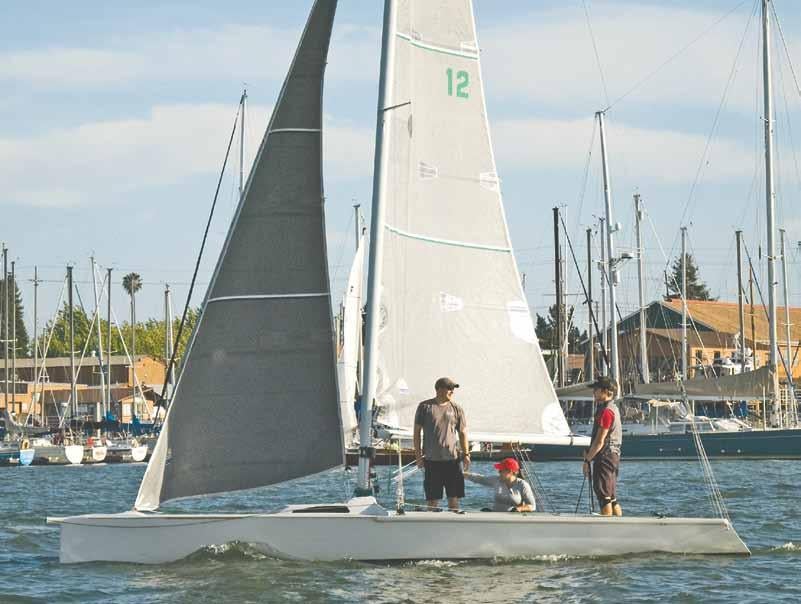
For the boating community, the concern wasn't just the dramatic reduction in dry storage space and the loss of one of the marina's two hoists, but what it would mean to the maritime commercial ecosystem that currently inhabits the site, which includes Svendsen's chandlery and boat yard, sail lofts and small repair shops. "They poked the hornet's nest," Alameda Vice Mayor Frank Matarrese said in March 2016, speaking of the developers. "They completely underestimated public reaction [to development at this location]."

Pacific Shops, Inc. — the majority owner and city tenant — presented its Draft Master Plan to the city in July. Although it included more maritime use than in its first preliminary presentation, the master plan cut commercial square footage from 250,000 feet to 150,000 feet, and eliminated many of the existing structures. The
continued on outside column of next sightings page
waterfront — continued
amount of land dedicated to non-residential uses would be reduced from about 28 acres (about 22 acres of which are paved areas for boat storage and/or circulation) to 3.6 acres.
On November 14, the City of Alameda held the project's first Public Scoping session. The agenda included the staff report by Andrew Thomas, assistant community development director, who said the staff agreed with the four Master Plan objectives, none of which mentioned housing:
1) Improve and enhance the maritime commercial marina.

2) Activate and reconnect the community to the waterfront.
3) Create a dynamic new neighborhood for everyone.
4) Provide for financially sound development.
Staff comments seem to kill initial fears that the site will be scraped of maritime use. The Draft Master Plan provides little detail or information on how the Master Plan will "maintain existing jobs" and "stimulate economic development." One staffer commented that the project should preserve more of the existing buildings in the maritime core, while another staffer asked for more detail on creating a "working waterfront" open-space plan, as the plan diagrams show "a manicured, residential-oriented open-space network."
The staffer stated: "The priority use of the Tideland uplands areas should be maritime commercial uses and open spaces that can be accessed by the public to experience the waterfront site and access the water and public docks."
A community group called Save Alameda's Working Waterfront has been working with city staff to pass along their concerns about how the demise of businesses at Alameda Marina will impact jobs not only at that site but at other maritime businesses throughout Alameda. But the group says the Master Plan's designation of only three buildings as historic is inaccurate — they estimate the number is as much as 10 times higher. "I continue to feel positive about SAWW's success at the end of the day," says organization founder Nancy Hird. "If nothing else, it would be extremely difficult for the city council to vote to demolish 30 historic buildings, along with the detrimental effects on the businesses and jobs." Hird said she believes staff now feel there is real opportunity to capitalize on our nautical history and marinas. The group may need to raise money, though, to pay for a professional historian's report that would counter the developer's intentions.
The recent announcement that Bay Ship & Yacht had bought Svendsen's Marine was viewed as promising by many Oakland-Alameda sailors and island residents. Throughout 2016, many tenants complained that Alameda Marina management had taken steps to get them to move on, including not extending leases, hiking up rents, and providing inadequate security that led to an increase in outboard thefts.
Across the Island, however, there is cause for small boat sailors to celebrate. The public launch ramp at Encinal Beach, sometimes used by the Alameda Community Sailing Center, is getting a major upgrade, including new bathrooms and an outdoor shower, plus addition of a separate low-access kayak launch on the left side of the ramp, with a regular dock for motorboats and sailboats on the right side. "We are an island and we are very aware that we need to improve our public access to the water," said Alameda Recreation and Parks Director Amy Wooldridge. "It's going to be beautiful." What about adding a public hoist somewhere on the island? "I'm always open to hear what people want. It's about finding the right location and the funding." The city received a $300,000 grant from the California Department of Parks and Recreation to plan its portion of the restoration of the estimated $1.2-million project, and the rest may be funded through grants and developer impact fees. There is no timeline on the project yet.
a san francisco
Talk about a brilliant use for waterfront property, of all the National Parks in our great nation, the San Francisco National Maritime Historic Park is definitely one of our favorites. Yeah, the name is a mouthful, but don't let that hold you back from paying a visit to this Bay Area treasure.
Established in 1951, it is home to one of the most fascinating maritime museums on the West Coast, and the homeport for a fleet of historic vessels that are available for hands-on public touring all year round. Among them are the 1886 square-rigger Balclutha, the 1895 schooner C.A. Thayer and the 1891 scow schooner Alma
waterfront — continued bay treasure
Although the sprawling site is a highlight for land-based tourists from around the world — Fisherman's Whart and Ghirardelli Square are just down the waterfront — our favorite way to enjoy the Park's many attractions is by sailing in and dropping the hook in the Aquatic Park lagoon. (Sailboat engines are only allowed when anchoring or getting underway, and powerboats are verboten.)
Vessels over 40 feet need park approval prior to entering the cove, and overnight stays of up to five days require a permit from the harbormaster: (415) 859-6807. Dinghies can be landed just east of the South End Rowing Club.
— andy• Richmond Yacht Club — Fighting the Next-Door Neighbor Richmond Yacht Club has proven to be one of the best-organized clubs in the Bay Area. An extensive clubhouse renovation was recently completed there, and the club has also acquired just over an acre of land on the east and west of the property. Less visible, however, has been an ongoing battle between the club and Laconia Development Co. for a large waterfront project to the west side of the club. The City of Richmond is selling about 13 acres of land to the Chinese developer, who plans 316 housing units on the site. Of the five buildings, three would be 61.5 feet tall and the others two and three stories.
Brickyard Cove Alliance for Responsible Development was formed to challenge the height and density of the development, and to ensure adequate toxic-substance cleanup. Of the five members of the BCARD Steering Committee, four are RYC members. Because the city and developer were not making significant changes to the plan, BCARD determined the only way to move forward was to sue the developer and the city.
The city requested that BCARD mediate with the developer and hired an outside law firm to fight the lawsuit. In late November, a settlement was reached in which all legal costs and donations will be reimbursed to BCARD by Laconia Development Co. and another large sum of money will be provided to BCARD to hire an environmental consultant to work with the developer to ensure that toxic substances are remediated to California environmental standards. Under the agreement, one story will be eliminated and a retaining wall and security fence will be installed to protect RYC.
"We have been luckier than many area yacht clubs, but our improvements, additions and legal success have only come with much very hard work and much stress," said RYC Staff Commodore Susan Hubbard. "It involved many of our members making very difficult financial decisions, and there has been much serious discussion."
Other news, good & bad:
• Coyote Point — The fuel dock at Coyote Point Marina, located in Coyote Point Recreation Area in San Mateo, recently reopened. (Open every day, 8:30 a.m. to 4 p.m. Call 650-573-2594.) Other improvements include construction of Dock 29, which provides access to 10 new 60-foot slips and 12 45-foot slips.
• Docktown Marina — The property owner and a developer have submitted a proposal to construct approximately 130 homes at Redwood City's Docktown Marina. The proposed development would not displace the Docktown Marina, but it would impact parking and storage uses. The city has said it needs to end residential uses at Docktown Marina in order for the city to meet its legal obligation to allow full public access to the land on which the marina is located.
• The Ramp — The guest dock at this popular restaurant closed and restaurant staff say there are no plans to reopen it.
• Loch Lomond Marina — Condo and home construction continues adjacent to this marina. Dry storage facilities are being removed. The fuel dock is currently closed, but is expected to reopen.
• Schoonmaker Point Marina — The three-ton jib crane is permanently closed. After major repairs, it recently broke again and will not be reopened, in part because of insurance issues.
• Clipper Yacht Harbor — The launch ramp is now for private use only. The fuel dock is public.
• Sausalito Mooring Removals — Largely due to a push by outgoing Sausalito mayor Jill Hoffman, Sausalito police have been removing private moorings on the Sausalito side of the entrance channel, and additional enforcement actions are expected.

— elisa williams
Readers — if you have comments on any of these developments or additional info, please email us at editorial@latitude38.com
RAINY DAY PROJECTS —
Although some boat projects are best left to professionals, as you'll read below, there are a number of relatively simple projects that you might consider attempting yourself. None of them requires an extraordinary level of skill, special tools, or a boatload of money — and, once completed, they'll add immeasurably to your enjoyment of your boat.
With the arrival of winter, we've focused here primarily on inside projects, most of which can be accomplished even on the stormiest of days.
Upgrade Lighting with LEDs
• Skill Level: Easy.
• Benefits: Lower energy consumption, longer bulb life, greater dependability.
Now that 12-volt LED replacement bulbs are available in virtually any configuration, you should consider upgrading your current cabin lights and navigation lights. Using LEDs instead

before having to charge your house bank.
A large portion of boats commonly seen on the West Coast originally came from the builder with a pair of Group 27 deep-cycle or dual-purpose batteries, connected to a single Off-1-On-2 battery
majority of auxiliary engines, you'll have zero problems with a gel or AGM Group 24.
3) Replace your current battery switch with a Dual Circuit switch from Blue Sea Systems. This allows you to connect your engine-starting battery to your engine, and your newly expanded house bank to your house loads, while keeping those circuits separate.

switch. Or if you're lucky, your boat might have been equipped with more efficient gel or AGM batteries, which are permanently sealed, thus freeing you from having to check each battery's electrolytes every few months. Regardless, having only a single battery for a house "bank" is seldom enough capacity these days. But that capacity can be greatly improved without spending a lot of money, or adding a lot of weight.
1) Presuming your current pair of batteries are the same age, chemistry, and type, connect them in parallel and create a house bank that is now 100% larger than before. Ideally you'd also fuse them against catastrophic battery failure with some little terminal fuses, say 100A each, on each positive terminal.
4) Add a battery parallel solenoid from Blue Sea Systems or BEP to connect your battery circuits together when the engine or shore power charger is charging.
This project also works extremely well on boats that come from the builder with three Group 27 or 31 batteries where two are designated for the house bank and one is for starting. Connect all three together for the new, enlarged house bank, and add a Group 24 starting battery. It's amazing how much better the boat's systems will operate with more capacity.
These days there's a seemingly endless variety of LED replacement bulbs on the market. They use a lot less juice than old-school bulbs.
of incandescent or halogen bulbs can save you 75% to 90% in energy use, and it's likely that you'll never, ever have to replace them again.
Some LEDs may not have the right light temperature for a warm cabin glow, so you may want to experiment a little before purchasing a dozen cool-white replacements. A lower color temperature of 2,500 K to 3,000 K may be more inviting than higher color temperatures — and make sure that all fixtures in each cabin use bulbs with the same color temperature.
Increase Your Battery Capacity
• Skill Level: Medium.
• Benefits: Improves the chances of being able to start your engine; longer time
If your batteries are several years old, or in poor health, replace both at the same time with two identical marine batteries. If your budget allows, strongly consider changing over to gel batteries or AGMs from a reputable manufacturer. They are worth it.
2) Add a new Group 24 battery that is the same chemistry (flooded, gel or AGM) in a battery box or battery tray. This battery will be dedicated solely to engine starting, so try to place it as close to the engine's starter as possible, and wire with appropriately large primary wire. If you've upgraded to gel or AGM batteries all around, don't despair if the new gel/AGM starting battery appears to have fewer cranking amps. For the vast
The one caveat to this project is when you upgrade from flooded batteries to gels. Flooded batteries have a high tolerance for being charged at higher voltages, while that can kill gel batteries over time. Check your system voltage when the alternator is charging; voltages over about 14.1 may be too high for your new gel batteries. (In that case, you'll need an external regulator (which is beyond the scope of this article, but a great idea regardless.)
Although it needs to be done properly, adding battery capacity to your house bank is a relatively easy upgrade.

It's amazing how much better the boat's systems will operate with more capacity.ALL PHOTOS CHUCK HAWLEY EXCEPT AS NOTES GOOGLE IMAGES
Upgrade Your Electical Distribution Panel
• Difficulty: Medium to Pretty Darned Difficult.
• Benefit: Convenience and control over what's happening with your electrical system.
There will probably come a time when you have to start doubling up on your electrical circuits, with two or more items being controlled by a single switch, and a rat's nest of wires behind your distribution panel. That's when you might want to consider installing a larger distribution panel.
Until recently this probably would have been a job best left to a professional. But now there is software available from at least one electrical vendor that allows you to create a new, semi-custom panel by dragging and dropping components, then deciding on the current rating of each breaker and the label on each circuit. In a few hours you can design your new panel, and have it delivered to you within a week.
Installing said panel is another thing altogether. To oversimplify, all you're doing is removing one wire from a terminal on your existing panel, and hooking it up to the new circuit breaker. However, unless you have a lot of experience, you're probably better off securing the services of one of the Bay Area's excellent marine electricians, so that you'll end up with a tidy, functional installation.
What electrical upgrades can you do on your own?
Create an Abandon-Ship Bag
• Skill Level: Easy
1) Install a pair of USB charging outlets. These are packaged in a circular package like a 12V "cigarette lighter" outlet, and provide a tidier way to charge phones and tablets.
2) Install a bilge pump "ON" light. These are really common on charter boats (along with a pressure water pump "ON" light) so that charterers are more aware of what is happening onboard. If you see that your bilge pump light is on more often than it should be, you'll know to investigate.
3) Install a three-function electrical system monitor (volts, amps, amphours). Many boats come from the fac-

• Benefits: Makes it more likely you can find critical gear when you need it.
Whether you call it an abandon-ship bag, ditch bag or grab bag, it's a great idea to centralize much of your safety gear into a single, portable container.

We normally think of a grab bag as an accessory to a life raft, but there are benefits to having one even if you don't have a life raft. For example, if you have a fire and have to get on deck, this gear can travel with you, quickly. If you have to abandon your vessel and jump into a dinghy, a life raft or even into the water, having a pre-packed ditch bag ready to grab will allow you to bring along gear that is vital for survival.
What should you put in a grab bag? There are companies that make extensive grab bags with dozens of items, and it's always difficult to argue against incremental safety gear. However, at a minimum, we'd recommend:
• The ship's EPIRB (in its bracket) or personal locator device (PLB).
• A handheld VHF radio, preferably with Digital Selective Calling (DSC) and GPS.
• The ship's flare inventory.
• A pair of inexpensive reading glasses, 2.0 power or otherwise.
• A signal mirror.
• A whistle.
• Two space blankets.
• A waterproof LED flashlight and extra batteries.
• A compact marine first aid kit.
tory with a couple of analog gauges that show the DC voltage and how many amps are flowing through the distribution panel. A far more valuable and versatile solution is to get a combination meter from Victron, Blue Sea Systems or Xantrex that shows all you'd ever want to know about a single bank (generally the house bank) of batteries. The installation is a little difficult because you'll need to install a shunt between all of your loads and the ground terminal on your house bank, but fear not, you can do it.
4) Install a high-water alarm in your bilge. You can buy these as packages from bilge pump companies, or assemble one yourself out of a float switch and a buzzer. By placing the high water alarm a small distance above your current automatic electric bilge pump, you'll know if it becomes overwhelmed by a leak somewhere.
Note that most of these items are signaling devices so that you can summon help. Being prepared for long-term survival is hard to argue against, but
your primary goal should be to notify someone quickly — ideally the Coast Guard — who is in a position to rescue you.
RAINY DAY PROJECTS —
Upgrade Your Fixed-Mount VHF Radio

• Skill Level: Medium, although doing a really clean installation can be challenging.
• Benefit: Increased safety, greater confidence when in fog or offshore.
The Coast Guard has invested more than a billion dollars in the coastal radio network known as Rescue 21. This VHF-based system allows the Coasties to monitor VHF traffic on the coast of the US, in US trust territories, in southern Alaska, and in the US portion of the
internally, so there's nothing to connect, and many other VHF models connect to NMEA2000 networks, which makes it extremely easy for them to get a lat-long.
So, this is a four-part project. Look for a radio that has these capabilities:
1) NMEA2000-capable so that it's easy to connect it to a NMEA2000-capable GPS.
2) Built-in AIS receiver, so that your VHF can share AIS information with your chartplotter.
3) This sort of implies that you have a chartplotter that can utilize both the DSC information from the VHF and the AIS information about vessels in your area.
Great Lakes, and to determine the location of a marine radio signal out to at least 20 nautical miles. The capabilities of Rescue 21 are phenomenal for sailors who are in trouble off our coasts, even if you're standing in your cockpit with a handheld VHF and you can't see the coast.
But — and it's a big but — to maximize the benefit of Rescue 21, you need to have a VHF radio with the capability of making a Digital Selective Calling (DSC) distress call. That means the VHF needs to be connected to a GPS. Radios sold in the US since the turn of the century have had the ability to make DSC distress calls, but an embarrassing number have never: A) had an MMSI number entered into them (which would uniquely identify that particular device), or B) been connected to a GPS. As a result, the owners of these radios are not taking full advantage of the Coast Guard's sophisticated network.
This problem has been made dramatically easier to overcome with two relatively modern improvements: several VHF models come with a GPS installed
4) Finally, take this opportunity to see if your coax meets the maximum 40% signal loss required for race boats. What this means is that you can only go certain lengths with certain types of coax before your losses exceed 40% of your transmit power. This translates to about 46 feet of the popular and relatively skinny RG-8X coax cable, but a whopping 88 feet of the heavier and thicker RG-8/U. Incidentally, you can mix and match, so if you already have 40' of RG-8X running up your mast, you can put in a wellexecuted coax splice at the base of the mast and run lower-loss cable back to the radio to atone for your sins.
Catalog Safety Gear & Thru-Hulls
• Skill Level: Easy-peasy.
• Benefits: Required for many races, and the right thing to do for seamanship. Both the ISAF Offshore Special Regulations and US Sail-
Stowing a bung plug near each thru-hull is wise and easy.

ing's Safety Equipment Requirements mandate that you post a diagram showing where your boat's safety gear is located, as well as where all thru-hulls

are located. Do you know, right now, how many seacocks and thru-hulls your boat has? Do you know where they're located? Do you know exactly where your rigging cutters, fire extinguishers and manual bilge pumps are stowed? If not, you're not alone, unfortunately.
We suggest you create an illustration of your boat's interior, with labels pointing to the above-mentioned gear and all seacocks. If you can't find a line drawing online of your exact boat, just make a sketch and post it in a conspicuous place.

There are two goals: The first is obviously to make it easier to find gear during what could be stressful situations. The second is more subtle: Posting this info will force you to think about where you store safety gear, and possibly to move it from obscure locations to where it can be found easily when the yogurt hits the fan.
We've all been on boats that had all the required gear, but it was tucked away in unmarked lockers where no one would be likely to find it in an emergency.
While you're crawling around in the bilge looking for seacocks, take the time to attach either foam-rubber or soft-wood plugs of the proper size to each thruhull. Wood plugs should be taped or tied to hoses near each thru-hull. By doing so they'll stay dry until needed, and will swell when jammed into a hose or fitting.

Install an Electric Head
• Skill Level: Lots of little tasks, none of which is beyond your capabilities.
• Benefits: Greatly
reduced odor and more obvious operation for newbies.
Without being graphic (too late!), you might consider installing an electric head with fresh-water fl ushing to improve your boat's, uh, desirability as a place to hang out. It's a rare manual head that doesn't stink a little, despite scrupulous cleaning and lengthy flushing. Plus, the operation procedure of conventional marine heads is often confusing or intimidating to guests — especially those new to boating. The answer is to break down and buy a moderately-priced electric head, and use fresh water to flush it. It's the fresh water that makes the biggest difference in the odor category because it's decomposing sea life in the intake hose that creates that eye-watering, sulfurous stink, especially after you haven't used the boat for a while.

The project takes about six hours. Electric heads have smaller discharge hoses than your current 1 ½" hose, so you'll have to buy
None of these projects requires an engineering degree, or tons of special tools. That said, job-specific tools can make some tasks easier.

at least one hose adapter; plus you have to have pressure water onboard for the flush water.
If you decide to sail long distances and need to conserve your water, you'll want to plumb the head to a source of pressurized salt water, but in that case the nice thing is you can flush to your heart's content.
Install New Halyards
• Skill Level: Not very much.
• Benefit: Better sail shape, fewer embarrassing scallops, better performance.
Your main and jib halyards are among the lines that benefit most from having less stretch. Without spending too much money, you can improve the performance of your main and every jib in your inventory by simply ordering two new halyards (at a minimum) from your local rig shop. And, while you can get pretty tricky with stripped covers and very high-tenacity core fibers, you can also be stealthier with a line like Endura Braid Classic. This tan-colored double-braid has an HMPE (highmodulus polyethylene, aka Spectra or Dyneema) core so it looks consistent with cruising-genre boats, but keeps sails from looking as if they were the ones that came with the boat when it was new in 1982.

Double Your Triming Power
• Skill Level: Not that tough, after you learn to splice.
• Benefit: Lines that are easy to adjust will get adjusted more frequently.
What could possibly make you want to adjust a 3:1 Cunningham on your big old main more
often? More power! There are two ways to do this, and by combining them, you can go from 3:1 to 12:1 mechanical advantage.
1) First, instead of using a "cunningham hook" to grab onto the cunningham cringle, pass a small length of HMPE from the block through the cringle and to the tack pin. You're essentially using the cunningham cringle as a sheave that doubles the power of the tackle.
2) For even more power, add a block so that your 3:1 tackle is pulling on the fall from a single block, which is in turn pulling on the aforementioned line through the cringle. It may sound confusing, but the result is that, with a very small investment, you can greatly increase the power of this control line. With a 12:1 purchase, you can put more tension on the luff, and adjust in very fine increments, for the best possible sail shape.
The technique of adding small 2:1 HMPE tackle works on many applications around the boat, including: boom vangs, outhauls and fine-tune adjustments on mainsheets and genoa-car pullers. All of them can benefit from the addition of a small block and line.
Note: adding a cascading tackle assembly isn't exactly a new idea, but the inherent strength and slipperiness of HMPE, combined with its ease of splicing, makes it so damned easy that you'll be looking for excuses to try it. There are a lot of excellent videos on YouTube about how to make cool shackles and splices with single-braid line, so check them out before heading to the boat. Since your doubling block will be seeing the entire load, be sure to use high-load blocks; otherwise you might blow up a smooth-running, but low-load ballbearing block.
— chuck hawleyAT PLAY IN THE PHILIPPINES —
If you've ever had fantasies about cruising in the tropics, but thought you couldn't afford to, this article is for you. Although most of my sailing is done in the Bay Area aboard my Santana 22, I recently had the pleasure of exploring

group of friends to come with me to see if we could find one of those traditional outrigger sailing canoes for sale, in order to cruise Philippine waters.
Surprisingly, the plan actually worked. It took a week and a couple thousand dollars, but all of a sudden we found ourselves living the dream of sailing into a beautiful sunset aboard a traditional sailing craft on a warm tropical ocean. We named her Flash.
find in the South Pacific, but they're mostly all within sight of each other. My crew and I all had small-boat experience from the Bay Area, but we quickly learned new lessons cruising in the tropics. The first lessons concerned reefs.
Our first night was bit of a debacle. We ran out of wind at sunset and paddled to the nearest island in the dark, only to
the Philippine islands aboard a locally bought outrigger sailboat.

I first visited the Philippines several years ago on a bicycle-touring trip, but in a country with over 7,000 islands, I soon started thinking that it would be far more fun to be traveling by water. While there, I met some local fishermen who were plying their trade via traditional outrigger sailboats, and an idea came to mind. Seeing them in action inspired me to learn to sail, and got me thinking about buying one of these simple, local sailboats and doing some interisland exploring. After several years of dreaming about it, I had convinced a small
Children on the island of Ambulong tie flowers to the standing rigging in preparation for departure.

She measures 26 feet long, and like her many sisterships — known locally as paraw, Flash is made from simple materials. Her keel was made from a dugout log, plywood sides form the hull, wide hardwood crossbeams support outriggers made from thick bamboo, and it's all held together with nylon fishing line. The canoe's sails were cut from polypropylene tarps.
The helmsman sits at the back of the cockpit, steering with his feet via lines led to the rudder, while the crew balance the sails by moving their weight out and back along the trampoline.
Sailing Flash had to be the most fun I'd had in years of sailing, particularly because she is so fast. She can probably do 15 knots on a reach in a good breeze. There is nothing quite like it when she's powered up, and the crew are all hanging out to windward balancing the boat, whooping with joy.
The Philippines is an ideal venue for for small-boat sailors. There are many staggeringly beautiful islands, just like you might
find it surrounded by thousands of tiny floats all strung together. We would later find out that this was a seaweed farm, but it stood between us and the beach; a spider web that tangled on the outriggers and ensnared the boat.
As we attempted to untangle ourselves in the dark, looking for a way through the maze of lines, cheesy pop music blared out from the island. Even-
James and his crew make a stop for lunch and some fishing at one of the many scenic islands in Northern Palawan. ALL PHOTOS COURTESY JAMES DILWORTHNo sooner had we gotten ashore than dozens of adult villagers and their children came down to greet us.
INTERISLAND CRUISING ON THE CHEAP


and onto their beaches.
tually we found a passage, only to run aground on the fringing reef soon afterward. Fortunately, there was not much swell at the time, and because Flash has just two feet of draft, we were able to ignominiously push the boat over coral heads and past sea urchins to the shore.
That night we discovered what was so special about cruising this way. No sooner had we gotten ashore than dozens of adult villagers and their children came down to greet us. We were treated as if we were early explorers arriving from some distant land. The kids didn't know what to make of us; the adults scratched their heads wondering what trouble we must be in. But within 10 minutes they got a fire going for us, and we were warmly invited to
set up our tents and make the beach our home. Tropical island, beach fire, starry skies, bioluminescence in the water, kids laughing around us. It was heaven.
This would become a common pattern everywhere we visited. People were always overwhelmingly friendly as my crew of amateur foreign sailors bumped up over the reefs
A couple of days after the fi rst incident, we chaotically drove Flash up over another reef and through fishing gear, before landing the boat in the back yard of someone's house. After their initial surprise, hundreds of villagers gathered to laugh at our antics. Soon fresh coconuts were brought out, lunch was served, and we were shown around as honored guests.
We
traveled during the winter monsoon, which brought consistent but strong trade winds from the east. Most of our sailing was near-coastal in the Visayan Islands of the central Philippines, but as we sailed west from there toward Palawan Island, there were a few longer stretches of open ocean that were pretty intimidating in a small boat. It was during one of these stretches when
In
we faced one of the most sickening sounds a sailor can hear: a loud crack from the front crossbeam, as one of the outriggers dived through a wave. With a fresh breeze blowing, the front of the boat was hanging loose, as if suffering from a broken leg. It was a troubling sight, to say the least.
But experience and ingenuity can go a long way. Luckily Oliver Hickman was along. A volunteer at the San Francisco Maritime National Historic Park, and tall-ship sailor, Oliver was able to lash a supporting beam, which allowed Flash to limp
 Seemingly an image from a bygone era, James and his adventurous crew are seen here exploring Bacuit Bay in fine winds.
Curious kids are eager to give Marissa Viray and Chris Tschinkel the full tour of their island, called Ambulong.
Seemingly an image from a bygone era, James and his adventurous crew are seen here exploring Bacuit Bay in fine winds.
Curious kids are eager to give Marissa Viray and Chris Tschinkel the full tour of their island, called Ambulong.
toward the nearest island in the distance.
It was there that the benefits of cruising on a locally built sailing craft became clear. If we'd broken something important on a western-style sailing yacht, we might have been stuck for a week. But on that lush island, someone soon came out of the bushes with a piece of wood that matched the broken crossbeam almost perfectly. Within an hour, Flash was lashed back together and was almost as good as new. The price of the repair? $4 USD.
My sailing buddies only had two weeks vacation, but I was able to keep Flash sailing by recruiting new crew along the way. I traveled for three months down into Palawan, exploring remote islands and having lots of fun adventures. (You can read more about them on my sailing blog: www.dilworth.org/flash/)
Ihope you'll take away a useful les-
Learning to sail 'Flash' has definitely been a learning experience for Dilworth and friends. But they're getting it down.

son from my story, which is that there's more than one style of cruising under sail. Traveling aboard a modern cruising boat (with all its creature comforts) is similar to RV-ing; while minimalist cruising on small boats is more like bike touring. It seems to me that this sort of travel should appeal to the young
and adventurous, but it is far too uncommon. Instead, we’re persuaded to save all our money to buy something that's truly seaworthy and comfortable. But my recent expedition shows that with a small boat, some camping gear and the right frame of mind, you can have some wild adventures on a tiny budget.
So if you're young, there's no reason to put your cruising dreams on hold until you've made enough money to buy the perfect boat. Instead, why not pack your seabag with camping gear, and go now?
— james dilworth
Readers — James is currently busy preparing Flash for her next big adventure: the Iloilo Paraw Regatta. Renowned as the biggest sailing event in the Philippines, almost 100 local sailors compete during several wild days of racing. And, by the way, he's looking for crew. (Email: james@dilworth.org.)





SEASON CHAMPIONS, PART III —
This big batch of one-design champion profiles is the dessert that finishes off three courses of season-winner profiles. We started in the November issue with a tasty dip into some appetizing one-design fleets and moved on to the hearty main course of handicap fleets in December.
El Toro Junior — Bull Shark Connell Phillipps, RYC
We'll let 15-year-old Connell go ahead of his elders, as we know that he won't be repeating this particular championship. When they turn 16, El Toro Juniors 'age out'. Phillipps started sailing El Toros when he was 8 or 9 years old. He placed third in this class the last two years.
The Junior Series consisted of five regattas ranging in venues that included lakes, a river, the ocean, and San Francisco Bay. The one on the ocean was the highlight of Phillipps' 2016 season. "The annual West Marine Fun Regatta in Santa Cruz is home to my favorite racing conditions on the West Coast," he says. "High winds and big swell are always there, and I do very well in those conditions, not to mention how fun it is to race in. With the most races out of every other regatta, it is very important to do well in it. With it being my best regatta, I pulled out almost entirely bullets and it was my backbone to a great season."
A low point in his season was "losing the North Americans to Owen Lahr, my biggest competitor of the season. Held in Stockton, light flat conditions are an annual thing, the opposite of my best conditions. Owen Lahr had an amazing day and won the regatta."
Phillipps is currently racing in four different classes of boats: J/22, Laser, CFJ for high school sailing, and 29er. In addition to his El Toro accolades, he won RYC's 2016 Laser Junior Championship perpetual award.

"My main focus is the 29er or 'baby' skiff," he told us. "I am actually in the process of a Worlds campaign for 2017 in SoCal with my crew Kaelin Stock, alongside my teammates in NorCal Skiff Squad."
1) Connell Phillipps, 4 points; 2) Peter Marlett, RYC/LMSC, 6; 3) Wesley Seifers, RYC, 8. (26 boats)
El Toro Senior — Cygnus Arthur Lange, FSC/HPSC
The 2016 El Toro Season Championship consisted of 10 events with an average of 14.5 boats for the series. "John Pacholski, who finished second, and I were the only two competitors to attend all of the events," reports perennial favorite Art Lange, who's topped the El Toro Seniors previously in 2008, 2011, 2012, 2013 and 2014.

His favorite race was the North American Championship at Pinecrest Lake in August. "Racing at Pinecrest has always been one of my favorites because of the unusually shifty winds in a beautiful mountain lake setting. This year's NA regatta had a large number of very strong competitors, making the event very enjoyable.
After the 10 events, the difference between Lange's season score and John Pacholski's was one point, making every race significant. "An example of how close the racing was is shown in the Mayor's Cup on Lake Merritt. I won this regatta after the third tie-breaker was used. If John had won the tie-breaker instead of me, the season outcome would be different. The Pinecrest Worlds held after the North Americans was another event where a tie-breaker was needed.

"This year's season championship was different from some prior years because of a much stronger field, making individual regatta wins much harder. We have a number of very good competitors in the El Toro fleet who were not able to attend all of the events, and when they raced they were often in contention for a first-place finish. The closeness of the racing this season with the unusual number of tie-breakers showed that every boat in every race was important. The El Toro fl eet has a high level of competition with many excellent racers," concluded Lange.
1) Art Lange, 15 points; 2) John Pacholski, RYC, 16; 3) Nick Nash, RYC, 35. (50 boats)
Laser Radial — Voyager I Toshinari Takayanagi, Shoreline Lake YC
The local Laser fleet sails in a season championship series called Svendsen's Grand Prix (the title sponsor is a distributor of Lasers and their parts).
Of the regattas included in the series, Toshi Takayanagi's favorite was the Monterey Club Laser Championship. "I have always enjoyed this one-day regatta because of the great hospitality of the Monterey Peninsula Yacht Club, the friendly atmosphere both in the race and at the reception, the clean water, and the frequent appearance of ocean animals such as sea otters."

As a key factor in his success this year, Takayanagi cites an 'away game' that wasn't a counter in the series — the 2016 Laser Masters Worlds held in Mexico in April. "This was my first attempt to try the Masters Worlds, and I practiced sailing very actively toward this event: In either practice or race, I defined the goals for the day (such as, in today's race, let's focus on the downwind boatspeed), and I kept a journal recording what was good and what was bad. Keeping this, I think my sailing skills improved noticeably. I also started gym training to improve physical strength. Then I went to the world championship and enjoyed the event very much.
"After coming back from the Worlds, I continued the practices and sailed many races. I became more comfortable in strong wind (my weight is about 140 lbs, so I used to be not good in strong wind) and became more consistent in light wind (which I used to do OK but not necessarily consistent). I think these resulted in my consistent race results of Svendsen's Grand Prix for this season."
If Toshi Takayanagi counts up the
years he's raced Lasers, they add up to 10. They were not consecutive years — there were long periods when he wasn't sailing.

Voyager I was named after the planetary exploration spacecraft that was launched in 1977. "I was thinking if I buy a new Laser, it would be Voyager II, but the number has so far never incremented."
1) Toshi Takayanagi, 55 points; 2) Laird Henkel, ILCA, 43. (45 boats, 2 qualifiers)
Laser Mixed Rig — C'Est La Vie Jean-Bernard Duler, StFYC
The Svendsen's Grand Prix series visits a variety of venues throughout the year, ranging from the San Francisco Cityfront to mountain lakes. Some sailors prefer to use a standard rig for the latter and a shorter Radial rig for the former, where it's usually windier. New this year is a trophy for mixed-rig sailors. "The winner has to sail at least five
DELECTABLE ONE DESIGNS
for our group BBQ."
Duler doesn't think he won any single race this season, but he did win several regattas. "I often placed in the top group and tried to attend as many races as possible.
"We always had great leadership for the Laser class, and we have a great team putting together a great race schedule. I look forward to the start of the races next year and plan to do the same thing. Switching rigs is great for somebody like me, a bit too light for the standard rig and a bit too heavy sometimes for the Radial rig."
Laser Standard Seaweed Magnet
Emilio Castelli, RYC

Emilio Castelli has won the Svendsen's Grand Prix for the third year in a row.
"For the first time I did not capsize at the District Championship in the spring! That was a big help," he says. "We had 70 people sailing in the series, though many only sailed a few races. Once again event participation was key to finishing first."
races from the Svendsen's calendar with at least two in a different rig," explains Emilio Castelli.
The first recipient of the new trophy is JB Duler. "I used the Radial rig only in Bay Area and ocean regattas (such as Santa Cruz). I used the full rig for all lake regattas," said Duler.

His favorite race was on Stampede Reservoir, for the Tahoe Fleet Championship. "I raced full rig for that one, as I believe there were no Radial entries. It is a beautiful venue at high altitude, and it was very windy. Lots of fun. We all camped together, and the Tahoe Yacht Club did an awesome job
The High Sierra Regatta was a highlight for Castelli. "I had never sailed in Huntington Lake (because of the drought) and really enjoyed the venue, the company and the racing. I would say this regatta was key to winning the Grand Prix since we had a lot of points awarded."
In comparing this season to ones past, he observed, "Some 'new blood' (not necessarily young blood) is getting into the mix, and the Grand Prix was not decided until the last event, which was fun. Hopefully next year we'll have even more competitors in contention till the end."
1) Emilio Castelli, 66 points; 2) Marcel Sloane, SSC, 58; 3) Hendrick Reidel, Tahoe YC, 40. (70 boats, 6 qualifiers)
SEASON CHAMPIONS, PART III —
Mercury — Axon
Doug Baird, SFYC
Doug Baird has been here before. He won the Mercury Travel Trophy Series in
them on, our regatta tally, including the Nationals, is four firsts and two seconds."
The 18-ft Mercury is a twoperson keelboat. Baird's crew this year included Mac Kilpatrick; son-in-law Mike Wenzel, grandson Levi Wenzel; Tarasa Davis, who is on the US Sailing board of directors; tactician Chris Messano; and Kate Conway, a previous MPYC junior program leader. "I have been blessed with some of the best crews anywhere; every one of them makes my results better."
1) Axon, 44 points; 2) Stars, Jim Bradley, StFYC, 33 3) Fast Break, Randy Smith, SFYC, 19. (39 boats)
2012, placed second in 2015 and 2014, and was third in 2013. He's been racing Mercurys for 63 years, since 1953.
Among his accomplishments this year, Baird won the Nationals for the tenth time. He cites that regatta as a highlight of the season: "Winning the Nationals with my grandson as crew, being the oldest winner ever, and being the only one to have won with both my son and grandson as crews."


The low in his 2016 season was "missing part of the sailing year due to radiation treatments."
Cal 20 — Can O'Whoopass Richard vonEhrenkrook, SFYC
The name is not a misnomer — since he got back into Cal 20 racing in 2005 after a 12-year hiatus, Richard vonEhrenkrook's Can O'Whoopass has been kicking PHRF and Cal 20 ass. This year, Jim Snow's Raccoon gave 'the Can' an excellent run for the money in the Cal 20 one-design class. Snow and vonEhrenkrook tied on points, with the RRS tie-breaker going to the latter. "Jim sailed all but two of the series races," said vonEhrenkrook. "So, I say it's a tie."
Among the Cal 20 championship series regattas, SFYC's Resin Regatta in April was vonEhrenkrook's favorite. "I failed Paul by not going five bullets. Such a demanding crew!
"In 2016 I was blessed to have Paul Sutchek, Steve Buckingham, Isa and Gaby Vera, Jennifer Hinkel and, to paraphrase Greg 'water' Nelsen, beer — for those days I sailed solo — as crew.

It's transitional on the Can, as I'm mentoring two amazing young sailors who'll likely not be ready for some of the hairier events that the Can has done in years past."
About his fleetmates, vonEhrenkrook says that "Marcus Choy (Green Dragon) continues to improve. Snowman and Sally Clapper/Ted Goldbeck are always tough. Dave Gardner on Coyote is always there. The Cal 20 season in 2017 will be as hardy as this year's. We lost, to relocation and retirement, three of our best sailors, but Paul Kaplan bought a boat, so we'll have to wait and see."
1) Can O'Whoopass, 32 points; 2) Raccoon, Jim Snow, CYC, 32; 3) Just Em, Sally Clapper/Ted Goldbeck, CYC, 55. (10 boats)
Santana 22 — Albacore
Larry
Nelson/Michael Quinn/ Frank Van Kirk, RYC
A new set of Doyle sails was a key factor in winning this year. "Since putting
"It's fun to look back, but this year will only find its context with what happens in 2017.
Skipper Larry Nelson and co-owners Mike Quinn and Frank Van Kirk bought Albacore at the beginning of the year. "We wanted to race together in a local onedesign fleet, and the Santana fit the bill perfectly," says Quinn. "We had a great first year and particularly enjoyed the Big Daddy Regatta, where it blew 25-28 knots from the west, and the Jazz Cup, where it blew 2 to 22 (and then back to 2) from every direction on the compass.
"The Santana is a great little boat and an absolute champion in heavy breeze.
Wylie Wabbit — Weckless Tim Russell, SFYC
Tim Russell has been racing the Wylie Wabbit for 10 years. His favorite regatta in 2016 was the Nationals/ Commodore's Cup up at Huntington Lake in June. "It was great to be back there after a two-year break," he said, referring to the drought closures at that high-altitude reservoir in 2014 and '15. "We took a third in the first race and went on to string six bullets in a row. We only led wireto-wire once. In every other race we worked our way to the front and once there, we never relinquished it. It just seemed we were in phase with every shift. And the camping was excellent!"


About the Wiver Wun up to Rio Vista, he said, "We led the entire way except we got passed on the inside within the last mile. The results were disappointing, but the conditions were perfect. Just enough wind to scream along in the teens, but not too much wind that it was scary.
The middle was a team effort: Scotty Parker, Andy Goodman, Rick Driscoll and Ian Baldwin; Will Martens for the Nationals."
Russell says that the Wabbit "is an awesome boat — lots of bang for the buck!"
1) Weckless, 33 points; 2) Mr. MacGregor, Kim Desenberg/John Groen, RYC, 34; 3) The Bar-baloot, Sarah Deeds, RYC, 36. (15 boats)
J/24 — Downtown Uproar Darren Cumming/Melissa Litwicki, SSS/OPBYC


Darren Cumming won the J/24 season in 2015, 2014 and 2012 too, but apparently 2016 was something of a struggle.
"It was a very tough season for us this year," he admits. "We had a poor showing in the first couple of regattas, and were playing catch-up pretty much for the rest of the season." The crew were highly motivated and had some exciting regattas near the end of the year. "We were within only a couple of points off Jasper van Vliet's Evil Octopus, right up till the final regatta (RYC's Great Pumpkin)."
30.
Ron Kell and son Oliver on the Express 27 'Abigail Morgan' in race to
She is also very easy to provision when all three members of your crew are owners. 'Everyone bring your own sandwich and beer. Dock time is 10:30. That is all.' We love our new fleet, which is very competitive, very friendly and growing all the time."
Quinn sends his congratulations to Jennifer McKenna of Zingaro and Deb Fehr on Meliki who "pressed us very hard all season. Jan Grygier and Stephen Buckingham also had some incredible regattas during the year."
The Albacore trio is looking forward to the 2017 season, but first they have to finish out Encinal YC's Jack Frost midwinter series. "Our fleet currently has a three-way tie for first place," Quinn points out. "What could be better?"
1) Albacore, 19 points; 2) Meliki, Deb Fehr, IYC, 23; 3) Zingaro, Jennifer McKenna, RYC, 29. (12 boats)
"The most difficult race was the Delta Ditch Run — a super-long day because of light conditions. "The Wabbit is a small boat, and sometimes in those long races it is hard to stand up after sitting down for so long. The logistics are also challenging."
Russell topped the Wabbit fleet previously in 2014, 2010 and 2009. "The surprise factor was the biggest difference this time. We did not start the season out very well, and missed Whiskeytown when I could not find a trap person. I wrote the season off and was not keeping track. We did finish strong; in the second half the worst place we came in was that third at the Nationals."
The crew on Weckless this year were "John Claude, my faithful trap person. Never sail without him. He is a little light, and deaf in one ear, but boy can he trim and work his weight. I've been sailing with him for a long time, and we make a good team.
Cumming's favorite event of the year remains the BYC-hosted District Championships. "Michael Whitfield and the BYC crew always run a very fair/competitive regatta, and they show us great hospitality. The mid-August conditions in the Olympic Circle never disappoint either. We ended both days with a long, reachy run, finishing in front of the BYC clubhouse — super exciting."
The SBYC/BenYC Jazz Cup on Labor Day Weekend was particularly challenging for Downtown Uproar this year. "After a great start, tragedy struck at the rounding mark when our spinnaker shackle opened on our attempted launch. We got the spinnaker flying on the jib halyard, and several of us at-
SEASON CHAMPIONS, PART III —
tempted to scale the mast for the lost halyard. It took a makeshift harness made of sail ties and the topping lift to get Melissa (my partner in Downtown Uproar and our foredeck crew) to finally secure it. So we were trying to catch up from there on out and were on the leaders of our fleet in the Carquinez Strait. However, our recovery was foiled by the heavy current and the breeze shutting down. We did not read these conditions correctly and were run over by multiple boats at the final mark roundings.
"Downtown continues to attract a wide variety of people; Loren Moore continues to sail with us for most of the events, trimming as well as filling in whatever role is needed most. Michael Singer, a great sailor, continues to travel back to the Bay Area to sail with us when he can; we appreciate his dedication. Hayley Tobin sailed in several regattas as well, contributing greatly to our tactics.
Stephen Bruer, Daniel Slate, Michele Sumpton, Hannah Bouroughs and Michael Buryense all joined us on one or more events — all great sailors, and we are glad for their interest and participation.
"The J/24 fleet continues to be a lot of fun, with cheap thrills and tough competition."
1) Downtown Uproar, 30 points; 2) Evil Octopus, Jasper Van Vliet, RYC, 32; 3) Shut Up and Drive, Valentin Lulevich, NoYC, 41. (6 boats)
doublehanded circuit as well!"
Simon Winer and Bart Hackworth have been sailing Gruntled together for 18 years. Hackworth was the Gruntled partner who answered our questions, as Winer was otherwise occupied in the month of December — he got married on December 10!
Hackworth said that his favorite regatta this year was the Moore 24 Nationals, held on the Columbia River Gorge at the end of July. "We always love sailing at the Gorge, camping in Cascade Locks, and going to the brewery in the campground. We also seemed to sail really well as a team for that race, so the outcome was very satisfying."
They found June's Delta Ditch Run to Stockton to be the most difficult race of the year. "The Ditch was and always is a real challenge."
Their team consisted of three permanent crew and "a new bow for every regatta." Hackworth drove, Simon Winer was the trimmer, and Ron Tostenson was the "middle guy." Bows were Becky Jonas (Hackworth's wife) for the Three Bridge Fiasco, Claire Arbour (the new Mrs. Winer) for Spring Keel, Karen Loutzenheiser (PCCs), Brenda Tostenson (Whiskeytown), Evelyn Hull (Huntington), Rob Dubuc (Nationals) and Mike Quinn (RYC Regatta).
The plan for Gruntled in 2017 is to just keep on having fun with friends and family.
1) Gruntled, 20 points; 2) Mooretician, Peter Schoen, TYC, 37; 3) White Trash, Pete Trachy, RYC, 56. (44 boats)
Olson 25 — Shadowfax Mark Simpson, LTWYC
After a year off, the Olson 25 championship series was revived this year to include BYC's Rollo Wheeler Regatta in April, YRA's Great Vallejo Race, two YRA Series days, the 2nd Half Opener, the YRA Season Closer and RYC's Great Pumpkin just before Halloween. The fleet's captain as well as its champion, Mark Simpson called it a good season with lots of close racing.
the Lake Tahoe Windjammers YC burgee. Simpson said he had a great crew this year. "Many have been sailing with me for years. This list included Kevin Macpherson, Brant Adornato, Jorge Dalmau, Lawrence Kerver, Mara Guttman and Steve Douglas.

1) Shadowfax, 15 points; 2) Synchonicity, Steve Smith, HMBYC, 17 points; 3) Shark on Bluegrass, Falk Meissner, BYC, 24. (5 boats)
Express 27 Long Distance Series Abigail Morgan
Ron Kell, CYC

"Tactics are a little more important in distance racing," says Ron Kell, who has owned Abigail Morgan — named after his daughter — since she was built in 1985. "There are more opportunities to take advantage of current and wind shifts. One small execution error does not lead to the whole fleet dumping on you like it can in short-course buoy racing. The other factor is that the Express fleet has several experienced boats that always make the racing interesting."
Kell enjoys the Three Bridge Fiasco and SSS races in general and the Delta Ditch Run. "Some of the safety requirements in the ocean have gone a little over the top and have discouraged some participation in the ocean. The Doublehanded Farallones presented the most difficult conditions. However, some would say the same about the (stormy) Great Pumpkin pursuit race, and possibly the Three Bridge for the opposite conditions. That is what is so great about sailing in the Bay Area. The conditions are diverse, and there is something for everyone. There is always another opportunity if you just keep plugging away."
Karl Robrock reports that 44 boats participated in one or more of the Moore 24 Roadmaster Series regattas this year. "We had an average of 15 boats per event, and about seven that tried to do the whole series. It's a heck of a commitment, particularly for boats that do the
"In the Vallejo Race we followed Shark on Bluegrass the whole day and managed to sneak by them in the beat up the channel to win the race. During the 2nd Half Opener we did a beautiful rounddown under the Gate doing 12 knots, recovering with all crew on board and nothing but a few bruises and tarnished egos."
Although Simpson and Shadowfax live in Alameda, they sail under
Crewing this season were Matt Everett, Bianca Dragone, Rich Korman, David Crowe, Chris Stewart, Seth Cohen, and Ron's son Oliver, 28. "Oliver took his first trip down the Coast to Santa Cruz for our Nationals when he was about 6 years old."
Ron Kell calls the Carl Schumacherdesigned Express 27 "such a great boat and competitive fleet that I can't imagine a better all-around Bay boat."
1) Abigail Morgan, 0.89 points; 2) Peaches, John Rivlin, StFYC, 0.74; 3) Dianne , Steve Katzman, 0.7. (36 boats, 11 qualifiers)
DELECTABLE ONE DESIGNS
(43r, 5t)
1) Motorcycle Irene , Will Paxton/Zachery Anderson, RYC, 0.95 points; 2) Get Happy!! , Brendan Busch, TISC, 0.94; 3) Peaches, John Rivlin, StFYC, 0.9. (34 boats, 8 qualifiers)
Alerion Express 28 — Jewel Ron Tostenson, RYC
When he wasn't busy helping the aforementioned Moore 24 Gruntled win the Roadmaster Series or sailing his Wylie Wabbit, Ron Tostenson was helming
The Tostensons have owned Jewel for four years (mom Pat designs and crafts jewelry).
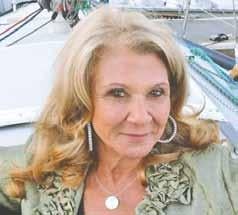
"Our series included the CBRA Series and the SFYC Fall Classic," explained Pat. "We had two throw-outs. The first day of Fall Classic had incredible wind, and we were surfing at 10 knots at times." (This on a non-spinnaker boat.)


Ron said that they enjoyed sailing in the YRA's CBRA Series very much. "The venues and hosting yacht clubs were all great — looking forward to more of the same next season."
"Next year our Alerion Season Championship will be determined only by the CBRA results," commented fleet captain Kirk Smith. "There will be six rather than four days of races. We will treat the Fall Classic as a totally separate regatta. This year the Fall Classic was won by Peter Tuxen on Margo, who didn't drop out on the second day of racing when the weather turned terrible." The Fall Classic was held in an unusually stormy midOctober. "Ditzy (Ralf Morgan) was second in the Alerion Season Championship and CBRA," and in the Fall Classic too.
Knarr — Three Boys and a Girl Chris & Phil Perkins/Hans Baldauf, SFYC
Chris Perkins says that 2016's most fun regatta was the IKC (International Knarr Championship) in September. "It was six days of racing on the Cityfront, and we had a great week. I sailed with my brother Phil, Hans Baldauf and Peter Clark. My sons Charlie (16) and Johnny (14) also substituted on one day each, which was really fun for me." The racing took place mostly on a flood current, which kept the boats all tacking up the Cityfront together. "I think the locals had a little advantage, as we get to do that a few times a season. Some of the Danes have been here five to 10 times so they know the Bay fairly well too."
Perkins has a harder time getting psyched up for races on the Berkeley Circle. "The racing is great," he explains, "but the commuting back
and forth from the Cityfront is sometimes horrible. In the '80s and '90s it was OK because we would drink a bottle of Jägermeister on the way home and all was good. Now, as we are a bit older, time is more valuable and the upwind grind into the afternoon breeze is tough."
Three Boys and a Girl won the Knarr season in 2015 too. "This year was really a carry on from last year. Our boat is going really nicely and we have a great core group. We had another great set of North Sails, so when you are fast and feel fast, the racing is fun and usually successful."
In addition to the regular crew — Phil Perkins, Hans Baldauf and Peter Clark — were Johnny and Charlie Perkins, Fritz Baldauf (Hans's 15-year-old son) and Eric Gray.
1) Three Boys and a Girl, 59 points; 2) Fempty-Fempty, Jon Perkins, SFYC, 83; 3) Gjendin, Graham Green, StFYC, 100. (20 boats)
SF Bay 30 — Heart of Gold Olson 911S
Joan Byrne, SBYC
Not a one-design class, but rather a collection of designs of similar size and characteristics, the SF Bay 30 fleet sailed
a relatively informal series this year that included RYC's Big Daddy, the Great Vallejo Race, the Jazz Cup, and the Great Pumpkin. A simple high-point scoring system was used, which rewarded participation and consistent results. Joan Byrne's 30-ft Carl Schumacher-designed Heart of Gold prevailed.
Byrne attributes her success to "racing to learn and working together as a team to perfect our sailing skills. Placement in the race is secondary to racing well as a team." She also cites "grooming and nurturing a fun environment that allows improvement of sailing skills and strong teamwork; provisioning great sandwiches and strong drinks after the
EXPRESS 27 CHAMPIONSHIP SERIESSEASON CHAMPIONS, PART III
racing is completed (and maybe providing a drink to our competitors before the race); and being fierce competitors on the racecourse, but kindred spirits after the race."
During the counter races Joan, Robert, Collette, Angel, Jan, Mark, Colin and Cheyene enjoyed close competition with different boats in the fleet due to their similar performance profiles, albeit with some boats slightly favored at different conditions. "This speaks to the importance of keeping the boat-performance profile close without being totally dependent on PHRF ratings. PHRF is only the base-qualifying criterion, with actual performance characteristics as primary consideration for class membership."
Byrne concluded: "When we race against each other it's so much fun."
1) Heart of Gold, 30 points; 2) Bay Loon, J/29, Grant Harless, BenYC, 26; 3) Rhapsody, J/32, Chris Boome, StFYC, 24. (19 boats)
MORE ONE-DESIGN CLASS CHAMPIONS
IOD (8r, 1t) — 1) One Hundred, Paul Zupan, SSS, 9 points; 2) Bolero, Richard & Mark Pearce, SFYC, 14; 3) Xarifa, Paul Manning, StFYC, 16. (4 boats)

On a sunny, warm light-air May Day, the Islander 36 'Windwalker' maneuvers into position for the start of the Great Vallejo Race in the Mare Island Strait.
ISLANDER 36 (9r, 2t) — 1) Windwalker, Richard & Tom Shoenhair, SSS, 9 points; 2) Zingara, Steve & Jocelyn Swanson, SBYC, 18; 3) Kapai, Richard Egan, SSS, 23. (8 boats)
EXPRESS 37 (7 regattas) — 1) Golden Moon , Kame Richards, EYC, 17 points; 2) Expeditious , Bartz Schneider, SFYC/StFYC, 26; 3) Stewball, Bob Harford, RYC, 33. (12 boats)

Out of curosity, we quickly tallied up the top three finishers that we've listed in the last three installments of season champions. Our count shows 25 podium finishers sailing under the burgee of Richmond YC, 19 hailing from
St. Francis YC, 17 from San Francisco YC and 16 from the Singlehanded Sailing Society. Including co-skippers/owners and counting Amy Wells of the F-27 Wingit three times, 17 were women.
If your class wasn't among the ones we profiled, let us know at racing@ latitude38.com and we'll add it to our database for next season. Please include contact information for your fleet captain, and a link to the fleet website — if it has one that's kept reasonably up to date.

In this month's selection of (mostly) one-design classes, last month's (mostly) PHRF divisions, and November's opening taste of one designs, we've presented a broad buffet of sailboats from which to choose that can be raced on San Francisco Bay (and beyond) to great success and enjoyment. We hope that this threecourse feature will inspire some racers to climb the ranks and improve their scores, and still others to give dinghy or yacht racing a try for the first time. With some luck, skill and commitment, maybe your name and photo will appear on these pages next year.
— latitude/chris







TRYING TO STAY CURRENT —
One of the frustrating aspects of living in this 'app-happy' era of endless innovation is that is it seems almost impossible to keep up with the latest, greatest developments in technology — including smartphone, tablet and computer software related to boating.
But knowing that many Latitude readers are remarkably tech-savvy and
routing during the OCSC Coastal Passage courses that I teach," writes Senior Instructor Trevor Steel. "These courses are six-day coastal passages. I know the app will predict well beyond 48 hours, but getting an overview of the systems approaching the West Coast is incredibly useful.
"Because Windyty is a calculated prediction, I tend to go to NOAA’s measured conditions for more immediate information after Windyty has shown an approaching system. That's a little 'old school' I suppose, but I’m still reluctant to put my crew's fate in the hands of an algorithm. Having said that, I am impressed by the apparent accuracy of the Windyty app."
swellmatrix.com is a mobile-friendly website that's popular with Bay Area and Southern California boaters. It integrates all kinds of coastal weather observations into reports and forecasts, including:


• Ultra-high-resolution wind forecasts

• Ultra long-range wind forecasts
• Detailed buoy reports and forecasts including a view of individual waves as they move the weather buoy!

about to blow a port rounding. Oops!
up-to-date on both apps and gadgets, we reached out to them last month for tips and recommendations on genuinely useful applications. (We'll look into gadgetry another time.)
The following are suggestions from our readers:
Windyty — "I use Windyty as a 48hour forecaster when planning coastal Swell
Boat Beacon for A.I.S. is a second recommendation from Trevor: "Boat Beacon gives real time with CPA, TCPA and all the other necessary info including images. (Android only, I believe.)"

Trevor also uses PredictWind (available for Apple and Android) which he finds "much more accurate than NOAA for daily forecasts."
Caleb Vandenberg writes, "This isn't exactly an app store app, but www.
• Satellite seasurface temperatures integrated with buoy SSTs
• Weather-forecast analysis from regional NOAA offices
"The best part is that it's made specifically for sailors and surfers, by a sailor/ surfer (me), integrating everything you want to know about

ocean conditions, and no more."
Lewis Allen and Alyssa Alexopulos (this month's covergirl) chimed in from the South Pacific: "Windyty, Navionics and Anchor Watch HD are apps we use every day while cruising.

"The first two are well-known. The third provides very useful real-time monitoring of our position relative to where we dropped the hook. It will sound an alarm if we leave a pre-set perimeter. It helps me sleep well at night knowing we aren't dragging. The only issue is that I consistently forget to push the 'pull anchor' button, so the alarm is usually blaring as we motor away!"
Steve Grange writes: "I recommend MarineTraffic — Ship Tracking, to see all the commercial shipping and many private boaters around you as they broadcast their AIS positions and info."
waves, and weather information at, say, Cabo Corrientes, one of Mexico's weather-prone capes. The second shot would typically show the 'data' view for the location of the cursor on the map.
"Anchor — Another favorite is our anchor alarm. Anchor updates the boat's position whenever it moves more than a specified number of feet (set from 5 feet to 60 feet), and it shows a graphic of the boat's movement, which is nice when the wind shifts in the middle of the night. The alarm range is adjustable.
"iNavX — We have paired iNavX with Heather Bansmer and Shawn Breeding's excellent Pacific Mexico & Sea of Cortez guidebook charts from Blue Latitude Press. When approaching an anchorage, the boat is superimposed on the iPad screen. I place a waypoint at each location where we anchor for reference when we return to that anchorage.
"Navionics — Our chartplotter has the same information, but Navionics on an iPad is much easier to work with, especially when creating a route. The screen shows speed over ground, and time and distance to each waypoint and the destination."
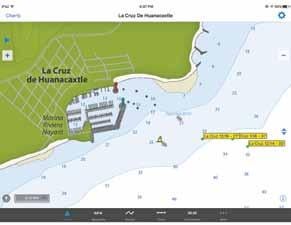

"I
Imray Tides Planner all the time," writes Gregory Clausen. "It's free, worldwide and has tons of Bay Area locations. Look at this seven-foot tide today!" (See Graphic lower left.)
From south of the border Robin Weber writes: "We're in our fifth year cruising in Mexico. The following are our favorite apps, installed on both iPhone and iPad.
" PocketGrib — It's always good to keep on top of the weather for passages, and when we have Internet we always download GRIBs before we depart. A typical first screenshot shows the 'map' view for one time block with wind,

Latitude staffers aren't the most techsavvy folks on the planet, but we have a few recommendations to share. Ad man Mitch Perkins likes The American Sailing Association's Sailing Challenge app, a learn-while-you-play game designed by Atari founder and avid sailor Nolan Bushnell. The idea was to create a teaching aid for ASA instructors that would be fun yet educational. And by all accounts it's been a huge success.
Latitude publisher John Arndt recommends RaceQs a racing simulator de-
Everybody seems to love Windyty. Not only is it useful in reat time, but its constantly moving graphics could entertain you for hours.
use
TRYING TO STAY CURRENT
veloped by local racer Sergey Lubarsky, that aims to "evaluate and improve your sailing performance" through 3D, animated race replays.
Also, ASA's Go Sailing , which was devloped in the Bay Area by Kroocial Founder Paolo Dilda. Its aim is to make it easy for like-minded sailors to connect and get out on the water.
As noted in ' Lectronic Latitude, folks at the Gulf of the Farallones National Marine Sanctuary, a NOAA affiliate, are encouraging West Coast sailors as well as commercial vessel operators to download the free Whale Alert app for iPhones and iPads, and participate

NOAA has collaborated on at least two useful whale and dolphin apps that can increase your knowledge.

in data-collection efforts.

Developed by a collaboration of agencies and nonprofits, it allows users to report sightings of whales offshore or inshore, and view crowd-sourced warnings of potential encounters. It also encourages mariners to use it as a speciesidentification aid. Researchers tell us that 19,000 gray whales, in addition to other species, migrate along the coast between November and May.
Having real-time access to NOAA buoy info can be extremely useful for route planning.
US Coast Guard app which allows you not only to register a float plan when sailing offshore, but also to brush up on the rules of the road, call for help and report hazards. It shows NOAA weather buoy locations and allows you to access their data in real-time and more.
We'll
take a break here knowing that we've got a lot of 'app homework' to catch up on. But we're certain that we've only scratched the surface of what's available. So feel free to email us about other apps you love, and look for another round of reviews here soon.
We also like the free, multi-function
— latitude/andy






Idon't know if the drought is over, but I do know that the skiing is great.
It had been a few years, but after three or four runs down an easy hill I was feeling the rust coming off, and decided to get in line between two kids with snowboards for the chairlift to the top of a more advanced slope. It was only after all three of us had been scooped up by the chair that I realized who I was setting next to.
"How was that last ride for you, Max?"
Lee Helm lifted up her tinted goggles so I could see her face, although the voice was unmistakable.
"Much too intermediate for me," I answered with deliberate ambiguity.
"For sure," she answered, without calling me out for my non-responsive answer. "But like, on this next run, if you don't mind some quick jibes around some trees, I know where there's still some virgin powder. Follow me if you can, on those old-timey sticks of yours."
"Hey, they're more efficient than that semi-evolved cafeteria tray you kids slide down the hill on," I retorted.
"Efficiency, schmeficiency," she replied. "We have this big machine called a chair lift to supply us with, like, all the potential energy we need."
At that moment the lift came to a grinding halt.
"Third time this weekend," sighed the snowboarder sitting on the other side of me.
"Hope it's not down for too long," I said. "We could all freeze to death dangling here up in the air."
Actually, it wasn't such a terrible
place to be stuck. We were high enough for a spectacular view, especially if we looked back over our shoulders. And the only sounds were the swishing of snow on skis and boards underneath us. A light breeze swayed the chair gently in the bright midday sunlight and the crisp, high-altitude winter air.
Lee, meanwhile, was removing her gloves and digging deep into her snowboarding parka, pulling out a large cell phone.
"Wanna see my Hawaii photos?" she asked. Without waiting for an answer, she ran a slideshow of last summer's race. It was all about warm blue water, trade winds, tropical sunsets, mahi-mahi served in the cockpit, and finally the mai tais and the leis at the finish line.
My seatmate on the other side got a good view also, and was intrigued by the images.
"How long does it take to sail to Hawaii?" he asked.

"We did it in 11 days," she said. "It was a fast race this year, especially for a small boat like the one I race on. The bigger boats fin-
ished in nine or 10. Twelve days is typical for a 40-footer."
"Twelve days," he repeated, apparently fascinated by the concept. "What do you do at night?"
"Take turns," I explained patiently, having learned not to make fun of the classic newbie question. "Half the crew sleeps, half the crew is on deck racing the boat."
"Wow, what an awesome adventure," he said. "How does someone get to be part of the crew on one of those boats?"
"Be a cardiologist," I answered, forgetting for a minute that it's really not fair to have fun with such beginner questions. My new friend seemed confused. "Really," I explained. "The owners are getting older every year, and so are most of the crew."
"Actually," Lee added, "EMT training might be more useful than cardiology. But, like, you get the idea. Those old farts like to have some medical talent on board."
"Do you have to have a lot of sailing experience?" he asked.
"Of course," I confirmed. "But understand that it takes years to get to the skill and experience level you need to be invited on a Hawaii race based on your sailing
HOW TO GET A BERTH ON A HAWAII RACE BOAT
1) Be a cardiologist. Race boat owners are getting older every year — as are many regular crew. (EMT training might even be better.)
2) Post your CV on the race website in the crew forum. Update it as necessary to keep it on the first page. You can't win the lottery if you don't buy a ticket.
3) Keep the time slot available. When a crew spot opens up two days before the start, everyone else will have already made other plans.
4) Attend a US Sailing Safety at Sea seminar. At least one-third of the crew are required to have this certification, and without it you might not be eligible
to replace a crew who does. You'll learn a lot of good stuff, too.
5) Contribute! Attend the planning meetings, join the organizing yacht club (Transpac YC or Pacific Cup YC) and volunteer for committees. Do more than your share of the grunt work that makes the parties and seminars successful. When a last-minute spot opens up, the people likely to be in a position to get you on a boat will reward your loyalty.
6) Be available for the return delivery. Owners like to have one of their crew do the round trip, especially if they are leaving the return trip in the hands of a hired delivery skipper.
7) If all else fails, join a crew for the return delivery only. If you are hanging out at the finish-line yacht club during the last week of July, and can walk and breathe, and have no obvious personality defects (or even if you do), you will be asked to help sail a boat home to California. It's not racing, but it's a reliable way to get your first offshore experience and log some time on a big race boat.
8) Become a great sailor. Join your local sailing club or sailing center. Sail, race, and teach as much as you can. Don't skip the essential small-boat phase of your sailing education.
"Wow, what an awesome adventure. How does someone get to be part of the crew on one of those boats?"
chops."
Lee, meanwhile, had put her phone away and her mittens back on, but took them off again to retrieve something else from deep within her winter gear. It was a flyer for the university sailing club back on the Bay.
"This is, like, the cheapest and best way to learn to sail," she insisted. "Partly because it's all volunteer, and because they make you an instructor way before you think you're ready. You really learn it when you have to teach it."

"Oh yes, I know that place," he said as he studied the brochure. "I checked it out when I was a freshman. But they only teach small-boat sailing. Shouldn't I find a sailing school that teaches on big boats if my goal is to be invited on a race to Hawaii?"
"No!" Lee and I answered together, simultaneously and emphatically.
"Small-boat instruction is vital," I said.
"Thing is," Lee explained, "A 15-ft boat in 20 knots of wind handles about like a 45-ft boat in 50 knots. But, like, no one will ever let you practice with a 45-ft boat in 50 knots of wind. You need to get good with a small boat. It's the only way to get the intuitive understanding of how to handle a big boat in a storm. There's no other way."
"Small boats develop the muscle memory, if you will," I added. "Big boats don't. After you get good in dinghies, there are commercial sailing schools that offer various levels of big-boat certification. Doesn't hurt, but don't make the mistake of starting out too big."
"I can always tell the sailors who learned on boats big enough to have knotmeters," Lee added, "by the way they
steer to windward. They never point high enough, always footing off for speed."
That comment sailed right over the new sailor's head, so I turned the discussion back to the issue at hand.
"Let's not give up on getting this guy a ride to Hawaii," I said to Lee.
"Right, there's one thing you can do that works wonders," she said. "Help to put on the race. That means, like, attending the board meetings of the sponsoring organization, and volunteering for committee functions. They need 'slave labor' to work on the parties, the seminars, the mailings, the website, whatever you're good at. Do the grunt work that makes the events successful. It takes a lot of time, but that way, when that last-minute crew spot opens up, the powers that be might think of you first, and reward you for your efforts — if they like you."
"I don't know," he said. "I'd feel a lit-
tle uncomfortable just hopping on a boat with people I had never met 'til a couple of days before the start."
"Gotta get over that," Lee advised. "There's no such thing as a bad sail to Hawaii."
"And at your skill level," I added, "it's very unlikely that you'd be asked to join a crew well in advance. Yes, typically, most of the boat's regular race crew are signed on many months before the start. Then there's usually nothing available until less than a week before, when people have a meltdown at work, or their back goes out, or some family issue comes up. That's when you have to be standing there with your seabag packed, so to speak. So circle the fleet like a vulture. A nice, friendly vulture, that is. And most important: Keep the time clear on your calendar, right up until the night before the last start, when everyone else will have already made other plans for the summer."
UPCOMING HAWAII RACES
2017 Transpac Race
• First start: July 3, 2017
• website: https://transpacyc.com
2018 Pacific Cup Race
• First Start: July 9, 2018
• website: https://pacificcup.org
2018 Vic-Maui Race
• First Start: TBA
• website: www.vicmaui.org
All of these events have pre-race events aimed at appropriate planning and preparation.
"Good strategy," he agreed.
"Don't forget to post to the 'crew available' forum on the race website," Lee suggested. "That's one of the main ways that skippers can find you. Update your listing often to keep it on the first page, make sure it says that you're available as a last-minute sub, and don't be intimidated by all the professionals you'll see who also have listings there. They will probably not be available a day before the start. But you will be. For sure, it's a long shot, but remember the ancient proverb: "You can't win the lottery if you don't buy a ticket."
"Cool, I'll do it! How much time do I need to block off for this?"
"Three weeks usually covers it," Lee answered. "Unless, like, you take the whole summer and do the round trip. Owners really like it when crew can sail both ways — especially owners who have to fly home and leave the return delivery up to some skipper-for-hire. A race crew,

someone they can trust, who knows the boat well, is very desirable to have on the return delivery crew. And, like, you'd save airfare too."
"Block off seven weeks," I suggested. Two weeks to get there, one week of parties, three weeks to sail home. One extra week for contingency, if there's stuff to fix before sailing for home."

"Eight weeks is better," said Lee. "You
need a few days before the start to stalk the fleet looking for that last-minute ride offer, and then to help with last-minute race prep if you're successful finding a berth."
Suddenly the chair lift came back to life, and we were moving up the side of the mountain again. The conversation turned back to snowboarding, in which context I became the newbie. As we approached the exit point, I invited Lee and our new friend to join me for dinner at the lodge right after sunset.
"Thanks, but I have to get home early tonight. Have a lot of paperwork to finish tomorrow."
"Missing a day of perfect snowboarding conditions for paperwork?" Lee exclaimed, sounding very surprised. "Like, what could be that important?"
"My application to medical school."
— max ebb
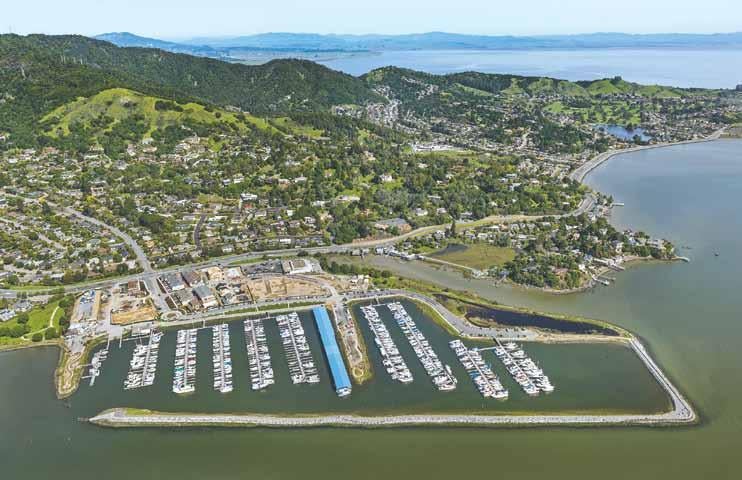








The first Racing Sheet of the New Year visits Midwinters from Berkeley to Sausalito to Monterey. We also sample some Hot Rum from San Diego and some Wild Turkey from Tiburon, and eavesdrop on OPBYC's Crew You Regatta in Richmond. We round off this section of the magazine with a handful of news items in Race Notes.
Chilly Berkeley YC Midwinters
The weekend of December 10-11 was the second of four weekends of the Berkeley YC Midwinters. The warm, light wind, flat water, strong currents part of midwinter racing had served the first two days of the series well on November 1213. "On December 10, we were treated to the 'wet, blustery, wind-shifty' kind of midwinter racing," writes BYC's Bobbi Tosse.
The forecast had called for the wind and rain to lighten up by the time of the noon start, but the morning's storm was lagging behind schedule. "By 11:30, Race Committee was still working at getting a course set up and the visibility s***ed!" said Tosse. "At one point the signal boat, Windance, totally lost sight of the markset boat and the bright green new 8-ft inflatable buoy. Mark-set lost sight of signal boat and asked for directions to get back, even though they were only a half mile away!" Did we mention it was raining? The first start was thus delayed by 10 minutes.

Only 37 of the 53 boats entered made it to the starting area in the vicinity of XOC, the center of the Berkeley Circle. (as the actual XOC buoy was off station, the RC employed a bright orange inflatable mark for the pin end of the start-finish line.) Small jibs were called
for in the gusty weather. Though some of the more tender boats reefed deeply, the Express 27s went with full-hoist mains.
The next delay came with the third start, when the 16 Express 27s were over early en masse and suffered a general recall. "After a second general recall the Expresses were obligated to go to the back of fleet and start last," explained Tosse.
"Meanwhile, Divisions A & B were scooting around the double windward/ leeward course. The result was that as the 16 Express 27s hit the start line at 1 p.m., Stewball, Bob Harford's Express 37, arrived to finish at 1:01. What fun!"

"Oh, well; at least there was some starting practice," was a comment heard from Express 27 sailors later at the bar. Meanwhile, in Division A, the Antrim 27 Arch Angel lost her skipper overboard. Bryce Griffith explains what happened: "We started the race in good position. The main was reefed and the wind was around 23 knots with gusts to 26 knots. About two minutes after the start, we heard a loud pop and our jib sagged about 12 inches — we had broken the clam cleat that holds tension on the jib that allows the boat to point. We may have put too much tension on the cleat, or it could have failed due to long use. So we struggled to jury-rig the tensioner so we could continue. Most of the leg was spent with a crewmember on the foredeck trying to put on a shackle so we could tension the jib. We were not able to furl the jib after the jury rig. About three minutes before the weather mark we got it rigged.
"Once we cleared the mark we set the

chute and took off like gangbusters, hitting 12-15 knots on the downwind leg. I called for the crew to stand by for a jibe and started to step to port and around the tiller to set up for the jibe; in doing so I either caught my left foot on the mainsheet or an errant shoelace got stepped on, causing me to fall to port with the tiller trapped between my knees. This caused the boat to do a hard roundup and threw me overboard.
"The SOSpenders inflated immediately. It was a great relief to have flotation, but an immediate problem was apparent: I had not been able to find my thigh straps that morning so the vest floated up around my face causing me to have to keep pulling it down. Another problem presented itself: I could only float on my back and could not get my feet down so my head could be up. In the short 2-ft chop, that position causes you to feel like you are being water-boarded about 100 times. Another possible contributing problem may have been air trapped in my foulie pant legs and my waterproof socks. I am going to check this out in a pool to see if either or both create excess flotation in the legs.
"Jim Antrim took the helm while the crew got the chute down. Jim thinks this took about two minutes. Then they start-
ed back for me. Another boat, HotSocks, skippered by Nathalie Criou, came to the rescue very quickly. They threw a line to me, but I was not able to hold on due to the speed of their boat. Arch Angel made a pass at me but they could not get the jib in when Jim tried to shoot up to windward, so they missed. HotSocks made another pass and threw a line, and I was not able to hold onto that either due to their speed. On the next pass by Arch Angel, Jim was able to shoot up to weather (remember they could not furl the jib due to the jury-rigged tensioner), and a crewmember tried to reach a hand out to me; we missed grabbing hands.
"I was starting to get hypothermic at this point. About 7-10 minutes had passed, so, even with my breathing under control and flotation, I was starting to lose strength. I believe that HotSocks tried to back down to me after dropping their mainsail and tried to get me a line once more, but with the wind and waves that did not work. On the third pass by Arch Angel, Jim shot up to windward close to me and the crew employed the boat hook to reach out to me. I was able to grab it and hold on while they pulled me aboard. Left with no strength and very cold, I was very happy to be back onboard."
"Sunday was a complete bust," reports Tosse. "No wind, no racing. Not much sun either — Sunday was almost as cold as soggy Saturday. About 28 boats bobbed around from 11:30 to almost 2 p.m. before the race committee gave up and sent them home. "This nowind feature is another part of Midwinter racing," philosophizes Tosse.
Saturday's results can be found at www.berkeleyyc.org/racing. The next installment will be on January 14-15.
— latitude/chris
Sausalito YC Chili Midwinters
After a 1:20-hour delay waiting for wind, Sausalito Yacht Club's Chili Midwinter race on December 4 started under gray skies in a light westerly wind. Two spinnaker divisions and the J/105 boats were sent on a 6-mile windward/leeward course around temporary marks roughly located near Sausalito's Yellow Bluff and Angel Island's Point Knox. The course involved three roundings at Yellow Bluff, two at Knox, and a downwind finish.
Two non-spinnaker divisions sailed a shorter 3.8-mile course around the same marks, but with one less circuit. All divisions faced a l.3-knot flood and a 4 p.m. deadline to finish.
Shortly after the start the wind began
to drop, and, as the afternoon wore on, boats began calling in announcing their retirement. The early westerly turned into an east wind coming through Raccoon Strait, changing the final run to the finish line into a slow windward leg against a mix of light and no wind.
Seven boats started in Division A and six finished. Gary Penariello's J/88 Courageous was first. Three J/105s started, with two finishing. Ron Anderson's Streaker came in ahead of Chuck Cihak's Hazardous Waste
Six Division C boats started and two finished with only a few minutes remaining before the deadline. Ron Young's venerable IOD Youngster finished first.
In Division D seven non-spinnaker boats started and five finished. Philip Hydman's Cal 29 Serendipity was first.
Two boats crossed the start line in Division E, but Jan Hirsch's Islander 30-II Sweet Pea was the only finisher, just three minutes before the deadline.
All crews are invited back to the clubhouse in Sausalito after each race for complimentary chili and daily prizes. Full results and photographs are on the website at www.sausalitoyachtclub.org The next SYC Chili Midwinter is scheduled for Sunday, January 8.
— pat broderick
Racing to Hot Rum in San Diego
In the late 1950s, San Diego YC member Herb Sinhoffer said, "Why don't we have a winter series where we start the boats on their handicaps so that they all get to the bar at the same time and enjoy a bit of rum to celebrate the race and our great San Diego weather?" Fast forward almost 60 years, and the Hot Rum Series is one of the most popular fall sailing events in San Diego. This year, SDYC hosted the series on three Saturdays: November 5 and 19 and December 3.
The 132 boats registered for the 2016 series ranged in size from For Sale, a
For more racing news, subscribe to 'Lectronic Latitude online at www.latitude38.com
December's racing stories included:
Vendée Globe • RORC Transatlantic Encore Wins ORR Championship
Round-the-World Record Attempts Leukemia Cup Fantasy Sail
Plus preview of the Crew You Regatta, and more!

20-ft T590, to Velos, a 73-ft sloop. The race utilized a pursuit start, meaning the slowest boat started first and the fastest boat started last, the idea being that most boats would finish around the same time.

SDYC's Rick Goebel was the Hot Rum I leader on his J/105, Sanity, and Tom Purcell from Balboa YC took the lead after Hot Rum II on his Andrews 49.9, It's OK. Hot Rum III on December 3 featured the most wind out of the three days, and SDYC's Heather Madden took the overall win on Stark Raving Mad VII, her Swan 601.

Each race featured a party at SDYC, which competitors are rumored to enjoy more than the sailing itself, honoring Sinhoffer's initial idea for the series.


— emily willhoft
SINNHOFFER HOT RUM SERIES, SDYC (3r, 0t)
DIV. 1 — 1) Staghound, R/P 50, Alec Oberschmidt, 10 points; 2) It's OK, Andrews 49.9, Tom Purcell, 11; 3) Stark Raving Mad VII, Swan 601,
Heather Madden, 11. (14 boats)
DIV. 2 — 1) Menace XXIV, N/M 43, Dennis Conner, 11 points; 2) Caper, J/120, John Laun, 21; 3) Precepts 3.2, Melges 32, Drew Belk, 23; 4) Justice, Flying Tiger 10, John Harrop, 26; 5) Wiki Wiki, Beneteau First 40.7, Mike & Carol Honeysett, 27. (32 boats)
DIV. 3 — 1) Sanity, J/105, Rick Goebel, 8 points; 2) Ohana, Swede 55, Joe Markee, 8; 3) Wings, J/105, Dennis Case, 15; 4) Super Fly, Cheetah 30M, Steve Mollering/Erik Rogers, 21; 5) Viggen, J/105, Erostino Dagfish, 23. (33 boats)
DIV. 4 — 1) Vagazo, J/70, Fabian GomezIbarra, 4 points; 2) Soggy Dollar, J/70, Dave Vieregg, 12; 3) Paladin, Olson 34, Van Hughes, 12; 4) Nunuhunu, J/70, Steve Wyman, 13. (19 boats)
DIV. 5 — 1) Wani Racing, Ericson 35 MkII, Karen Busch, 5 points; 2) Midnight Express, CF27, Chris Winnard, 5; 3) Sea Maiden, Ericson 35 MkIII, Carolyn & Sandra Sherman, 17; 4) Valkyrie, Moore 24, Aaron Sturm, 19; 5) Cimarron, Ericson 35 MkII, David & Robin Basham, 19. (26 boats)
DIV. 6 — 1) Masquerade, Ranger 37, Mick Moore, 4 points; 2) Aquarius, Alerion Express 28,
Lisa Leweck, 5; 3) Last Call!, Catalina 36, Rich Chambers, 10 (4 boats).
OVERALL — 1) Stark Raving Mad VII, 18 points; 2) It's OK, 23; 3) Staghound, 23; 4) Blue Blazes, R/P 50, Dennis Pennell, 24; 5) Velos, Tanton 73, Kjed Hestehave, 28; 6) Kokopelli2, SC52, Lani Spund, 38; 7) Ohana, 40; 8) Sanity, 42; 9) Menace XXIV, 55; 10) Midnight Express, 59. (128 boats)
Full results at www.sdyc.org
Ducky Crew You Regatta
After a long season of San Francisco Bay racing it can be fun to just goof off a bit, which is exactly what happened at the fourth annual OPBYC Crew You Regatta on Sunday, December 11. Hallmarks of the day: no wind, lots of whiskey, several pranks, concern over seagulls befriending rubber ducky marks, and the appearance of Tuna, the plasta-fish. Don Taylor offered his Farallon Clipper VIP to serve as the race committee platform, and Bill Helvestine again dropped marks from Heyalice, his Bertram 20. Helvestine was assisted by impish staff, who insisted on shaking up the bottles of beer prior to placing each into the brew pick-up duck mark.
Helvestine also doubled as live broadcaster: "At 35 seconds away from the
line on Race 1 it was an exciting start," he announced. "In half-knot winds Downtown Uproar took up Evil Octopus, which resulted in a little pushing off. Just behind we saw boat three, Shut Up and Drive, a bit late to the line but with excellent s-p-e-e-d. We're not sure what happened on the course to entrants four and five, but one of the boats did show at the post-race raft-up." All were J/24s.
After an initial boat retirement call-in, followed by a VHF-shared global protest to all from Downtown Uproar, organizers deemed just one race on a shortened course to be ample for the day. Crews then convened aside VIP for the prize giving. Third-place accolades went to Downtown Uproar with Robin Van Vliet at the tiller. In second place was Evil Octopus with Jessica Ludy steering. According to regatta PRO Hans Opsahl, the crew earned this achievement via "creative interpretation of rule 42." Rule 42 relates to propulsion, and how a boat shall compete by using only wind and water to increase, maintain or decrease speed.
Taking line honors on an (extremely) shortened course was Valentin Lulevitch's Shut Up and Drive. Could it have been superior boat handling or the lean,


all-male crew of only three that propelled them to victory? No matter the factors, race director Jasper Van Vliet recognized the team, bestowing a mildly tarnished silver ice bucket which was quickly deemed "the perpetual pee bucket" by an envious competitor.
— martha blanchfield
Mercurys in Monterey
We had 14 Mercs for the second weekend of the Perry Cup, hosted by Monterey Peninsula YC on December 3.


The sun was bright and the breeze was northwest at about 8-10 knots. There was a swell, but not much, on the otherwise pretty smooth sea. Three races were started with a twice-around course, finishing downwind.
Race 1 proved that old adage in Monterey: Go left as you might get a little lift off the shore going to the mark. Stay away from lighter winds and chop. Dave West and Chris Krueger got the start, went off to the left, and were never headed. Kate Conway and Doug Baird followed, holding off Mark and Liz Chandler. Jim Bradley and Maryan
Gonnervan were fourth, with Chris Davis and Hal McCormack placing fifth. This was Chris's best finish with his newly purchased Merc.
Race 2 was more of the same conditions. However, going downwind the shore side seemed to work better, but slight shifts could make a difference. Pax Davis and Ann McCormack went to the middle on the first downwind leg, catching up to Conway as they went inshore. Conway went to the middle on the run to the finish; Pax Davis went to the shore and won by a couple of feet.
Race 3 and the wind began to weaken. Dave Morris got the start and had to hold off Conway on the run as the course was shortened.
The next race day will be on January 7. See www.mercury-sail.com — pax davis
Wild Turkey Spotted in Tiburon
At Tiburon YC, the racing fleet has traditionally celebrated Black Friday in a different way. Who wants to be fighting crowds in the malls, getting stuck in traffic jams, or driving around parking

lots looking for the rare vacant space? Instead, the racers participate in the Wild Turkey Regatta off Paradise Cay in Tiburon. The Wild Turkey is a play on post-Thanksgiving feelings as well as a tangible post-race benefit.
This year, six boats sailed a pursuit race. The wind was forecast to be out of the southeast; instead they got a very fluky northeasterly and a strong ebb. All boats started at (or about) their allotted time and glided on a tight reach (all the spinnakerdivision boats managed to carry their spinnakers — just) to the first mark. Here the fluky wind and the strong ebb favored those who started later as they rounded the mark and headed upwind and up-tide to the next mark. The others struggled to round the first mark as they were pushed south by the current. In the end, this made all the difference, as Lon Woodrum's Olson 25 Lion kept inshore out of the current to finish first. Mariellen Stern's 26-ft Cinnamon Girl tried a more direct route to the next mark but
couldn't pass Lion, and Bill Hoehler's J/105 Joyride couldn't close the gap to finish third. The last boat to finish before the wind died and the tide won was Ian Matthew's C&C 29-1 Siento el Viento.


At the clubhouse, the traditional prizes of Wild Turkey were handed out and shared with all participants.
— ian matthew
TYC WILD TURKEY RACE, 11/25
SPINNAKER — 1) Joyride, J/105, Bill Hoehler; 2) Siento el Viento, C&C 29-1, Ian Matthew. (3 boats)
NON-SPINNAKER — 1) Lion, Olson 25, Lon Woodrum; 2) Cinnamon Girl, Beiley 26, Mariellen Stern; 3) Adagio, S2 9.2A, Jon Price. (3 boats)
Race Notes


Rio 2016 bronze medalist Caleb Paine of San Diego repeated his third-place performance in the Finn class at the Sailing World Cup Melbourne Final. The Final was hosted by that city on the southeast coast of Australia on December 4-11. As sailing's only American Olympic medalist, Paine had visited the White House to meet President Obama. Back on the water in Melbourne, he was happy to have a tiller in his hand again. "It takes a lot of time to process what the Olympics means to you and what it entails," he said. "The whole thing is massive and hard to put into perspective, so I gave myself

some time after the Games, which was really valuable." Paine was bested in the World Cup by Australian Jake Lilley and Brit Ed Wright.
Ironically, while we were following the San Diegan's exploits in the Finn, the news broke of Paul Elvstrøm's death on December 7. Elvstrøm won Olympic gold for Denmark in the Finn three times after first scoring gold with the Firefly in 1948. For a look at Elvstrøm's long and stellar life, see Sightings
In other singlehanded dinghy class news, the International Laser Class Association has announced that a new class-legal composite top-mast section is expected to be available in early 2017. "Because the new mast was designed with the exact same weight and bend characteristics as the existing aluminum upper sections, it will not provide a performance advantage." According to ILCA's technical officer, Clive Humphris, "The new mast will be much more durable and won't be prone to permanent bending like the aluminum masts."


"Sailors won't need to worry about straightening their masts after a day of heavy-air sailing," said ILCA president Tracy Usher, a Bay Area sailor who tested the new mast section in a variety of conditions.

Team Alula sailed and rowed an F-27 from Port Townsend to Ketchikan in the Race to Alaska last summer. What made their story remarkable is that the trio of sailors are paralyzed. Their struggle and accomplishment are the subject of a 23-minute documentary called Hard
Ship, now available to watch at www. greatbigstory.com/stories/hard-ship-areally-great-big-story
An international team that includes four Bay Area sailors has entered December 26's Rolex Sydney Hobart Race . Jeff Phillips, Jackie Manrique, Patrice Szeto (all from Sequoia YC) and Mike Reed will sail aboard Ted Tooher's Beneteau First 47.7 Chancellor. "I will be watch captain and Jeff will be our navigator," says Reed, who plans to report on the 628-mile race in the February issue of Latitude 38. For info on the RSH, see www.rolexsydneyhobart.com
Local racers have been wondering when the 2017 YRA schedule comes out; if you have this issue in your (virtual or biological) hands, the new Northern California Sailing Calendar and YRA Master Schedule is now available too. Pick one up at Bay Area Latitude distributors, find it online at www.latitude38.com, or order one by mail (send $5 to Latitude 38, 15 Locust Ave., Mill Valley, CA 94941). The YRA is mailing them out at no charge to all skippers who registered for a YRA race in 2015 and 2016.
— latitude/chrisWe focus this month on a fabulous chartering region that's practically in our own backyard: The Pacific Northwest's Salish Sea
Sailing the Emerald Maze of the Salish Sea
Over the years we've expended countless gallons of ink telling you about dreamy, faraway charter destinations. But you needn't fly halfway around the planet to find a spectacular sailing venue that your whole family will enjoy; the watery wonderland called the Salish Sea lies only a two-hour flight from the Bay Area and is home to many small fleets of well-maintained bareboats.
Taking its name from the region's original human inhabitants, the Salish Sea encompasses various bodies of water that lie between British Columbia's Vancouver Island east to the western coastline of BC and Washington state, including the Strait of Juan de Fuca, Georgia Strait, Puget Sound — and both the Gulf and San Juan Islands. Although there are pockets of development throughout much of this 7,000-square-mile maze of islands, inlets, fiords, and sounds, the predominant feature ashore is a seemingly endless carpet of lush green forests that are as fun to explore via hiking trails as they are beautiful to behold.
Due to its northerly location, the chartering season in the Salish Sea is relatively short: from May to September. So it's important to lock in a reservation well in advance — like right now — in order to have a reasonable choice of boats. Again, fleets here are not huge. Believe it or not, bald eagles are commonly sighted from the waterways of the Salish Sea. This one was having fish for lunch.

Although winds are often light and variable, we've enjoyed many splendid days on the water here, as every time you round a headland, another beautiful vista opens up. And with summer sunset occurring as late as 9 p.m., you'll have several hours more playtime than you would in the tropics.
Some islands offer modern marinas with 'resort' facilities ashore, while others are completely uninhabited, and maintained by the Washington or BC parks system. In addition to the options of anchoring or berthing in a marina, overnight mooring buoys are available in many anchorages, with the fees paid in advance by some charter firms via each bareboat's annual mooring license.
Although you do have to pay careful attention to tides and currents — both of which are more extreme than in California waters — navigation through the islands is relatively simple, as charts are accurate and aids to navigation are plentiful (also, most bareboats come equipped with chartplotters).
Wildlife abounds in both the forests and waterways. In fact, both bald eagles and orcas are common sights here. Likewise, fresh seafood is abundant throughout the region, especially salmon and crab. Some bareboats actually come equipped with crab pots.
During a single charter it's possible to sail in both US and Canadian waters. Clearing in and out is quick and easy — and often accomplished within an automated immigration kiosk equipped with a special phone and a passport scanner. (All crew do need passports.) For Americans, a huge plus to dual-nation chartering these days is that the US dollar is currently valued 1/3 higher than its Canadian cousin, meaning that everything from classy dinners ashore to diesel fuel is a bargain for American travelers.
We have many wonderful memories of cruising the American San Juan Islands, the Canadian Gulf Islands and the unspoiled anchorages of Desolation Sound. And

as you'll read below, so do many other Bay Area sailors. What follows are tips and feedback sent in by Latitude readers:
"If you're into natural beauty, check out the famous Butchart Gardens on Vancouver Island, about 15 miles north of Victoria. There is a small cove in the back (north end) that has free moorings for boaters who visit the gardens. We stayed there two days. From there it was really easy — and cheap — to catch a local bus into Victoria for the day."
— tim stapleton"I sailed throughout the American San Juans enjoying the natural beauty that those islands provide. It was easy, pleasurable sailing with a plethora of anchorages to choose from. Too many to list.
"Many of the islands have restroom and camping facilities maintained by the state of Washington, which is nice for a small-boat sailor.
"Washington State websites provide
plenty of information about island facilities. Also be sure to bring along a good tide book, since currents are the main challenge to sailing in this area."
— neal holmlund"I've led a few flotillas up there over the years, and recently spent six weeks chartering a brand-new 48-ft cat, which we sailed from Victoria up to Juneau, Alaska, and back. I realize that's a little farther than most charters are going to get, but I think it gets better the farther north you go.
"As for tides and currents, yes, you need to plan with them in mind, but unless you are in a very small boat, I wouldn't avoid max floods and ebbs like the charter books recommend. (They often suggest only transiting at slack tide). We took advantage of every big tide we could catch, and rode the big currents — at speeds up to 17 knots! — with ease
and no worries.
"We had great success crabbing; not so good with fishing. But local fishermen were so friendly on the docks they offered us plenty of fresh fish just for the conversation."
— david koryOF CHARTERING
"Before you charter, order (via Amazon or elsewhere) a copy of the fascinating current guide titled Current Atlas: Juan de Fuca Strait to Strait of Georgia, which is put out by the Canadian Minister of Fisheries. Also get the free tables that correspond to it: http:// borsboom.io/currentatlas-tables/.
"You find the date and time in the table and look up that corresponding numbered
page in the Atlas to see the big picture of what the currents are doing at any given moment.
"Some chartplotter software (including PolarView, which we use) has current predictions available for specific stations, but few have that information for Canada Looking at the whole picture is much easier with the Atlas.
"It seems the majority of people talk only in terms of not fighting the current. Don’t forget to actively look for the free ride on the current. But remember, avoid current against wind, and don’t think tidal overfall markings on charts only apply to sea kayakers. They can be scary even in big boats, so treat them with respect.
"It may go without saying, but be sure to calculate your scope so you have reasonable rode out at the highest tide, and then make sure your swing radius at the lowest tide isn’t so big that you’re in danger of hitting the boats near you.
"When choosing a boat for Northwest chartering, look for boats well-equipped for the Pacific Northwest weather, including pilothouses or boats with fully enclosed cockpits, as well as cabin heaters. It will make your trip much more comfortable, and being able to travel in inclement weather can give you better sailing wind, allowing you to leave the calm, sunny days for exploring on land.
"There are lots of great hiking opportunities on some uninhabited islands, and lots of good walking around towns in the more populated areas like Anacortes, Bellingham, Friday Harbor, Ganges, Vic-


 The richness of natural colors will enhance your cruising experiences. The extreme angle of the gangway illustrates the tidal range here.
Bathed in painterly evening light, the Empress Hotel is a classic landmark of Victoria Harbour. Slips are available out front.
The richness of natural colors will enhance your cruising experiences. The extreme angle of the gangway illustrates the tidal range here.
Bathed in painterly evening light, the Empress Hotel is a classic landmark of Victoria Harbour. Slips are available out front.
toria, etc.
Check to see if your charter boat has a Washington State Parks season pass. If so, you can moor and dock at state parks for free. If not, the fees are still reasonable, and there are quite a few spots (Patos, Rolfe Cove on Matia) where the state-park docks and mooring balls are your only options, as anchoring is very challenging.
"If at all possible, give some thought to the shoulder seasons up there too. With a short 'prime' season, marinas and state parks can get rather crowded in July and August. But with the right style boat (pilothouse, enclosed cockpit, heat) spring and fall are great times to sail the Salish Sea. There's better wind (generally), empty anchorages, empty hiking trails and often discounted charter prices."
— bass sears
"This past August, my wife, two-yearold son, sister-in-law, brother-in-law,
mother-in-law, two dogs, and I chartered a Lagoon 380 catamaran from San Juan Sailing out of Bellingham,Washington, and spent an all-too-short week cruising the San Juans and the Gulf Islands.




"We experienced mostly light air, but one exception was East Sound in Orcas Island which reliably blows 20 knots or
more.
"You can spend a lifetime exploring the Pacific NW. We just barely scratched the surface of one corner of the area with our short trip and can't wait to explore more.
"There are many gems. The many guidebooks will tell you about some of them. Others are shared by word of mouth. Still others are not highlighted as gems by the guidebooks but will charm you nonetheless. For us, one pleasant surprise was the last night of our trip which was spent at Obstruction Pass State Park. After a fair amount of light air over the previous week we wanted to do some sailing and spent some time tacking up the 20- to 25-knot winds of North Sound in Orcas Island.
We grabbed one of the only two mooring balls at Obstruction Pass. This small, protected cove was a pleasant surprise. The San Francisco-like winds of East Sound were raging just a few hundred
feet away but all was calm, sunny, and warm tucked away in the cove."
— matthew davidchuk


"My sweetheart Robin came up in the middle of June and we made a quick three-week trip to Desolation Sound. The border crossing at Bedwell Harbor on South Pender Island is preferred for private yachts. We worked our way through the Channel Islands and stayed several days in Ganges and Ladysmith. The farmers' market at Ganges on Salt Spring Island is not to be missed. Heading farther north, we ran Dodd Narrows with about 20 boats going in our direction. We passed at slack water, but the current can run nine knots at full flood. A peanut gallery often forms on the banks to watch the boats trying to get through.
"We moved to Tenedos Bay and did our first stern-tie. We were visited by transient orcas that swam within 20 feet of the boat. We skinny-dipped in warm freshwater lakes and listened to the loons at sunset.
"Our last stop was Melanie Cove at Prideaux Haven. We anchored in 12

feet of water with snowcapped peaks all around. The water temperature was 74° degrees. The swimming was superb.
"The best wildlife moment was watching a great blue heron and a bald eagle duke it out over a fish."
— roy pitts"There are just too many places to highlight, but probably the biggest secret is the ability to anchor for free in False Creek at Vancouver, BC. You just need a permit, which you can get online (just Google "False Creek Permit"). With a dinghy, public transportation and/or a bicycle, you can explore the entire metropolitan area of this incredible city.
"If you want the best cruising guide for the entire Salish Sea, buy a Waggoner's Guide."

 — andrew rosen
— andrew rosen
In addition to lush greenery everywhere, you can often catch a view of snow-capped peaks in the distance. Seen here is Mt. Baker.
We thank all of the readers who took the time to share their experiences. And we hope their insights — and ours — will inspire you to have some Pacific Northwest adventures of your own.
— andyCHANGES
With reports this month from Moontide on completing the Salty Dawg Rally; from Pelagic on the Guyanas in South America as well as the Windward Islands; from Sea Loone on passing Culpepper Island on the way to the Marquesas; from Quixotic on a woman's view of catamarans; and Cruise Notes.
Moontide — Lagoon 47 Bill Lilly
The Salty Dawg and the BVI (Newport Beach)
"We sailors on the West Coast don't know what 'real weather' is," insists Bill Lilly, who sailed his Newport Beachbased Lagoon 47 Moontide in November's Salty Dawg Rally from Hampton, Virginia, to the British Virgins. "The wind and seas come from all directions at all different speeds, and there are a lot more fronts."
flowing Gulf Stream when it clashes with a front coming down from the north.
Lilly and his two female crew motored for the first 27 hours, something he's never done before, to get across the Gulf Stream before the front hit. They made it. After that they had six days of every kind of weather possible, from calms, to 12 hours of 35+ knots of wind, to an ideal final 48 hours of sailing south on 'Highway 65' trade winds on a beam reach in 15 to 18 knots.
Are

By saying this, Lilly echoes last month's comments of Jim Fair of the Berkeleybased Outbound 46 Chesapeake , who has sailed most of the way around the world, and who also did the 1,400mile Salty Dawg Rally with Linda Powers.
"The Salty Dawg is a much looser version of the Baja Ha-Ha," says Lilly. "Looser in the sense that only about half of the 81 entries started from Hampton, Virginia; looser in the sense that while most boats headed to the BVI, a number went to different destinations; looser in the sense boats started over a two-week period rather than on the official November 2 starting date."
Boats started either before or after the 2nd in order to avoid a front coming down from the north. The last thing anybody wants is to be in the northward-
Thanks to the cover on Moontide's two-year-old main halyard wearing off, midway in the passage Lilly decided that safety demanded he go to the top of the mast to replace it. Forty-eight hours after collecting a number of boat bites from going aloft in even calm conditions, Lilly got his reward. He was able to tuck in a much-needed third reef — for the first time ever — when the wind really came up. The boat had already hit a record 18 knots careening down a particularly steep wave with a double-reefed main.
The unusual thing about Moontide's eight-day trip is that the crew never got cold. "Normally Salty Dawg Rally crews freeze their asses off in the beginning of the trip," says Lilly. "Not this time."
"The Salty Dawg was very different from all the Ha-Ha's I've done," said Lilly, "in that we only saw two boats in eight days. During the Ha-Ha, we often saw eight or more boats at a time."
Nonetheless, a good percentage of the fleet, which included Eric Witte and Annie Gardner's San Diego-based Catana 47 El Gato, met up at the Bitter End YC in Virgin Gorda. One of the benefits of paying for a 'Premium' upgrade entry in the Salty Dawg was getting free moorings in Gorda Sound until December 19, when the Caribbean season really starts. Otherwise moorings are $30 a night, although it's possible to anchor, too.
"Another good deal," says Lilly, "was taking a mooring at nearby Leverick Bay or Saba Rock. Moorings are $30/night, but you also get a bag of ice and 250 gallons of water."


After about a week in Gorda Sound, Lilly wanted to hit some of the other spots: The Baths, Norman Island, the Willie T, the Soggy Dollar Bar on Tortola, Soper's Hole at the West End, Foxy's on Jost van Dyke, and
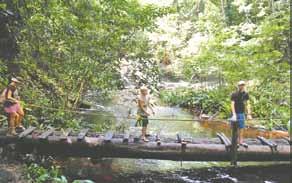

Cane Garden Bay. If you've chartered in the British Virgins, you know the spots. It was early December when we talked with Bill, so the howling Christmas Trades hadn't kicked in yet.
"The vibe in the British Virgins is so much different than in Mexico," says Lilly, who has a lot of experience in the latter. "This is charter country, and most of the people come down for a wild week. If I spent three years here I still don't think that I'd have time to visit every beach bar. And given the thousands of charter boats here, the locals are a little jaded. Unlike Mexico, the typical beach bar hamburger is $14. And they drink rum rather than tequila in the Caribbean."
Getting Internet in the British Virgins has been more problematic for Lilly than along much of coastal Mexico. "I have T-Mobile with free unlimited 2G in 122 countries," says Bill. "It's very slow, of course, but sometimes I can get email. Some of the beach restaurants have Internet, but a lot of them don't."
Bill and 'Moontide' were at Cane Garden Bay in late November and early December, early enough in the season so it wasn't crowded at all.One interesting quality about the British Virgins is how close the islands are. "My longest passage since getting here has been 5.2 miles," laughs Bill.
Bill's longer-term plans are to hit St. Barth and maybe Antigua for the big racing events, then Bermuda for the America's Cup in June, and then the Northeast.

— latitude/rs 12/01/2016
[Continued from last month.]
After our Atlantic crossing from the Cape Verdes and our visit to Devil's Island, French Guiana, we — with our kids Zander, 13; Porter, 11; and Anakena, 6 — sailed up the Maroni River to the French town of St. Laurent. The river forms the border between Suriname and

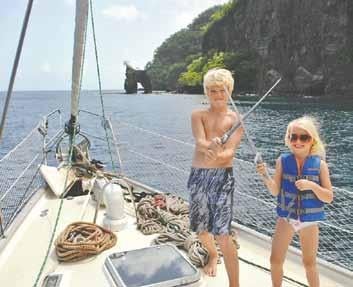
French Guiana. From here we rented a car and drove across the small country to watch a 4 a.m. launch of a Soyuz rocket as it blasted off from the Guiana Space Center. The successful launch put two more new GPS satellites into orbit. The Space Center launches a rocket about once a month.
After a few weeks in French Guiana, we sailed downriver and then up the coast past Suriname to the Essequibo River in Guyana. The Essequibo is the thirdlargest river in South America, draining some of the vast Amazon watershed. We motored 40 miles upriver against the river flow to the booming gold-mining town of Bartica. The town had a Wild West feel about it,
where cattle and large mining vehicles share the streets.
Gold is accepted as currency in most shops in Bartica. We befriended one gold merchant who let us watch as he purchased a sack of raw gold from a miner, melted it with a blow torch, poured it into a mold, and then instantly cooled the bar in a tub. He let us hold the $40,000 bar!

Despite the threat of piranha, snakes and electric eels, we swam in both the Maroni and the Essequibo Rivers. Although technically fresh water, the tannin-rich, coffee-colored river waters were not nearly as inviting as the sea. And we were never quite sure what was lurking right below the surface. Luckily, the dangerous residents of the various Amazon rivers are usually found in the slower-moving headwaters and tributaries. So if we saw local people swimming and emerging with all their limbs intact, we went in also.
The jungle wildlife was fascinating, with ocelots, blue morpho butterflies, toucans and ever-present screeching parrots.
The high temperatures and frequent rain, however, got old. The one good thing about the rain is that we never had to run our watermaker. We just opened the water fill port in the deck and fresh water ran straight into the tanks. Fifteen minutes of rain was enough to put 75 gallons of water in our tank. The unlimited water was nice, but we were forever trying to dry things out and keep the mold at bay.
Visiting the Guyanas — French Guiana and Guyana — is not for everyone, but they are uncrowded and safe alternatives for the hurricane season.
From the Guyanas we had a fast sail to Tobago, taking advantage of an almost three-knot equatorial current. Tobago There is something about the Caribbean that seems to bring out the pirate in just about everyone — even Porter and Anakena.
CHANGES
was a pleasant surprise, and to date our favorite Caribbean island. The islanders were friendly, the snorkeling and fishing — spear fishing is allowed — was great, and there were only a handful of cruisers who ventured that far southeast.
From Tobago we sailed north to St. Lucia, St. Vincent and the Grenadines, and Grenada before heading back south to Trinidad to get some muchneeded TLC for Pelagic.
To get to Trinidad from Grenada, you have to sail close to Venezuela. Thanks to the legacy of Hugo Chavez, Venezuela is in dire economic straits at the moment. We have heard that they have even run out of beer and toilet paper. There have been several acts of piracy in and around Trinidad.
The most recent boarding, perpetrated by desperate Venezuelans, had been more than six months before, so we didn't feel as if we were taking undue risk making the 80-mile passage. But to be safe, we made the trip from Grenada in the dark, without running lights and AIS. We also convoyed with four other boats. While we maintained radio silence, it was reassuring to know they were out there, too. The Trinidadian Coast Guard is also taking steps to monitor the waters.
We are currently back in Grenada enjoying the company of many other cruisers who are also hiding out from the hurricanes. There are numerous 'kid boats' here, and activities are usually
Mom and the kids in the Windward Islands. They took the 'less traveled route' — via Europe, Africa and South America — to get there.

organized for every day. The older kids have been learning to free dive, snare lobsters, and sail the small dinghy we just acquired. Ana, our youngest, is enjoying the multitude of other six-year-old girls on boats in the anchorage.

After a month in Grenada, Mike is itching to weigh anchor and get going again. He wants to head to the Dutch Antilles, Cartagena, and the San Blas Islands of Panama. Until then, he is keeping busy fixing things. In the last week, a wayward child broke the radiator hose while playing hide-and-seek in the engine compartment, and someone primed the outboard fuel bulb so many times that the gasoline backed up and filled the oil pan. But we aren't quite ready to give up the social activities and easy life here at anchor in Grenada.
Mind you, it's not all easy living. We do still have three growing kids and are feeling a little cramped on our 42-foot boat. We envy those parents on the spacious catamarans we see at anchor all around us. The three small children we started our voyage with have been growing and are needing more space — and, a tremendous amount of food!
We've enjoyed great luck in all things important on our two-year cruise from San Francisco, through the Canal, to Europe, and back across the Atlantic. The important things are good health, safety and fun. But we have not been without our setbacks. Sailing with a 32-year-old boat, we've had a few — but not many — things break. And a bicycle was stolen from our decks. Mike also got to enjoy all the hospitality that a night in a Spanish jail entails. But that's a whole different story.
That said, on the eve of our two-year cruising anniversary, we feel very blessed to have found this lifestyle, with its simplicity and the amazing opportunity to spend it together as a family. Borrowing a favorite quote from our Tzortzis family friends who recently completed a two-year cruise on their San Francisco-based Lagoon 470 Family Circus, "Thus far, we have no regrets!"
— amy 10/15/2016
Sea Loone — 33-ft Ferro Sloop
Roy
Changes, we recommend that you first jump to the back end of Cruise Notes to get the full background on the incredible sailing life of Roy Starkey.]
I had set the alarm for 5 a.m., and by the time I had drunk my first cup of coffee it was light enough to start weighing anchor. The scarlet macaws of Costa Rica had awoken at the same time as I did and were squawking loudly as they flew high over the boat in pairs heading for the jungle island opposite Golfito. The tide was still flooding, so I motored against the flow to the old banana-boat dock, and then turned to starboard to pick up the leading markers on the hillside. These led me out into the Golfo Dulce. There was little or no wind.
Starkey
40 Nonstop Years of Cruising (Liverpool, England/ The World)
[ Editor's Note: For a full appreciation of this
The autopilot wasn't keen on working, but eventually settled down and we headed west into the Pacific bound for the Marquesas. We were met by huge rolling swells and a breeze as we got into deep water. So with all sails set and the windvane taking over from the au-

topilot, we — my old boat and I — made our way offshore. Unless we clipped the Galapagos 500 miles to the southwest, we wouldn't see land until we got to the Marquesas 3,500 miles later.

I knew the first 500 miles were going to be frustrating. Heading southwest against the current and the wind, it was slow going — except when we were hit by nasty thunder squalls. The lightning only got really close once, with a simultaneous flash and terrifying boom.
The temperature and humidity dropped after the first week, but we still had to tack. The seas got bigger in the cold Humboldt Current, and even with all the hatches dogged down we still got the odd dollop of seawater below. The foredeck was often buried, and water poured down the hawsepipe even though it was jammed with rags. As it got even colder, I dug out an old pair of jeans and
a pullover.
As we approached the equator, I realized we could easily make a slight detour and have a look at Culpepper Island, the northernmost of the Galapagos Islands. But it was heavy going, and when one massive sea pounded the boat a large section of the toe rail got pulled away and the capping was torn off. I spent a wet and miserable hour pulling the timber back into place with four large C-clamps.
Late on the evening of the 24th, I hove to within 12 miles of Culpepper, which was just visible as a dark lump in the murk. Seventy miles north of the equator, we had scudding clouds and drizzle.
I was hoping to get a short break anchored in the lee of the island, which would give me a chance to

play with the sea lions, penguins and other sea life. Since Culpepper is so far north of the main islands of the Galapagos, I didn't expect anybody else to be there.
I was disappointed on all counts. Culpepper has steep cliffs all around. And there were two tourist dive boats anchored in the one place that offered some protection. Since they were willing to dive in such freezing water, there must have been something worth seeing below the surface. But I didn't see any sea lions, iguanas or penguins on the surface. All I saw were a load of screaming booby birds and the odd frigate.
The one redeeming feature of Culpepper is an amazing rock arch, as big as the Arc de Triomphe in Paris, just to the south of the island. It was surrounded by a rock reef that made it impossible to get close enough for a decent photo. The seas crashing on it were humongous.
I sailed in, hove to close to the cliffs, made a cup of coffee, and had another look at my poor toe rail. I then decided to carry on. I still had 2,940 miles to go, but at last I could free the sheets and the Sea Loone would speed up.
Before leaving Golfito I had found a wall to dry the boat out during a spring tide. I bought a gallon of local antifouling paint, and also using a half gallon I already had, painted the bottom. It looked a bit strange with half of the bottom blue and half of it red, but only the fish would see it.
As we left Culpepper, the bottom was still clean, although thanks to our being heeled over for two weeks, a few barnacles had started to attach themselves well above the waterline. Anyway, we shot out from behind the island, and trimmed the sails for reaching just south of east. Over the next 48 hours we did an amazing 350 miles. Sea Loone had never gone so fast before! In the first four days off the wind we covered more ground than we had in the previous two weeks.
A huge rock with a big arch not far from Culpepper Island proper. Culpepper is not a good place to rest during a trip to the Marquesas.

CHANGES
On the 29th of August we crossed the equator. It was still cold and the sea was a darker blue than normal. At night we left a trail of phosphorescence, and the odd squid landed on deck during the night and squirted ink everywhere.
The wind remained east or south of east, but then slowly turned more behind us, so I dropped the genoa and with some difficulty managed to raise one of the nylon downwind sails I had made. The idea had been to raise the other in the spare groove in the roller furling, but with the wind quite strong it wasn't going to work. So I put the inner forestay back in place and raised the second sail on that. Then I had twin headsails and no main. We were going well, but the wind moved back south and I had to drop the starboard sail. That's sailing.
In the end, the wind was too strong for the clew on the port sail. It tore all the way up the luff as I tried to get it down. No matter, as I unrolled the other sail. But a few days later that also showed signs of the clew tearing out, so I dropped it and put the genoa back up. All of this sounds very simple, but messing around on the foredeck in breaking seas is not fun. The nylon sails are slippery and fly all over the place, and the genoa is stiff and heavy. If the flapping clew hit you in the face, it would take your head off.
We continued to lose speed as the barnacles on the bottom of the boat got bigger. The barnacles along the waterline were almost mature, and there were some monsters on the self-steering paddle, so I was sure that the underside of the boat was well-covered. But we were still doing 100 miles a day, which was good enough for me.
I put all the spuds and onions out on deck again, and only a few onions had gone bad. The potatoes had dried up and were quite spongy. They were unlikely to rot, but weren't easy to peel. One big
mango remained in the fridge, along with a few tomatoes, limes and cheese. My bottled pork, chicken and ground beef were good — except for two bottles that had hairline cracks and had lost their vacuum.
With 500 miles to go I still hadn't caught a fish. A few days before a helicopter had visited me, so I knew there were big tuna boats around. Another night I saw lights on the horizon, which meant there was another fishing boat. They were obviously pretty efficient, as I still hadn't caught anything. I finally landed a 10-lb wahoo, which lasted me for days. But I didn't catch another fish.
During the passage I read a load of books and did my crossword and jigsaw puzzles. Running west with a big southeast swell meant we rolled, sometimes quite dramatically. So I lived my life wellcushioned on all sides, but still found it hard to even make a cup of coffee. Making dinner of meat and two veggies required a major balancing act.
I was off the Marquesas on the 19th, and the next morning we were off the southeast corner of Nuku Hiva. I sailed in close to the coast and rounded into Taiohae Bay. I started the engine, but the saltwater pump gave out, so it took another frustrating hour to beat into the bay and anchor.
So I had a 40-odd-day passage with no major problems, and I was happy to be back in the Marquesas.
— roy 11/15/2016
Quixotic — Voyager 43 Cat Alyssa Alexopulous Cruising on the Dark Side (Redwood City)
Having done the Ha-Ha and the Puddle Jump, and cruised in the South Pacifi c with our Tartan 37 monohull Eleutheria , Lewis and I salvaged and restored the Voyager 430 catamaran Quixotic that is now our cruising home. Fellow sailors ask us what it's like to go over to 'the dark side'. As a woman, these are my views of the pros and cons.

Space and motion. We have room to move around and stretch our legs while underway on our cat. On the other hand, we find the cat's motion to be more jerky and less predictable. Because there is so much more space on a cat, it's more difficult to brace yourself, as the next grab spot sometimes feels
just out of reach.
Space for family and visitors. There is plenty of space for everyone on our cat. But that also means that everyone and their mother wants to visit. It can be a lot of work.
Sailing flat. We don't heel over when sailing on our cat, and she's very stable when on the hook or motoring. We can set a glass down everywhere except the salon table and it won't get knocked over. But since the boat is so stable, it's harder to tell how much stress there is on the rig when sailing. As a result, we sail very conservatively — which I should probably count as a 'pro'.
Ocean motion: In certain conditions waves slam under the bridgedeck — 'bombs' — and against the leeward hull. It's so different from the graceful swaying and slicing motion of our monohull.
Galley with a view: With a salon-level galley, I can cook while entertaining and the ventilation is fantastic. Whenever I cooked on our monohull, I felt as if I was
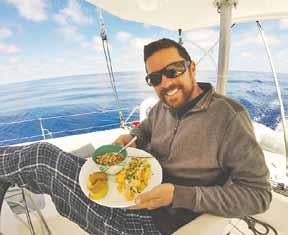
 What does Starkey do to pass the time on long passages? Puzzles are a favorite, as is making fish hooks from whale bones.
What does Starkey do to pass the time on long passages? Puzzles are a favorite, as is making fish hooks from whale bones.
in a sauna, and it made the living quarters unbearable. If I was going to bake a quiche or a loaf of bread or boil pasta, I had to kick Lewis off the boat because of the heat. If we were underway, Lewis would rather hang out in the salt spray and rain than be below.
Sorry, but I can't find any reasons not to like the 'galley up'. Some may argue that galley down is better for passages because you have a narrower area in which to brace yourself. I can see their point, but I've had no issue with our Yshaped galley, using the same bracing technique against the counter's edge. I'm sure there are many boats that do less entertaining and much less cooking than we do, so the space could go to better use — such as for a forward-facing navigation station. We do miss that. But when the nav station takes up half the salon, a boat feels more like a bachelor
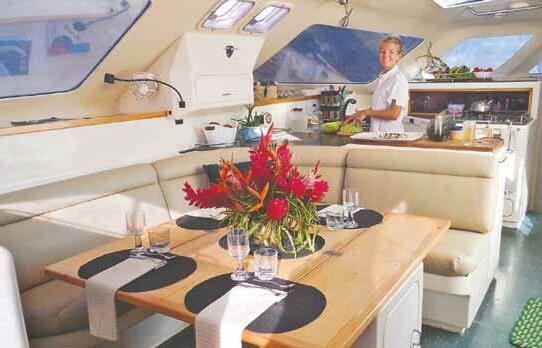

pad than a floating home.
The aft-facing navigation station. The good part of an aft-facing nav station is that the wiring is centrally located and the back of the instruments and autopilot chain are easily accessible. Having had to rewire much of the cat after the port hull was underwater, I've gained an appreciation for easy access.

But when you're in rough seas you really don't want to be looking backwards when navigating. Of course, when it's rough

you should probably be outside managing the sails anyway. In reality, at night we reef the sails way ahead of the squall or low, so I'm at the nav table with my eyes glued to the radar, AIS, and nav equipment, as the only way to 'see' in the rain and dark is with instruments.
Storage space. I now have plenty of space for all of the provisions we need for long passages. In fact, we now have designated cabinets for spares, and there is still space for more stuff. We no longer have to unload an entire v-berth just to get the one piece of spare hose or special oil-filter wrench.
The negative of having massive storage space is that it's tempting to fill it up. Our trick is to keep reminding ourselves that all we need is the same stuff we had on our 37-ft monohull, and to remember to distribute it evenly through our cat. 'Less is more' has become our mantra despite having a much bigger boat.
Twin engines. The obvious benefit is if one engine goes out — overheating, bad injector, line wrapped in prop — you still have another engine. Engine redundancy gives me peace of mind.
However, having two engines rather than one means you have twice as many engine issues and twice as much maintenance, and you need more spares.
Sailing downwind. The majority of time when you sail west across the Pacific, you sail downwind, and it's a dream on our cat. There is no slamming or rolling, and if it gets boisterous enough, maybe there is some fun surfing.
As I write this, we are 130 miles north of North Cape, New Zealand, heading south. We have just finished motoring through the high, and brisk north winds have filled in at 20 knots. We have the full jib out and are cruising at 8.5 knots

CHANGES
while my tall mug of hot tea sits on the salon table next to the laptop I'm typing on. It's as stable as if we were in a slip.
We were constantly rolling from side to side when going dead downwind with our monohull. We used our telescoping spinnaker pole to keep the headsail far enough out, but it was still unstable.

Furthermore, I absolutely hated flying the asymmetrical spinnaker on our monohull because there was such a limited range where it worked. Either there was not enough wind, in which case I would constantly have to trim because the sail would either collapse or flog in the seaway — and there is always a seaway on the open ocean. If there was enough wind, say 12 knots, that was enough to keep our 140% genoa flying wing-on-wing with the main, and way less trouble.
It's completely different on our Quixotic. Because she rocks less, we use the asymmetrical all the time. I don't see any negatives sailing our cat downwind.
Sailing upwind. We've found three negatives when sailing Quixotic upwind. Like all cruising cats, she can't point as well as our Tartan 37 did. To be honest, she tacks in about 120 degrees when on the open ocean — just like most cruising cats. Second, the previously mentioned 'bombs' can knock anything off the salon table. Lastly, unless we take the plastic windshield between our hard top and the deck down, we lose almost a knot of upwind speed.
Keeping it cool. I finally have a huge in-counter freezer, so it's goodbye to Costco canned chicken and hello, bacon! We had a surprisingly gigantic in-counter fridge/freezer on our Tartan 37, but the freezer part was no bigger than a tiny shoebox, and that part chilled the rest of the cooler. We primarily used it for making a single vertical tray of ice for those very important sundowners. Now I can
The floral display and appetizers can be left on the salon table when sailing downwind. Upwind they'd get banged off onto the sole.

ask Cap'n Lew if he would prefer a steak or leg of lamb for dinner! I also started making frozen smoothie popsicles for snacks on midnight watches.
We also have a front-loading refridge on Quixotic. It's tiny and all the cool air escapes as soon as I open the door.
Heads up! We have three heads to choose from on our cat. One is a designated shower, but all are lined with gel coat and are thus easy to wipe down. We only had one head on our Tartan, and it was trimmed in wood, so I was constantly wiping away mold and fogging up the main cabin. I dreamed of a separate stall shower with better ventilation on our next boat. My dream came true!
Having three times as many toilets, of course, means having to clean three times as many toilets. Actually that's not so bad. What is bad is having to rebuild three toilets! But as Lewis and I were elbows-deep in replumbing the cat, Lewis and I joked that we would much rather have to deal with poo than do more fiberglass work. We are so tired of being covered head to toe with fiberglass dust!
More toilets mean more thru-hulls. It's my job to exercise the fittings before and after every passage to make sure they aren't seized up, something that happens frequently. Be sure to carry a Y-valve for your head, as it never gets exercised after leaving the U.S. and before getting to New Zealand or Australia.
A man's-man workshop. Yes, Lewis finally has his own workshop. That means that my galley countertop, which had been the only work surface available on our monohull, is no longer used for repair projects.
The downside is that his workshop is in one of four cabins in the hulls, and the weight of tools and spares in one place starts to put the boat out of balance. We work very hard to distribute weight equally in the cabins and hulls, keeping the weight as low as possible.
Triple deck space! Our cat has bow seats and a lovely trampoline net up forward, as is featured in every ad for the dream sailing vacation. It's hot in the tropics, and the breeze up through the nets makes it the coolest place to lounge. We haven't tried it yet, but we understand the huge amount of deck space is perfect for yoga and folding sails.
Unfortunately, there is no shade on the foredeck, so when signaling where to drop the anchor I look like
a grandmother, wearing long sleeves, a giant, stiff-brimmed gardening hat and rash guard pants. Instead of dinghy davits, we have a dinghy crane arm that extends out of the boom. It's sleek, has plenty of purchase, and stows the dinghy with motor on the transom nicely.
With a two-to-one purchase on the main halyard and no electric winch, it does take twice as long to grind half the distance, so it feels a if it takes forever to raise the dinghy the necessary seven feet. But it's a good workout. And it's waaaay easier than it was removing the gas can and the dinghy motor, and the dinghy seat and the oars, and using the spinnaker halyard to raise the dinghy onto the foredeck of our Tartan 37. After we did that, we still had to deflate it and fold it into the dinghy bag, then strap it down to the foredeck. We had to do this before and after every passage with Eleutheria
Don't get me wrong, we were very
happy aboard our Tartan 37. We would have continued to sail her around the world had we not come across Quixotic in a salvage situation. A catamaran had always been a pipe dream for us, a 'one day' scenario where we might save up for a Farrier 42 or similar fast cat. But we didn't want to go back to work for as long as it would have taken to afford one, not when we could have been just as happy and capable, and arguably safer, on a bluewater monohull for a fraction of the cost.
Lewis and I have learned so much that's specific to catamarans since acquiring Quixotic. As all cruisers should do, we prepare, prepare and prepare. We've learned how to slow our cat down, how to set up her sea anchor or drogue, and how to put in the third reef.
Both monohulls and catamarans circumnavigate. But I have to admit that for the reasons I've outlined, I'm happy to be on our 20-year-old cat.


— alyssa 11/15/2016
Cruise Notes:
"There is not much happening in La Paz, which is why I think it's a great place to live," reports Patsy 'La Reina del Mar' Verhoeven, now back from the South Pacific and her 10th Ha-Ha with her La Pazbased Gulfstar 50 Talion. "Marinerelated businesses report it was a slow summer, although business picked up tremendously with the mid-November arrival of folks who had recently finished the Ha-Ha.
The Baja Ha-Ha Welcome Party thrown by the local marinas, businesses and Tourism Board, was
terrific, with traditional dancers, music and food. Raffle prizes ranged anywhere from a week in a marina to tequila.
"Everyone is taking advantage of the great dollar-to-peso exchange rate — more than 20 pesos to the dollar — at favorite restaurants, boatyards and with marine service folks," continues La Reina. "Some are taking advantage of the exchange rate for long-dreamed-of elective surgeries. I'm not mentioning any names, but the cruising fleet is looking younger, if you catch my drift.
"The first La Paz sailboat race of the season was held in early December, and we had some crazy weather the night before. In December it's very unusual for La Paz to get thunder, lightning and rain, to say nothing of hail, all of which we had. The temperatures have been cooling off at night as winter has come on, but still a far cry from the snow expected in the Northwest. The days still warm up to around 80 degrees, so it is a perfect time to be in La Paz, the City of Peace."
Patsy is messing with everyone, as there is plenty to do in La Paz, to say nothing of the beautiful offshore islands, which is why it's so popular.
An urgent request for type A-negative blood was broadcast to the Banderas Bay cruising fleet via VHF on Sunday, November 26, by Dick Markie, Harbormaster at Paradise Village Marina. The blood was desperately needed for Liz Barrow, wife of former Vallarta YC Commodore Andy Barrow. Eight hours before Liz had some veins in her throat 'explode' while at the couple's land-based home near the marina. Doctors had previously warned Liz that this was a possibility, but Andy says they "had been in denial".
What couldn't be denied was that Liz, who had looked healthy as could be when the Wanderer saw her a week before, was suddenly in a life-and-death situation, as there was blood all over the bathroom walls. "It looked like a scene from a horror movie," said Andy.
Fortunately, it was only a few blocks

CHANGES





to the modern San Javier Hospital that is part of the Paradise Marina complex. Upon arrival at 1 a.m., Liz's blood pressure was 65 over 30. Close to death, she needed blood transfusions immediately. Liz has A-negative blood, which is only found in one of 16 people. San Javier had two pints on hand, which she got, but she needed more.
As soon as Markie put out the call for A-negative blood, cruisers responded. By noon the San Javier Hospital had enough blood. Doctors also performed an esophagostomy on Liz so they could repair the veins. According to Andy, who was thankful beyond words to the cruisers who had donated blood, the doctors at San Javier did a fabulous job. Liz was released from the hospital a few days later, almost as good as new, with an admonition to stay away from tortilla chips.
Following the Ha-Ha and the earlyseason races in La Paz, the next event on the cruiser calendar was the Sailors' Splash Welcome to Banderas Bay for HaHa boats by the Riviera Nayarit Tourism Department, followed by the three-day



Rumbling off the jungle.
Ha-Ha style Banderas Bay Blast, including the Pirates for Pupils Spinnaker Run for Charity. While the first 'race' was lacking in wind, the second race, up to the famed Punta Mita Yacht & Surf Club
featured up to 20 knots of breeze in flat water. After that second race, new Surf & Yacht Club Commodore Donna Melville of the Gabriola Island, B.C.-based Baltic 42DP Northwest Passage showed excellent form and unbridled enthusiasm in initiating new members into the club with a whack on their bottoms with a SUP paddle. Pirates for Pupils had seven to nine knots of wind, which was pleasant and gave novices a chance to learn to fly their chutes in mellow conditions. Over $1,500 was raised from the small group of sailors and others.
First overall in the Blast, not that it mattered, was Fred Roswold and Judy Jensen's Serendipity 43 Wings, an old San Francisco Bay warhorse that the couple have sailed around the world for 18 years. Latitude would also like to give a special shout-out to Greig and Leslie Olson of the Santa Cruz-based Brown Searunner 40 trimaran Doggone, and Gerald and Margaret McNobe of the Long Beach-based Sceptre 41 Aeolian. Both couples did the SoCal Ta-Ta, the Baja Ha-Ha, and the Banderas Bay Blast.
LATITUDE / RICHARDThe next big event on the cruiser calendar is the Zihua SailFest , the phenomenally successful charity event in Zihuatanejo from February 6 to 12. If anyone is sailing south past Mazanillo, you don't want to miss it.
Debra and Phil Perfitt of the Victoria, B.C.-based Folkes 42 Coastal Drifter wrote in to ask when registration opens for the 2017 Pacific Puddle Jump, as this is their year to 'jump'. A lot of others have been wondering, too. You can register right now — for free — at www. pacificpuddlejump.com

Most first-time Mexico cruisers don't realize how different Mexico can be from the States. We were reminded of how great the difference can be during a dinner out with Chuck Skewes and Rodrigo 'Pollo' Cuellar Dipp of the Puerto Vallartabased Varianta 44 Ullman Sails. Readers may remember that the duo repaired sails for 37 boats during the Ha-Ha. It was a long dinner because we spent most of the time rolling around on the floor
of a Bucerias restaurant laughing at all the funny memories of the Ha-Ha. For example, speaking as the Grand Poobah, we had no idea what a steamy singles scene there was.
The thing we found to be the most amusing was Pollo telling us that as their boat was one of the first to arrive in Turtle Bay, they were the first crew to go up to Maria's pink-themed restaurant on the bluff. After ordering from the menu, the waitress told them it would be a while because she needed to go to the store to get the ingredients.
"You're the first customers we've had in six weeks," she explained.
You're not going to find many restaurants in the U.S. that are going to remain
open for six weeks if they don't have any customers. Before the night was over, there were about 40 Ha-Ha people at Maria's, eating, drinking, flirting and dancing with the waitresses.
"As Latitude probably knows, about 10 years ago a huge company took over the entire Marina Mazatlan complex," report Don and Lenna Hossack of the




What a trifecta for making friends with great people!
CHANGES

Mazatlan-based Wazoo. "As they developed condos, hotels, and housing developments, they paid very little attention to the upkeep of the marina. Fortunately, the man who developed the new golf course took over as manager of the marina last January and has been making progress.


"For example, the ramps to the docks had been falling apart," say the Hossacks. "They are being replaced one by one with stainless and pressure-treated wood. Wi-Ffi service has always been a disaster, so it was replaced with a new system with a main tower at the office and smaller towers at every other dock. The trouble is that the provider sucks, so the manager is in the process of replacing that company. The previous security system at the gates was worthless, and it's been changed to a more secure bracelet system. Currently tenants' bracelets only work on their docks, but that is being fixed.
"One of the biggest drawbacks to Marina Mazatlan was that there weren't really any amenities," the couple continue. "But now tenants are welcome at the beautiful new Beach Club, which has a
huge infinity pool, cabanas, and food and drink. In addition, tenants get 50% off on golf. Because the marina area north of the main part of Mazatlan is the fastest growing part of town, there are some
drawbacks. One of them is the existence of one of the hottest new nightclubs — complete with velvet ropes, bouncers and hours from 10 p.m. to 4 a.m. — by the marina. They are only open Thursday to Saturday, but it's still a problem. Nonetheless, things have been getting better at Marina Mazatlan."
Shelly Rothery Ward and Mike Rickman of the formerly La Paz-based Peterson 44 Avatar report that they are now the net controllers for the Polynesian Magellan SSB net out of Tahiti. "We listen in on 8.1730 every morning at 1800 Zulu and every evening at 0400 Zulu," writes the former commodore of the Club Cruceros de La Paz, "and we're looking forward to Puddle Jumpers starting to check in soon."
Shelly has three tips for Puddle Jumpers: "1) Get a good wind generator to keep the batteries charged through the night. The only place the wind dies is the anchorage by Marina Taina, which is in the lee of the mountains just around from Papeete. 2) Bring plenty of fans. We have an awning, but sometimes we have to 'reef' it, and we'd swelter without
the fans. That's particularly true now that it's summer and it's warmer with more rain. 3) If people have the time, they should go to the trouble to get a Long Stay Visa, because three months in French Polynesia is just not enough. After dreaming of sailing here for 28 years, I wasn't going to stay just 90 days. We're loving it."
While Shelly and Mike are very happy with their Peterson 44, which is paid off and which they completely refit before Puddle Jumping, they confess that it seems as if a catamaran would be the best kind of boat for French Polynesia. "You can't believe how many of them there are down here, and given their shallow draft, they can anchor in all kinds of places that we can't."
The best news of all, however, is that upon arrival in the Marquesas Mike asked for Shelly's hand in marriage, and she happily accepted. They will tie the knot in Moorea on December 22. Congratulations to them.
Greg Slygnstad of the Seattle-based Bieker 53 catamaran Fujin reports that he and his crew of Andrew McCorquo-
dale, Gina Borza, and Fritz Johnston did the 991-mile delivery from Bermuda to St. Martin in just four days. Fast!
"It was mostly light winds with lots of motoring," says Greg. He's now hauling his cat to get her prepped for the February 20 start of the Caribbean 600 in Antigua.

After several years of cruising in the Med, Jim and Deb Gregory were going to sail their Pt. Richmond-based Schumacher 50 Morpheus back to the Caribbean this winter. But they lost two months of what was to be their last summer in the Med because of the passing of Jim's mother, so they decided they'll spend another summer in the Med. But that hasn't kept the couple from enjoying the Caribbean this winter.
First, Jim helped deliver a friend's Swan 66, Bounty, from the Northeast to the British Virgins. And in early December, Jim and Deb got the enviable job
of boat-sitting the gorgeous blue-hulled boat in Virgin Gorda Sound.
"After Christmas we'll visit our boat in Barcelona," says Jim, "then I'll do the Caribbean 600 and BVI's Rolex Swan Regatta aboard Bounty. Next we'll fly back to Morpheus for a summer of cruising around the Balearics, Sardinia and Corsica, followed by a winter Atlantic crossing to the Caribbean."
'We'll swim right over and help.' The crew of the vessel Somnium was


CHANGES
awarded the Spirit of the ARC+ award in St. Lucia last month for "contributing to the rally in a special way". What was special was the way they assisted fellow ARC+ boat Scallywag in the middle of the Atlantic Ocean. The boats were near each other and got to chatting over the VHF about the rally and life in general. Near the end of the conversation the crew of Scallywag mentioned their gennaker halyard had parted five days before, and because there were just two of them, they'd been unable to replace it.
Somnium crew Sven and Mart volunteered to do something about it. They swam over — it was calm — to the partially disabled boat, and one of them went aloft and ran a new gennaker halyard. Nice.
Those of you who, like the Wanderer, were lucky enough to be able to take Latin back when it was offered in California junior high schools, will remember that 'somnium' means dream. It's a comment on the times that Somnium is now better known as being a brand name for lorazepam, a medication for people who suffer from debilitating forms of anxiety.
Reading this month's Changes, we


were a little surprised to read that the Bradford family on Pelagic visited the Tobago part of Trinidad & Tobago — and were themselves surprised to find there weren't more cruisers there. The reason Tobago is not more popular with cruisers is that Bloody Bay, Tobago — what an apt name — was the scene of several senselessly brutal attacks on elderly cruisers. As such, many cruisers consider Tobago to be off-limits.
The Wanderer is good friends with Tony and Charlotte, a couple of adventurous surfers from Montauk, New York, who have a winter home in Tobago. Charlotte, a very attractive blonde woman, refuses to even visit their house because she no longer feels safe anywhere on the island.
A recent report from the Caribbean Safety Net offers another reason that many cruisers avoid Tobago: "At approximately 9:45 p.m., four adult family members were returning from the weekly Sunday school dancing event and were about to launch their beached dinghy





when they were accosted by two young men with machetes. The men demanded cash and grabbed one of the bags that had been put into the dinghy. The captain grabbed a paddle and the group started yelling loudly, at which point the men fled into the woods."

Offseason is prime time for thefts and violence in the Caribbean. Cruisers can keep track of criminal trends by following the Caribbean Safety Net. They'll learn, for example, that offseason theft of gear from stored cruising boats is rampant in Grenada. When it comes to safety and theft, cruisers are much safer in Mexico than in the Eastern Caribbean, and it seems to us, in the Leewards as opposed to the southern Windwards.
We're not suggesting there is no theft in Mexico. In fact, Nancy Morrison of the Santa Cruz-based Catalina 42 Aldabra reports that she had her dinghy and outboard stolen while anchored at Matanchen Bay, which is just a couple of miles south of San Blas. "It was the only night I didn't lock my dinghy to the boat," she told Latitude.
Nancy was just one of a couple of

female owner/skippers in November's Baja Ha-Ha and in December's Banderas Bay Blast. She told the Poobah that she loved both events.
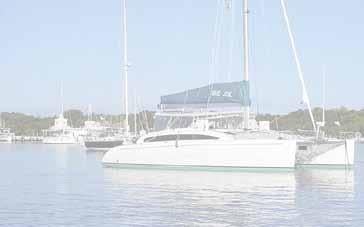
We have frequently cautioned cruisers that it's very expensive to replace a dinghy and outboard in Mexico. Nancy ended up having to pay about $7,000 for the combo at Zaragoza in Vallarta. She believes that her loss will be covered by insurance, and we hope she's right.
If you want to get south from Virginia on the East Coast, an alternative to the potentially dangerous offshore route is the Intracoastal Waterway. But for folks such as the Gifford family of the Eagle Harbor, Washington-based Stevens 47 Totem, the ICW has its own set of problems — bridge heights of about 65 feet. That's just inches above the height of their mast — after all the masthead stuff has been removed.
The 65-ft bridge clearance is an approximation, because in some parts of the ICW the water level is affected more by the wind on the water than the tides. In view of this, the Giffords have loaded their boat with ballast and are making
plans to heel the boat over, if necessary. While it's stressful, Jamie, Behan and their three kids have been out cruising the world for eight years, so we're confident they'll pull it off.
In the second feature of this month's Changes, we recommended that readers jump to this part of Cruise Notes to get a bit of background on Roy Starkey of Sea Loone. Well, here it is:
"My story starts in 1971, when at age 25, but with no money, no boatbuilding skills, and no sailing knowledge, I built a 33-ft ferrocement sailboat in Liverpool. I launched Sea Loone in 1976, and set sail for the Caribbean. I ran out of money, couldn't find work, got dismasted, and just before getting home was battered by the Fastnet Storm of 1979 that claimed the lives of 18 sailors.
"Despite that unsuccessful start, in the last 39 years I've completed three convoluted circumnavigations with the same humble boat. When I started out my boat had paraffin lights and I navigated using a vernier sextant and


Nories tables. Now I've got GPS and AIS, the latter being a dream for the singlehanded sailor. Sea Loone's first engine was a Lister diesel that I'd taken from a cement mixer. That was first replaced by a cast-iron Volvo diesel with a gearbox and alternator and more recently with a three-cylinder Yanmar diesel. Sea Loone's solar panels provide reliable electricity, but I still don't have refrigeration. I do, however, have a pressure cooker and lots of Mason jars.
"Having to find ways to make money has added spice to my adventure. I did pile driving in the United States, papermaking in Australia, and fabricated mining machinery in South Africa. I've also bought stuff — tagua nuts, rum, Makonde carvings, tapa cloth and Brazilian bikinis — in one place and sold them for a profit in another. I've also made and sold jewelry. All to keep the crew fed and the boat sailing.
"I've never had Sea Loone in a marina. She's almost always been on the move, and I've never left her for more than a few weeks."
It all goes to prove that if there is a cruising will, there is a cruising way.
Pleasereadbefore submittingad Classy LASSIFIEDS C
Here’s What To Do:
Write your ad. Indicate category. Remember price and contact info. We make final placement determination.
Count the words. Anything with a space before and after counts as one word. We will spell-check, abbreviate, edit, as necessary. Mail your ad with check or money order, deliver to our office; OR, for the best – and most exposure – of your classified ad…
Submit your ad safely online with Visa, MasterCard or AmEx at: www.latitude38.com Ad will be posted online within 3 business days, appear in the next issue of the magazine, and remain online until the following issue is released.
PERSONAL ADS BUSINESS ADS
$70 for 40 Words Max
boat per broker per
• Personal Advertising Only • No business or promo ads except Non-Profit, Job Op, Business Op
‘Trying to Locate’ Ads are for those searching for lost boats/people – not shopping – and cost $10 for 20 words max FREE Online Ads are for a private party selling a boat for less than $1,000 – or gear totalling under $1,000. (One per person; must list prices in ad.) All ads will be set to fit Latitude 38 standard • Re-Run Ads: Same price, same deadline
DEADLINE
it is ALWAYS the 15th at 5pm for ad to appear in the next issue. Due to our short lead time, deadlines are very strict and include weekends & holidays.
Sorry, but…
• No ads accepted by phone
• No ads without payments
• No billing arrangements
• No verification of receipt
• We reserve the right to refuse poor quality photos or illegible ads.
Latitude 38 15 Locust Ave, Mill Valley, CA 94941 Questions? (415) 383-8200, ext 104 • class@latitude38.com
WHAT’S IN A DEADLINE?
Our Classy Classifieds Deadline is the 15th of the month, and as always, it’s still pretty much a brick wall if you want to get your ad into the magazine. But it’s not so important anymore when it comes to getting exposure for your ad. With our online system, your ad gets posted to our website within a day or so of submission. Then it appears in the next issue of the magazine. So you’re much better off if you submit or renew your ad early in the month. That way your ad begins to work for you immediately. There’s no reason to wait for the last minute.
DINGHIES, LIFERAFTS AND ROWBOATS
24 FEET & UNDER
14-FT WHITEHALL, 2011. Laguna Niguel. $10,500/obo. Whitehall rowing/ sailing dinghy. Hand-built mahogany/ cedar. Rows and sails great! New trailer, full boat cover and rigging bag. You have to see this one to truly appreciate it! Email k.cassady@yahoo.com.
19-FT OPEN 5.7 RACE BOAT, 2007. Redwood City. $15,999. Challenging, versatile OD racer. 20-boat fleet on Bay. Competitive PHRF rating; Opens placed 1st and 2nd in the 2014 Westpoint Regatta. Three sets of sails. New rigging. Galvanized trailer. See more information at www.theckathies.com/open570.

23-FT J/70, 2015. Alameda. $48,500. Perfect J/70. Triad trailer, new racing sails, cruising set, Honda 4-stroke, Tacktick wireless, Velocitek, covers, sail 22 bags, carbon, too much to list! Hull 414. No bottom paint! Contact (408) 718-7251 or brant.adornato@cepheid.com.
25 TO 28 FEET
26-FT COLGATE, 2001. Santa Cruz. $26,000. All new sails, new engine, updates all around, clean and dry boat, needs nothing. Fast, fun, responsive, huge cockpit for all your friends but easily singlehanded. More at www.myitus.com. Contact jvirkki@gmail.com.
27-FT PEARSON RENEGADE, 1968. Marina Bay Yacht Harbor. $8,400/obo. Great starter boat. Very solid classic. Coastal cruiser, weekends on the Bay. Rebuilt 2014. Strong running Atomic 4. New sails, standing and running rigging. Custom cushions. Monitor WV. New VHF GPS, Garmin wind inst. Rigged for racing local and offshore. More info and pics on request. Contact (916) 601-6542 or Techdiverx@yahoo.com.
24-FT J/24, 1991. Brickyard Cove Marina. $14,999. Rail-to-rail, past fleet champion, 3.5 hp Nissan outboard, 1 set used sails, carbon fiber spinnaker pole, many extras, trailer included. (415) 987-5715 or thom415@windward-consulting.com.
25-FT MERIT, 1984. Alameda. $6,000. Honda 2hp, 2 sets of sails. Contact Lee. (510) 219-1092.




25-FT CATALINA, 2005. Benicia. $17,500. Catalina 250 Water Ballast. Tiller, 9hp engine, excellent interior, outside needs a bath, trailer in great shape, pics upon request, Autohelm, 120vac inverter, AM/FM/CD, VHF. For more info email gjdebois@comcast.net.
25-FT INTERNATIONAL FOLKBOAT. 1975. Morro Bay. $6,000. Formerly wellknown on SF Bay. 2 mains, working and storm jib, genoa, spinnaker and awning. New headstay and backstay. New halyards, electric and manual bilge pumps, battery charger and spreader lights. New self-contained head. New anchor and line. Nissan 5hp outboard recently overhauled, needs cosmetic attention. Health forces sale. (805) 772-3701.
27-FT CAL 2-27, 1979. Ventura. $9,850/ obo. Very clean, solid sailboat inside and out. Diesel (low hours), 3 sails, and tiller. Spacious interior. Priced to sell. Call Rob. (805) 628-0455.

28-FT ISLANDER BAHAMA, 1984. Obexer’s Marina, Homewood, CA. $16,000/firm. Cruiser/racer. 370 of 423. Robert Perry’s favorite design. Fresh water only, Tahoe boat. Yanmar 2GM. $30K in upgrades and enhancements since ‘07. Two mains, genoa, spinnaker. Autohelm. New salon cushions and upholstery. Safety netting. Many extras. Two recent surveys available for serious buyers. Winterized and shrink-wrapped at Obexer’s. Email red1947@gmail.com.
25-FT HOBIE ‘MAGIC’ SPORTBOAT. 1993. Dana Point, CA. $7,950. Carbon spars. Excellent race boat. On trailer in Dana Point, CA. Running rigging needs sorting, minor project. (949) 547-1000 islandinspired@earthlink.net.
29 TO 31 FEET
31-FT ETCHELLS, 1975. Stockton. $12,000. Etchells (red, white & blue) likenew sails. Hull #134. Perfect for class racing or beer can racing. Trailer. Tons of photos. At Stockton Sailing Club. Etchells Fleet #36. Contact (209) 988-2012 or wajwriter@aol.com.
30-FT YANKEE, 1972. Moss Landing, CA. $13,500/obo. Wheel steering, electric windlass, autopilot, roller furling jib, Garmin GPS, 20hp Universal diesel< 500 hrs, VHF radio, new batteries. All lines led to cockpit-easy solo sailing. Contact Bruce. (831) 768-8482 or barbandbruce@att.net.
30-FT CATALINA, 1984. Benicia. $8,500. Needs some TLC. Low/no hr Universal 25. Includes all equipment. (925) 831-9582.
30-FT YANKEE, 1971. Brisbane Marina. $24,000. Best Yankee 30 on the planet. Looks great, sails great, race winner. See website for details and contact info: http:// doubleplay.website.

35-FT HUNTER 356, 2002. Tradewinds Sailing Club, Marina Bay, Richmond. $59,000. 2002 Cruising World’s Boat of the Year in class. Too many extras to list. Surveyed on 4/6/16, valued at 65K. Contact Ken for more info. (325) 347-2349 or cordero@wcc.net.


30-FT NONSUCH, 1981. Berkeley. $47,500. Beautiful Nonsuch 30C, clean, well cared-for and well loved. Fun to sail, easy to singlehand, comfortable and dry with hardtop dodger. Newer Beta Marine diesel w/Gori 3-blade folding/ reversible prop, cockpit cushions, wind/ depth/speed/radar/GPS chartplotter, electric windlass, Rocna anchor w/allchain rode, dinghy davits, new batteries w/battery monitor and much more. All LED, new refrigeration, and much more. Buying larger boat and priced for quick sale. Contact through website. www.Nonsuch30SFBay.com.
30-FT FREEDOM, 1987. La Cruz, MX. $35,000. Gary Mull design. Perfect shorthanded boat. Yanmar, new bottom, carbon fiber mast, main, self-tending jib with camber boom, asymmetrical spinnaker, swim step, liferaft, EPIRB, radar, GPS, AP, LPG, galley fridge, 50 gal water. Turnkey. Contact seaotter77@aol.com.
31-FT ETCHELLS USA 1315. Richmond YC. $35,000/obo. Built by Pacesetter in Australia for 2015 RYC Worlds. Dual-axle trailer. Three years racing on the Bay, 3 years in Stockton, idle the last 5 years. (510) 236-8098 or VickieSails@aol.com.
29-FT CAL 29, 1974. Paradise Cay, Tiburon $4,500. With Yanmar diesel, new heat exchanger and water pump, roller furling, full suit of sails, stove, new battery, anchor, fenders, etc. Great sailer. Contact ron_amy@sbcglobal.net or (415) 310-5152 or (415) 717-0178.


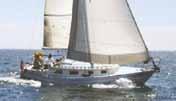

32 TO 35 FEET
34-FT CUSTOM. Double-Ender Cutter, 1999. Chula Vista, CA. $37,000. 42’ LOA. Solid cruiser, launched 1999, few trips to Catalina, 4.108, 555 windlass, 3-reef main, keel tanks, sleeps 5, teak floor, oversize rigging, Norseman eyes, needs some work. Contact (949) 492-2691 or pandashines@att.net.



35-FT SANTANA, 1980. Benicia Marina. $22,000. At Ease has been a successful racer in the SF Bay. New North 3DL main and many others. For more information, see website: www.ateaseforsale. blogspot.com. (707) 746-5076 or (925) 408-0420 or atease@earthlink.net.
33-FT CAL, 1972. Emery Cove Yacht Harbor. $10,000/obo. Modified stern. Skeg rudder. Tiller. Volvo diesel under 400 hrs. Harken Mk II. Newer rigging. Surveyed in December. Priced to sell. Buy it with a slip for extra discount. (626) 410-5918 or ngolifeart@gmail.com.
33-FT WESTERLY STORM, 1987. Glen Cove. $37,495. Built and designed for heavy weather. Lloyd’s Register of construction iron fin keel, spade rudder. Very well maintained. Everything works. Beautiful teak interior with forward and aft cabins. Volvo model 2002 2-cylinder is very clean, runs great. Very rare vessel in US. Gimbaled propane stove, nice complement of sails. Very crisp new GPS. chartplotter, depthsounder. She will survey well. Contact me for more information. Thanks. (707) 372-8660 or bferevr@gmail.com.
36 TO 39 FEET

29-FT J-29, 1984. (FROB) Benicia, CA. $15,500/obo. Race winner, new bottom paint 2016, 1 set white sails and spinnaker, Nissan 6hp 4-stroke outboard, Nexus speed, depth, wind instruments, Garmin GPS/plotter. Additional race sail package; $12,260/obo. New Hogan Technora main, new Hogan Technora 135% jib, 2015 Quantum Technora 100% jib, 2014 Quantum Technora 155% Jib, new Hogan running spinnaker, 2015 Quantum reaching spinnaker, heavy-weather spinnaker, forward hatch spinnaker bag, spinnaker pole bag. Call Grant. (510) 245-3231 or harlessgrant@sbcglobal.net.

34-FT MARINER 31, 1969. Oxnard, CA. $14,500/obo. Recent haulout, no blisters, well maintained. Spruce masts and booms sound. Needs new working sails. Low hours Perkins. Needs rewiring of running lights. Veteran of South Pacific. Contact baronaustinkelly@gmail.com or (805) 259-9444.
36-FT HUNTER VISION, 1993. San Diego. $61,000. Excellent condition. Includes GPS, generator, and dinghy. Updates are new bottom paint, prop, pumps, halyard, main sheet, fridge, all service current. Roomy interior. Contact (602) 292-0461 or (858) 775-4821 or kimmariesmith@gmail.com.
36-FT HUNTER, 1981. Moss Landing. $39,000. Cherubini design. New bottom paint, custom v-berth mattress, great slip at Moss Landing, Monterey Bay. Kevlar main. Great sailing boat... great looking. Email me for lots of photos. (209) 9882012 or wajwriter@aol.com.
36-FT PJ (STANDFAST), 1974. $43,750. Tiller-steered, IOR rated, ocean-ready. Keel-up refit. New: Yanmar, shaft exhaust, prop, batts, plumbing, tanks, sails, rod rigging, hydraulics, furler, hull faired, hull/ mast rewired. Contact (510) 812-3715 or rfhumphrey@sbcglobal.net.



40 TO 50 FEET
SERENDIPITY 43, 1982. Delta. $84,000. Semi-custom, Kevlar epoxy f/g, spacious, warm teak interior w/aft cabin. Recent refit, being cruised and improved. Safe, comfortable, tough yet fast. Yanmar. Improved hard dodger. See http://youtu.be/P7NJ5KeMn4 or hookedsailing@gmail.com.
47-FT CATALINA. San Diego. $198,500. Customized bluewater-ready. Ha-Ha veteran. Extra fuel capacity, 110 or 240v, watermaker, chartplotter, radar, AIS, coldplate refridge/freezer. Custom cabinets and workshop, dive compressor, in-boom furler, staysail, autopilot, windvane, new hard dodger, heat-air, Autoprop. Much more. Pacific Puddle Jump-ready. Check out http://adream2sail.publishpath.com. Call (916) 607-9026.
43-FT RON HOLLAND, 1986. Marina Riviera Nayarit, MX. $95,000. Aft cockpit, 2 strms, 2 heads, spacious, well equipped and well maintained for cruising. Singlehanded all over Pacific Mexico in comfort and now lying in a fantastic location. Not a charter boat! See more info at www. sanctuarycharters.com/sabbatical.php. Contact office@sanctuarycharters.com.
48-FT MAYFLOWER KETCH, 1985. Puerto Vallarta, MX. $109,000. Sleek and graceful Mayflower 48-ft ketch. Properly equipped for a crew of two, bluewater cruiser carries and flies up to five sails. Designed by George Stadel II, the Oriana has proven performance, good construction, and attention to detail. Ample captain’s cabin, attractive, roomy salon, and fully-equipped galley, the boat is a comfortable liveaboard in any of the world’s ports. Powered by the dependable Perkins 92M, under power the craft cruises comfortably at 7.5 knots. Equipment includes roller furling on all masts, self-tailing winches, 300-ft. chain anchor rode, three sturdy anchors, watermaker, and more. See www.theoriana.com. (480) 447-7316 or info@theoriana.com.
41-FT SYDNEY, 1996. Oceanside Harbor. $119,000. Twister (2015 SDYC Yachting Cup in-class winner) is a beautiful and well maintained version of this highly soughtafter racer/cruiser. With her powerful carbon rig, Nelson Marek deep keel, and efficient hull shape, the Sydney 41 is one of the few boats as comfortable on the race course as she is cruising the Islands. Ian Murray design, Bashford-built, the Sydney 41 was designed around the principle of performance. The basis of the 41’s hull shape comes from the latest of grand prix thinking and is readily evident when under sail. (See Yachtworld ad). Contact (760) 439-0011 or (760) 579-2899 or jwert007@gmail.com.
44-FT CATALINA MORGAN, 2007. Anacortes, WA. $249,000/obo. A real deck salon, light and airy. Tons of storage for liveaboard or cruising. Both forward and aft cabins have queen berths with head and showers. Just-serviced 75hp Yanmar with 900 hrs. Newer batteries and two 85-watt solar panels. Cruising spinnaker, power winches, hydronic heat. Raymarine L120 radar, chartplotter autopilot, bow thruster. New dodger and glass. Leisure Furl boom. May consider trade. (408) 666-3261 or jerryfsaia@aol.com.



47-FT CUSTOM. Performance Cruiser, 1983. Pittsburg, CA. $187,500. Gary Mull design. Fast, strong, aluminum with beautiful Awlgrip finish. Loaded to cruise. Just returned from 6 months in Mexico. Very special boat. More at www. sailboatlistings.com/view/51161. Contact (925) 948-5613 or ed.witts@gmail.com.
43-FT LANCER SLOOP, 1982. Sausalito. $66,000/obo. Desirable beamy liveaboard boat with many recent upgrades is now available in transferable Sausalito slip. New windlass, new rigging, new roller furler. New electronics, recent bottom. Contact (415) 713-9515 or (415) 419-1437 or bob.irby@marinncounty.net.
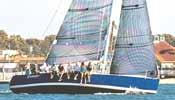



41-FT
tom@americanlf.com.


41-FT CUSTOM KETCH, 2013. Long Beach. $54,000. New (almost) 41-ft full-keel fiberglass ketch. Built on a bare CT-41 hull. Custom deck with wheelhouse and inside steering. Large circular cockpit with custom varnished mahogany interior. Settee w/panoramic view, separate head and shower, full galley, 1 queen and 2 single berths. All systems are new including engine (200hrs), tanks 150+ gallons fuel and water. All electrical, plumbing, and electronics are new. Rigging, mainsail new, spinnaker, jib, genoa, storm jib all excellent. Every item including shaft and rudder is new or reconditioned. 73-yr-old owner singlehanded California to Acapulco for shakedown. (760) 482-8172 or bobobrien09@yahoo.com.
41-FT NEWPORT, 1984. Delta. $39,500. Excellent condition. Rod rigging, diesel, radar, GPS. Autopilot, dinghy and o/b. Prepared for cruising. Health changes plans. Freshwater berth. (916) 217-6908 or chardonnaymoon@att.net.
44-FT KELLY PETERSON, 1980. Marina Palmira, La Paz, Baja California Sur. $95,000. Great cruising/liveaboard, ready for you to explore the Sea of Cortez and beyond. High-gloss varnish interior, nonskid deck, sails like a dream. See more information at www.ahoyswab.com. Email ahoylola@yahoo.com.
50-FT GULFSTAR KETCH, 1975. Honokohau Harbor, Kailua-Kona, HI. $150,000. Three-cabin version with large aft owner’s cabin. Extensive refit over the last 12 years. Beautiful interior with new cabin sole. 85hp Perkins. Full set of Raymarine electronics. A great, comfortable, wellperforming bluewater or coastal cruiser. More at http://gulfstar50hawaii.com. Contact (808) 883-9136 or (559) 907-1210 or gnkjep@yahoo.com.

40-FT CALIBER LRC SE, 2008. La Paz. $284,950. Ready to cruise the Sea of Cortez, Mexican mainland and beyond. Vivacia has all of the LRC SE safety and comfort features plus 200 gal fuel and 175 gal water, two chartplotters, radar and AIS, Icom 504 VHF and 802 SSB w/Pactor III, hydraulic autopilot and Hydrovane self steering, 14 gph Spectra watermaker, 600 AH Lifeline AGM’s 12/14, diesel gen and 340 watts of solar, Bauer dive compressor, Achilles 9’6” inflatable w/Tohatsu 8hp 4-stroke, full dodger and bimini 12/15, furling main, 125 genoa, convertible furling staysail, asymmetrical spinnaker, Rocna 33 anchor w/electric windlass and 300 ft. G43 high-test. Email svvivacia@yahoo.com.
41-FT FORMOSA SEA TIGER, 1973. South San Francisco. $62,500/obo. Hauled out 2016. All new thru-hulls/ valves, New top/bottom paint. Radar, GPS, depthsounder, etc. Mahogany interior. 7 ft. headroom. Fiberglass hull. Diesel engine. Ready to sail! (650) 281-6314.
51 FEET & OVER
MULTIHULLS





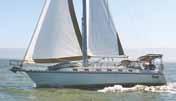
45-FT MORGAN, 1967. Ventura Isle Marina. $49,000. Pretty classic, one of 12 built. Super-professional maintenance, sail-ready now. Fresh survey $59K. Low hours Yanmar 4JHE. Fully loaded vessel. New solar panels. Great value. Email prop6856@gmail.com.
56-FT JOHN ALDEN. Pilothouse Cutter, 1964. Vancouver, BC. $159,000 CDN. Built as a charter boat by Camper & Nicholsons, GRP. Bluewater-proven, sleeps 8. Bow thruster, dive compressor, watermaker, lots more. (604) 358-8968 or (604) 354-5090 or westbynorth@gmail.com.
CLASSIC BOATS
30-FT GEMINI 3000, 1989. Alameda. $39,000. Recent Mexico vet, great liveaboard, 14’ beam, draws 18” boards up, 3 cabins, queen bed, high-thrust outboard, autopilot, chartplotter, dinghy davits, spinnaker, SSB, smart battery monitor, solar, needs cosmetics. (510) 846-6417 or ssnick@gmail.com.

50-FT PIVER TRIDENT, 1976. Half Moon Bay. $70,000. Starship is a proven bluewater cruiser, sturdy and spacious with a rich and joyous history. Four separate strms with 5 full-sized beds, enclosed pilothouse, mainsail and 3 headsails. 50hp marinized Volkswagen Rabbit diesel, refrigeration, solar, wind generator, navigation equipment, 4-burner propane stove, fresh- and salt-water pump systems, manual toilet and clean holding tank. Three anchors and much, much more. Contact for more info http://tinyurl.com/ z2qbsly. Email darcishea@gmail.com.
36-FT CAT2FOLD, 2005. $149,000/ obo. Cat2Fold is looking for a new owner! 36x24, biplane-rigged, sailing cat folds to 8.5’, trailerable anywhere! Very solid, easy to sail, and super-cool! See more at http:cat2fold.wordpress. com/2016/12/14/cat2fold-is-looking-fora-new-owner. Contact (208) 228-0077 or cat2fold@gmail.com.



40-FT PROSAIL RACING CATAMARAN. 1987. Tiburon. $120,000. Shadow is a fast, fun Formula 40 racing catamaran. You’ve seen her set many records and win many races, including Rolex Big Boat Series (2012) and Delta Ditch Run. She is professionally maintained to the highest standard. Built from all carbon in the USA, she would also be perfect to set up an adventure-charter program, or just have the most exciting daysailer on the water. Contact pstoneberg@gmail.com or (415) 640-3363.

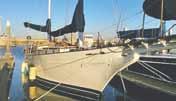
40-FT OLSON, 1983.
Cove Marina. $85,000. Excellent setup for cruise or racing. Well maintained fast boat, 48 rating with newer 125 genoa and spinnaker. Teak interior in good shape. Full sail set for cruise or race. New Max-Prop and bottom paint. New asymmetrical as well as full set of downwind kites. Two poles. Main in good shape. Many custom upgrades: rigging, rudder, fuel tank, water tanks, holding tank. New teak and holly floor, etc. Lots of extras for maintaining boat. Includes over 10k equity in 40-ft slip at Emery Cove Harbor. Loan balance 38k. Contact Matthew for showing at thundermotorcycles@yahoo.com or (408) 858-2405. Liveaboard harbor.
47-FT GAFF CUTTER, 1933. Los Angeles. $140,000. Captain O. M. Wattsdesigned, 21 tons, teak on oak, massively built, in fine condition and with A1 recent out-of-water survey. Owned 25 years and very well sorted-out. Carries her years better than the owner, who is building a smaller vessel. Contact (818) 853-7101 or cudaprod@earthlink.net.

45-FT CAPRICORN CAT, 1995. Brisbane Marina, in SF Bay. $299,000. One-off Kurt Hughes design. She is a fast, agile, lightweight, customized cruising catamaran. High bridgedeck and daggerboards = great windward work, beautiful galley-up, big fridge, big freezer, with new compressors. B&G, Ham/SSB w/upgraded Pactor modem, 2x44hp turbo Volvos, with Flexofolds. Faired bottom, genset, 24gph watermaker, 4 solar panels, 10’6” dinghy w/15hp Yamaha. We have enthusiastically sailed and upgraded so she runs like a top. 3x So. Pac, 6x+ Ha-Ha vet. This boat is ready to go right now. Food, fuel, clothes are all you need. Can you hear Mexico, the whole world calling? Ha-Ha 2017 anyone? (831) 332-8448 or wfhendryx@yahoo.com.


38-FT SEAWIND 1160 DELUXE. 2007. Brickyard Cove, Richmond. $400,000+Business Option. Deluxe owner’s version. Top condition USCGinspected vessel. Ready for world cruising, a lucrative charter business, or do you hear Mexico calling for you and your consortium members? Endless possibilities! For a complete list of added options, call Dan. Contact (510) 232-5820 or captaindan@sailingcaprice.com.

42-FT GIBSON, 1987. Sausalito. $95,000. Liveaboard houseboat in downtown Sausalito. Completely renovated and updated. Runs great. See more at http:// sfbay.craigslist.org/nby/boa/5901664266. html. Call (415) 636-1786.
52-FT DUTCH TJALK, CANAL BARGE. 1925. Port de l’Arsenal, Paris, France. $120,000. Classic Dutch canal barge for sale in France. Cruise the canals and rivers of Europe aboard this beautiful 52-ft converted Dutch tjalk. Present owner has cruised throughout France for the last fifteen years. Currently berthed at the Bastille in Paris. Powered by a sixcylinder Peugeot diesel, with compound rudder, hydraulic power steering and bow thruster, this darling handles like a sports car. The interior is old-world craftsmanship with mahogany paneling, extensive carving, and even stained-glass windows. Photos, details at website: www.dutchbargephaedra.homestead. com. Contact cris@crishammond.com or (0336) 47-72-70-06.

SAILING THE SEA OF CORTEZ. In La Paz. Sailing with a MacGregor 26X or Herreshoff 28. More at www.sailing-baja. com. Contact (011-52) 612-123-5440 or info@hacienda-sol.com.
WANTED
AUTOHELM PARTS OR ALL. Honolulu. Need parts and/or all, for the older mechanical one! Need rudder (with hardware and trim tab). Tsunami took it away! (808) 230-6466 or lap36cal@yahoo.com.
GEAR
QUANTUM MAIN & FURLING JIB. Sausalito. $1,500. Quantum tri-radial main and furling jib. Main: luff 51.15,’ foot 17.65,’ with 3 rows reef points. Jib: luff 50.20,’ leech 48.40,’ foot 16.20,’ LP 15.60’ with sun cover. (916) 217-0222 or nikasdad47@gmail.com.
MISCELLANEOUS
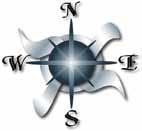
DOCK SPACE FOR LEASE. Brickyard Cove, Point Richmond. $375/month. Easy access SF Bay. Private home dock space, separate gate access, street parking. Max 42-ft boat, keel draft max 8 feet at low tide. No liveaboard. (510) 672-4904 or janet.ruth.ferraro@aol.com.
PROPERTY SALE/RENT
36-FT SEAHORSE MARINE COOT. 2011. Anacortes, WA. $240,000. Strength, economy, comfort. Cormorant was specifically designed for Northwest cruising. Her steel hull and protected running gear provide an elevated level of safety. 200+ gallons of water, 400+ gallons of fuel and an efficient John Deere 4045DFM70 give her autonomy not seen on vessels of her size (1500+nm range). All of this combined with a queen berth, washer/ dryer, separate shower stall, walk-around decks, autopilot, satellite compass, and bow thruster. Will consider trade for select bluewater sailboats. See www.weblab. com/cormorant. Contact (206) 696-0234 or Ian.M.Griffith@gmail.com.

SOUTH OF THE BORDER
PROFESSIONAL DELIVERY CAPTAINS. San Diego-based, USCG Master 100 GT. Sail and power. ASA-certified instructional deliveries. Pacific Mexico and Baja Bash specialists. More at website: www. yachtdeliverycaptain.com. Contact David at davidhbrotherton@yahoo.com or (619) 913-7834.
2006
Pulls boat 20,911 miles. Morro Bay, CA. $40,000. Original, F-350, dually, V8 diesel super-duty, 4WD, lariat, trailer pkg. AirLift 5000 springs, 3 hoists: front is 12,000 lbs, Temperature, pyrometer, voltmeters, 1-owner, maintained, clear title. Camper: stove, sink, refrigerator, microwave, hot water unit, air conditioner, fireplace, awning, safe, sleeps 4. Ramps for loading car mounted on sides, stove and sink rise to ceiling, double bed over car, Estate sale - 95% completed. (805) 459-0206 or kathrynegan1@yahoo.com.

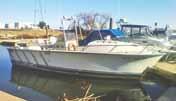
BERTHS & SLIPS

HOME AND MOORING BUSINESS. For sale. Taboga Island, Panama. $395,000. Beautiful 3 bedroom, 4 bath home and thriving mooring business. 2400 sq. ft. Spectacular ocean views. Eight years in business. More information at http:// tabogahome.canbyours.com. Contact (507) 6459-4576, (507) 6442-5712 or tabogaislandmoorings@gmail.com.

BEAUTIFUL BEACH HOME. With rental opportunities. La Manzanilla, Jalisco, Mexico. $810,000 USD. Overlooking Tenacatita Bay, Mexico. Watch sunsets from your terrace in this one-of-a-kind designer home in mint condition! Titled with Bank Trust. Includes three units for personal use or rental. Located 3 hours south of Puerto Vallarta on gorgeous Tenacatita Bay. Three-mile walking beach, protected moorage, small-town ambiance, all amenities. Check us out on TripAdvisor, http://lamanzanillainfo.com. More information at www.alegremar.com. Contact fisherontheriver@hotmail.com or (503) 926-7633 or (315) 351-5014.
CREW
PLAN YOUR MEXICAN GETAWAY NOW.

26-FT
$5,000.
At the brand-new, gorgeous Cielo Y Mar condos. Located in Punta Mita, 35 minutes from PV, available to rent from private owner. On the beach, 10 feet from the water, they offer spectacular views of ocean and mountains, the biggest infinity pool in the area, an endless beach, great surf breaks, great fishing, tremendous views of whales, bird life and the islands. While uncrowded and tranquil, just a five-minute walk to several waterfront restaurants. Choose from a spacious, beautifully furnished one- or three-bedroom unit, or an amazing two-story penthouse with lovely shade trellis on the top floor. See details at website. www.puntamitabeachfrontcondos.com. To reserve, call Doña de Mallorca. (415) 269-5165.
50-FT SLIP PIER 39, SLIP J6. Best offer. Unobstructed views of the Golden Gate Bridge and Coit Tower. Discounted parking at Pier 39 parking garage. No liveaboards. Will consider 1/2 ownership. Please contact for more info. (650) 5204607 or jvandyke100@yahoo.com.
37’+ SLIP, X 11.5’, PRIVATE DOCK. Alameda Estuary. $271/month. Up to 41’. Safe, secure, easy access. Power/water included. (Sorry no liveaboard). Call Ed, (510) 521-2000 or capt.edpayne@att.net.

PART-TIME CREW. For 60-ft motoryacht. Alameda, CA. Part-time crew opportunity for a 60-ft, 59 gross ton motoryacht based in Alameda. Looking for help with routine maintenance, cleaning, provisioning and helping out on Bay cruises with owners and guests. Some long-distance cruising possible. Good opportunity to get sea time on the Bay. Expect 30-40 hours a month. Please email resume, Attn: David to paragonmotoryacht@gmail.com. Salary to be based on experience. (415) 251-5680.
OFFSHORE INSTRUCTION. John and Amanda Neal provide documented ocean passagemaking instruction aboard Mahina Tiare III, their Hallberg-Rassy 46, drawing on their combined 658,000 miles and 81 years experience. More info at www.mahina.com. (360) 378-6131.
JOBS WANTED
PART-TIME CAPTAIN. USCG Master 50 GT with tow, looking for interesting part-time work on the water in Bay Area. Retired successful businessman, mid50s, with great people skills. Contact Michael Long. (707) 483-0191 or michael@ longfinancial.net.


JOB OPPORTUNITIES
SAILING INSTRUCTORS. Nationally recognized as one of the country’s top sailing schools, OCSC Sailing is looking for instructors to join its award-winning team. OCSC’s rigorous curriculum is famous for turning out the best new sailors. You will enjoy thorough training to develop your skills as an instructor. Read what being an instructor at OCSC is like on our website: www.ocscsailing.com/about/people/ sailing_instructor.php. Email resume and cover letter to Johnny McGinty, General Manager at johnny@ocsc.com. (510) 8434200 ext. 120.
HARBORMASTER. City of Monterey. $109,392 - $132,888 annually. The City of Monterey’s world-renowned waterfront area comprises two wharves, two launch ramps, a 413-berth marina, and approximately 200 moorings. The Harbormaster is a full-time management-level position that oversees all operations in the Marina/ Harbor Division of the Community Services Department. The successful candidate will have a strong background in Marina and Harbor operations with a proven track record of maintaining a safe, secure, and professional waterfront. To view the full job flyer, go to: www.governmentjobs. com/careers/montereyca. Contact (831) 646-6942 or Punkar@monterey.org.
LICENSED CAPTAIN WANTED. Wanted: Licensed Captain with towing endorsement for Vessel Assist on the San Francisco Bay and Delta. Preferred if you live on SF waterfront area or Bethel Island. www.vesselassistsanfrancisco.com. (925) 382-4422 or Philipdelano@gmail.com.



MARINE MAINTENANCE. Technology Instructor. Anacortes, WA. Instructor for NW Center of Excellence for Marine Manufacturing & Technology. This program prepares students for marine trades employment in three major areas: marine propulsion, marine vessel systems, and marine composites in a modern facility. A continuing, 9-month-per-year, 35-hr-per- week, full-time tenure track position with Skagit Valley College. $52,801 annually. Teaching may include day, evening, and distance education courses to begin September 2017. Apply online at: http://skagit.edu/news. asp_Q_pagenumber_E_3521. Contact employ@skagit.edu or call with questions, (360) 416-7954.
WANTED: RIB TOUR BOAT CAPTAIN. Pier 39, San Francisco. Wanted: USCG Licensed & experienced RIB Boat captain to operate 28’ RIB boat, Bay Voyager The success of our company, currently rated #1 boat tour in San Francisco on TripAdvisor, relies upon a gold standard of customer service, and safety. Enthusiasm, familiarity with local waterfront and maritime history, 2-5 years diverse maritime work experience, Maritime Academy, other languages, a plus. More information at http://bayvoyager.com. Please email resume and cover letter to charles@bayvoyager.com. Call (510) 612-1251.
BUSINESS OPPORTUNITIES
WYLIECAT SF BAY AREA. “Two men, half a century, and an unwritten handshake.” Boatbuilding operations for sale. Includes molds/tools and everything necessary to start production of the full line of Wyliecat sailboats. See more information at www.wyliecat.com. Call Tom. (925) 376-7338.






www.jimdewitt.com
ADVERTISERS' INDEX
AB Marine 6
ATN 41
Almar Marinas 37
BVI Yacht Charters ....... 97
Bay Marine Boatworks 25
Bay Marine Diesel 108
Berkeley Yacht Club...... 38
Blue Pelican 117
Blue Water Yacht Insurance ................ 110
Boat Yard at Grand Marina, The 20
Breakwater Cove Marina 86
Brisbane Marina 47 Catamaran Company, The 35
Charter Leopard 47 96
City Yachts 7
Club Nautique 49
Corinthian Yacht Club 93
Cover Craft 45
Coyote Point Marina 92
Cruising Yachts 27
DeWitt Studio 119
Doyle Sails 29

eMarine Systems ........ 110

Emery Cove Yacht Harbor 41
Emeryville Marina 44
Equipment Parts Sales 111
Farallon Electronics 46
Farallone Yacht Sales 16
FlopStopper 111
Flying Cloud Yachts .................... 121
Gentry’s Kona Marina 111
Gianola Canvas Products.................. 117
Grand Marina 2
Ground Tackle Marine 87
Hansen Rigging 32 Helms Yacht & Ship Brokers 42
Helmut’s Marine Service 118
Heritage Marine Insurance 39 Hirschfeld Yachts 12
Hood Sails 13
Hydrovane 79
Iverson’s Design 79
JK3 Nautical Enterprises 15
KISS-SSB/Radioteck 87
Kissinger Canvas 71
KKMI – Boatyard 124
Lee Sails 118
List Marine Enterprises 40
Loch Lomond Marina 87
Maine Cats 111
Makela Boatworks 106
Marcha Sailmakers 108
Marina Bay Yacht Harbor 32
Marina Cortez 40
Marina Costa Baja 33
Marina de La Paz 108
Marina El Cid 45
Marina Vallarta 43
Mariners General Insurance 83 Maritime Institute 41
Marotta Yachts 122
Mast Mate 87 McDermott Costa Insurance 43
Minney’s Yacht Surplus 108
Modern Sailing School & Club 36
Napa Valley Marina 10
New Era Yachts 120 Newport Beach Marina Park 18
Norpac Yachts 123
Pineapple Sails 3 Punta Mita Beachfront Condos 118

Swi-Tec America 106













TMM Yacht Charters 97
Twin Rivers Marine Insurance 48



































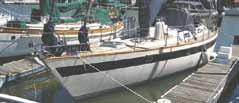







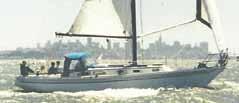






Sch.SCORPIO





















